Chemical molecules that inhibit the slicing mechanism for treating diseases resulting from splicing anomalies
Tazi , et al.
U.S. patent number 10,654,813 [Application Number 16/153,249] was granted by the patent office on 2020-05-19 for chemical molecules that inhibit the slicing mechanism for treating diseases resulting from splicing anomalies. This patent grant is currently assigned to CENTRE NATIONAL DE LA RECHERCHE SCIENTIFIQUE, INSTITUT CURIE, UNIVERSITE DE MONTPELLIER. The grantee listed for this patent is CENTRE NATIONAL DE LA RECHERCHE SCIENTIFIQUE, INSTITUT CURIE, UNIVERSITE DE MONTPELLIER. Invention is credited to David Grierson, Florence Mahuteau-Betzer, Pierre Roux, Jamal Tazi.



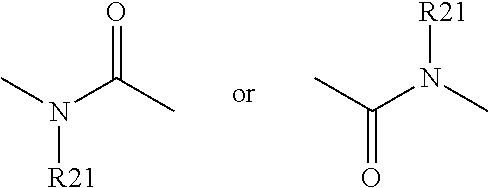

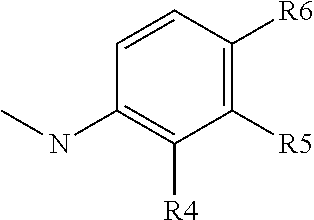
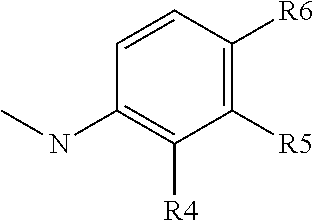
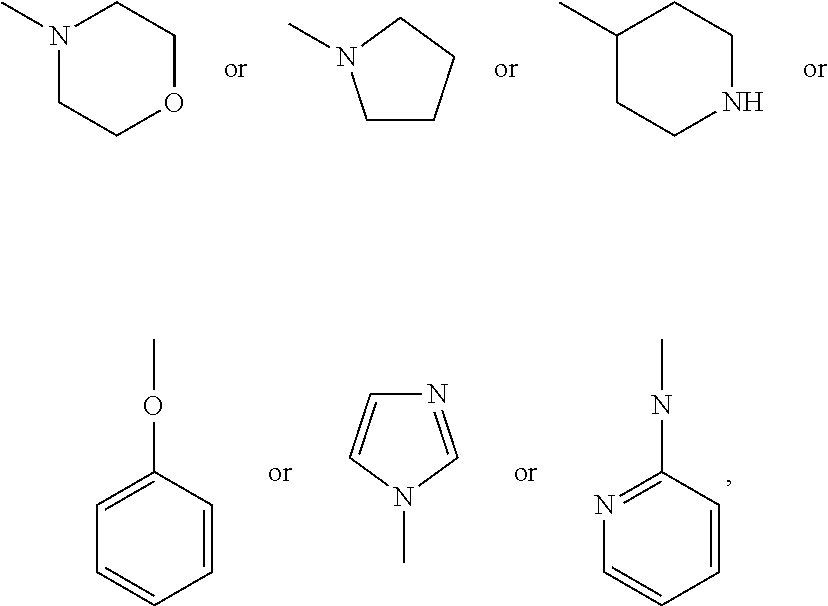



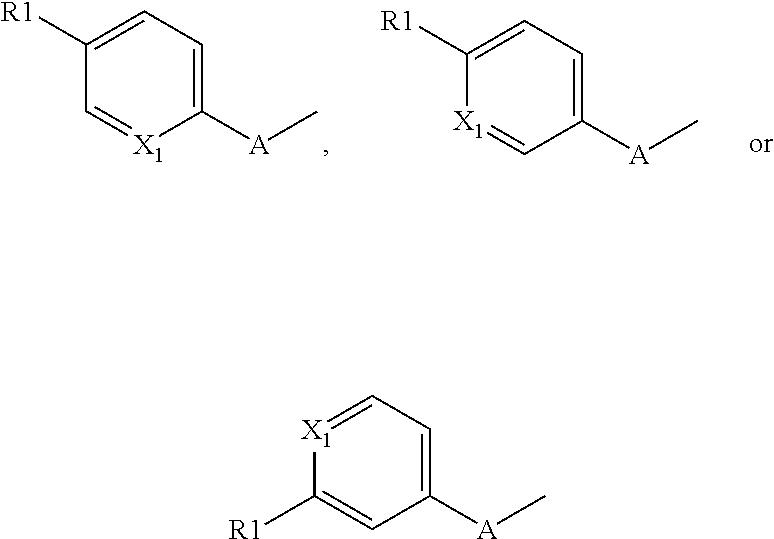
View All Diagrams
| United States Patent | 10,654,813 |
| Tazi , et al. | May 19, 2020 |
Chemical molecules that inhibit the slicing mechanism for treating diseases resulting from splicing anomalies
Abstract
Compounds and pharmaceutically acceptable salts thereof that may be used to treat a disease, for example, Duchenne muscular dystrophy, AIDS, and progeria. The compounds and pharmaceutically acceptable salts thereof may be part of a pharmaceutical composition including a pharmaceutically acceptable support.
| Inventors: | Tazi; Jamal (Clapiers, FR), Grierson; David (Vancouver, CA), Mahuteau-Betzer; Florence (Saint-Remy-les-Chevreuse, FR), Roux; Pierre (Saint Gely du Fesc, FR) | ||||||||||
|---|---|---|---|---|---|---|---|---|---|---|---|
| Applicant: |
|
||||||||||
| Assignee: | CENTRE NATIONAL DE LA RECHERCHE
SCIENTIFIQUE (Paris, FR) INSTITUT CURIE (Paris, FR) UNIVERSITE DE MONTPELLIER (Montpellier, FR) |
||||||||||
| Family ID: | 39720243 | ||||||||||
| Appl. No.: | 16/153,249 | ||||||||||
| Filed: | October 5, 2018 |
Prior Publication Data
| Document Identifier | Publication Date | |
|---|---|---|
| US 20190022037 A1 | Jan 24, 2019 | |
Related U.S. Patent Documents
| Application Number | Filing Date | Patent Number | Issue Date | ||
|---|---|---|---|---|---|
| 14958602 | Dec 3, 2015 | 10130595 | |||
| 14070799 | Jan 12, 2016 | 9233931 | |||
| 12811931 | Dec 10, 2013 | 8604063 | |||
| PCT/EP2009/050280 | Jan 12, 2009 | ||||
Foreign Application Priority Data
| Jan 10, 2008 [FR] | 08 50144 | |||
| Current U.S. Class: | 1/1 |
| Current CPC Class: | A61P 43/00 (20180101); A61P 13/12 (20180101); C07D 213/75 (20130101); A61P 25/28 (20180101); C07D 249/06 (20130101); C07D 401/12 (20130101); A61P 3/10 (20180101); A61P 35/04 (20180101); A61P 27/02 (20180101); A61P 9/10 (20180101); A61P 25/00 (20180101); C07D 213/74 (20130101); A61P 1/16 (20180101); C07D 213/82 (20130101); A61P 7/12 (20180101); C07D 401/14 (20130101); A61P 25/16 (20180101); C07D 233/61 (20130101); A61P 31/18 (20180101); A61P 1/04 (20180101); A61P 19/00 (20180101); C07D 213/38 (20130101); A61P 35/02 (20180101); A61P 31/14 (20180101); A61P 1/18 (20180101); A61P 21/06 (20180101); C07D 213/56 (20130101); C07D 233/64 (20130101); A61P 19/10 (20180101); A61P 17/00 (20180101); A61P 25/24 (20180101); A61P 31/12 (20180101); A61P 35/00 (20180101); C07C 237/30 (20130101); A61P 21/00 (20180101); A61P 15/00 (20180101) |
| Current International Class: | C07D 249/06 (20060101); C07D 213/38 (20060101); C07D 213/56 (20060101); C07D 213/74 (20060101); C07D 213/75 (20060101); C07D 213/82 (20060101); C07D 233/61 (20060101); C07D 401/14 (20060101); C07D 401/12 (20060101); C07C 237/30 (20060101); C07D 233/64 (20060101) |
References Cited [Referenced By]
U.S. Patent Documents
| 2274620 | February 1942 | Szabo |
| 2671805 | March 1954 | Krimmel |
| 3409668 | November 1968 | Palazo et al. |
| 4001416 | January 1977 | Pommer et al. |
| 4434290 | February 1984 | Bisagni et al. |
| 4855308 | August 1989 | Kester et al. |
| 5079363 | January 1992 | Bouisset et al. |
| 5579033 | November 1996 | Rutledge et al. |
| 6268387 | July 2001 | Connor et al. |
| 6419710 | July 2002 | Demeulenaere et al. |
| 8604063 | December 2013 | Tazi |
| 9233931 | January 2016 | Tazi |
| 9969715 | May 2018 | Roux |
| 10130595 | November 2018 | Tazi et al. |
| 2003/0225106 | December 2003 | Askew et al. |
| 2004/0054114 | March 2004 | Mayorga et al. |
| 2004/0132786 | July 2004 | Chyba et al. |
| 2004/0171833 | September 2004 | Buchwald et al. |
| 2005/0154232 | July 2005 | Lardy et al. |
| 2007/0054905 | March 2007 | Tazi et al. |
| 2007/0072915 | March 2007 | Lardy et al. |
| 2007/0129433 | June 2007 | Lardy et al. |
| 2009/0118135 | May 2009 | Reed et al. |
| 2011/0053975 | March 2011 | Tazi et al. |
| 2015/0315173 | November 2015 | Roux et al. |
| 2016/0166519 | June 2016 | Tazi et al. |
| 2018/0222888 | August 2018 | Roux et al. |
| 2019/0022037 | January 2019 | Tazi et al. |
| 1281694 | Jan 2001 | CN | |||
| 1331669 | Jan 2002 | CN | |||
| 1590390 | Mar 2005 | CN | |||
| 1639126 | Jul 2005 | CN | |||
| 1938261 | Mar 2007 | CN | |||
| 374 291 | Apr 1923 | DE | |||
| 38 19 025 | May 1989 | DE | |||
| 2 089 546 | Jan 1972 | FR | |||
| 2 859 474 | Mar 2005 | FR | |||
| 2 859 475 | Mar 2005 | FR | |||
| 995 039 | Jun 1965 | GB | |||
| 1 508 947 | Apr 1978 | GB | |||
| 2 327 675 | Feb 1999 | GB | |||
| 50-95285 | Jul 1975 | JP | |||
| 62-158252 | Jul 1987 | JP | |||
| 11-147874 | Jun 1999 | JP | |||
| 6511104 | Mar 1966 | NL | |||
| 00/37412 | Jun 2000 | WO | |||
| 00/39111 | Jul 2000 | WO | |||
| 03/076406 | Sep 2003 | WO | |||
| 2005/023255 | Mar 2005 | WO | |||
| 2005/025498 | Mar 2005 | WO | |||
| 2005/092832 | Oct 2005 | WO | |||
| 2006/084116 | Aug 2006 | WO | |||
| 2006/133848 | Dec 2006 | WO | |||
| 2007/096647 | Aug 2007 | WO | |||
| 2009/087238 | Jul 2009 | WO | |||
Other References
|
May 17, 2019 Office Action issued in U.S. Appl. No. 15/840,847. cited by applicant . Dec. 12, 2018 Office Action issued in U.S. Appl. No. 15/840,847. cited by applicant . Levine et al., "The First 30 Years of p53: Growing Ever More Complex," Nature Reviews Cancer, vol. 9, pp. 749-758, Oct. 2009. cited by applicant . Suzuki et al., "Design, Synthesis, Enzyme Inhibition, and Tumor Cell Growth Inhibition of 2-anilinobenzamide Derivatives as SIRT1 Inhibitors," Bioorganic & Medicinal Chemistry, vol. 17, pp. 5900-5905, 2009. cited by applicant . Suzuki et al., "2-Anilinobenzamides as SIRT Inhibitors," ChemMedChem, vol. 1, pp. 1059-1062, 2006. cited by applicant . Goh et al., "The Role of Mutant p53 in Human Cancer," Journal of Pathology, vol. 223, pp. 116-126, 2011. cited by applicant . May 19, 2016 Office Action issued in U.S. Appl. No. 14/009,283. cited by applicant . Dec. 20, 2016 Office Action Issued in U.S. Appl. No. 14/009,283. cited by applicant . Lee, "Synthesis of 1-Methyl-3H-1, 4-benzodiazepine-2,5(1H,4H)-dione and Derivatives," Organic Chemistry Department, Research Division Abott Laboratories, vol. 1, Dec. 1964, pp. 235-238. cited by applicant . Sigova et al., "Synthesis and Biological Activity of Arylamides of 2-Methylnicotinic and 2-Phenylindolizine-8-Carboxylic Acids," pp. 174-177, Plenum Publishing Corporation, 1986. cited by applicant . Ikawa et al., "Pd-Catalyzed Amidations of Aryl Chlorides Using Monodentate Biaryl Phosphine Ligands: A Kinetic, Computational, and Synthetic Investigation," Journal of American Chemical Society, vol. 129, No. 43, 2007, pp. 13001-13007. cited by applicant . Ernst et al., "Design and Application of an [alpha]-Helix-Mimetic Scaffold Based on an Oligoamide-Foldamer Strategy; Antagonism of the Bak BH3/Bcl-xL Complex,"Angew. Chem. Int. Ed., vol. 42, No. 5, 2003, pp. 535-539. cited by applicant . Cativiela et al., "A Convenient Synthesis of N-Aryl-1,2-dihydro-2-oxo-3-pyridinecarbox-amides, N-Aryl-N-methyl-1,2-dihydro-2-oxo-3-pyridinecarboxamides and Their 1-Methyl (O-Methyl)-Derivatives," J. Heterrocylic Chem., vol. 19, pp. 1093-1097, 1982. cited by applicant . Chesnokov et al., "Investigation of Naphthyridines IV, Arylamides of 2-Anilinonicotinic Acid and Cyclization of Them to 4-Arylamino-2,3-Benzo-1,8-Naphthyridines," Plenum Publishing Corporation, 1975, pp. 217-218. cited by applicant . Yang et al., "Meta Conjugation Effect on the Torsional Motion of Aminostilbenes in the Photoinduced Intramolecular Charge-Transfer State," Journal of American Chemical Society, No. 129, pp. 13183-13192, 2007. cited by applicant . Berthiol et al., "Heck reaction with heteroaryl halides in the presence of a palladium-tetraphosphine catalyst," Tetrahedron Letters 43, pp. 5625-5628, 2002. cited by applicant . Majima et al., "Cis-Trans Isomerization and Oxidation of Radical Cations of Stilbene Derivatives," Journal of Organic Chemistry, vol. 61, No. 22, pp. 7793-7800, 1996. cited by applicant . Nov. 18, 2016 Office Action issued in European Patent Application No. 09 700 499.8. cited by applicant . Vousden et al., "Blinded by the Light: The Growing Complexity of p53," Cell 137, pp. 413-431, 2009. cited by applicant . Dhizumi et al., "A novel styryl diphenylamine derivative reverts the transformed phenotype of human fibrosarcoma HT1080 cells," British Journal of Cancer, 72, pp. 1219-1223, 1995. cited by applicant . Hulkower et al., "Cell Migration and Invasion Asays as Tools for Drug Discovery," Pharmaceutics, vol. 3, pp. 107-124, 2011. cited by applicant . Desilet et al, "p53-based Anti-cancer Therapies: An Empty Promise?," Curr. Issues Mol. Biol., vol. 12, pp. 143-146, 2010. cited by applicant . Mar. 1, 2017 Office Action issued in U.S. Appl. No. 14/958,602. cited by applicant . Lee etal, "Prognostic Significance of the Co-expression of RON and MET Receptors in Node-Negative Breast Cancer Patients," Clinical Cancer Research. vol. 11, pp. 2222-2228, Mar. 15, 2005. cited by applicant . May 9, 2017 Office Action issued in U.S. Appl. No. 14/009,283. cited by applicant . Chaffer et al., "A Perspective on Cancer Cell Metastasis," Science, vol. 331, Mar. 25, 2011, pp. 1559-1564. cited by applicant . Valastyan et al., "Tumor Metastasis: Molecular Insights and Evolving Paradigms," Cell, vol. 147, Oct. 14, 2011, pp. 275-292. cited by applicant . Leonis et al.; "The Ron Receptor Tyrosine Kinase in Tumorigenesis and Metastasis;" Future Oncol.; Aug. 2007; pp. 441-448; vol. 3, No. 4. cited by applicant . Maggiora et al.; "Overexpression of the RON gene in human breast carcinoma;" Oncogene; 1998; pp. 2927-2933; vol. 16. cited by applicant . Peace et al.; "Ron Receptor Signaling Augments Mammary Tumor Formation and Metastasis in a Murine Model of Breast Cancer;" Cancer Res; Feb. 15, 2005; vol. 65, No. 4. cited by applicant . Shigna et al.; "Cell Motility Is Controlled by SF2/ASF through Alternate Splicing of the Ron Protooncogene;" Molecular Cell; Dec. 22, 2005; pp. 881-890; vol. 20. cited by applicant . Wang et al.; Blocking tumorigenic activities of colorectal cancer cells by a splicing Ron receptor variant defective in the tyrosine kinase domain; Cancer Biology & Therapy; Jun. 11, 2007; pp. 1121-1129; vol. 6, No. 7. cited by applicant . Bardella et al.; "Truncated RON Tyrosine Kinase Drives Tumor Cell Progression and Abrogates Cell-Cell Adhesion Through E-Cadherin Transcriptional Repression;" Cancer Research; Aug. 1, 2004; pp. 5154-5161; vol. 64. cited by applicant . Dec. 1, 2017 Office Action issued in U.S. Appl. No. 14/958,602. cited by applicant . U.S. Appl. No. 12/811,931, filed Aug. 30, 2010, in the name of Jamal Tazi et al (now U.S. Pat. No. 8,604,063). cited by applicant . U.S. Appl. No. 14/070,799, filed Nov. 4, 2013, in the name of Jamal Tazi et al (now U.S. Pat. No. 9,233,931). cited by applicant . Jun. 29, 2018 Office Action issued in U.S. Appl. No. 15/840,847. cited by applicant . Nayak et al; "p53-Induced Apoptosis and Inhibitors of p53;" Current Medicinal Chemistry; 2009; vol. 16; No. 21 pp. 2627-2640. cited by applicant . Hardcastle; "Inhibitors of the MDM2-p53 interaction as anticancer drugs;" Drugs of the Future; 2007; vol. 32; No. 10; pp. 883-896. cited by applicant . Aug. 3, 2011 Search Report issued in European Patent Application No. EP 11 30 5385. cited by applicant . Sep. 28, 2012 Search Report issued in International Patent Application No. PCT/IB2012/051603. cited by applicant . Sep. 28, 2012 Written Opinion issued in International Patent Application No. PCT/IB2012/051603. cited by applicant . Lourenco et al; "Evaluation of anti-tubercular activity of nicotinic and isoniazid analogues;" ARKIVOC; 2007; pp. 181-191. cited by applicant . Park et al; "Photoreaction of 2-Halo-N-pyridinylbenzamide: Intramolecular Cyclization Mechanism of Phenyl Radical Assisted with n-Complexation of Chlorine Radical;" J. Org. Chem. 2001; vol. 66; pp. 2197-2206. cited by applicant . Sep. 5, 2013 Office Action issued in Japanese Patent Application No. 2010-541800. cited by applicant . Sorenson; "Selective N-Arylation of Aminobenzanilides under Mild Conditions Using Triarylbismuthanes;" J. Org. Chem.; 2000; vol. 65; pp. 7747-7749. cited by applicant . Coyne et al; "3,4-Dihydro-2(1H)-quinazolinones;" Journal of Medicincal Chemistry; 1968; vol. 11; No. 6; pp. 1208-1218. cited by applicant . Huang et al; "Expanding Pd-Catalyzed C--N Bond-Forming Processes: The First Amidation of Aryl Sulfonates, Aqueous Amination, and Complementarity with Cu-Catalyzed Reactions;" J. Am. Chem. Soc.; 2003; vol. 125; No. 22; pp. 6653-6655. cited by applicant . Shankaran et al; "Silicon in Benzamide Directed Ortho Metalation, Formation and Reactions of Benzamide Benynes;" Tetrahedron Letters; 1984; vol. 25; No. 27; pp. 2827-2830. cited by applicant . Peet et al; "A Novel Oxamide Rearrangement" J. Heterocyclic Chem.; 1980; vol. 17; pp. 1513-1518. cited by applicant . Ward et al; "Solid Phase Synthesis of Aryl Amines Palladium Catalyzed Amination of Resin-Bound Aromatic Bromides:" Tetrahedron Letters; 1996; vol. 37; No. 39; pp. 6993-6996. cited by applicant . Elter et al; "Uber das 9-Methyl-3-carbolin and das 6-Methly-3-carbolin;" Monatshefte Fuer Chemie; 1950; vol. 81; pp. 404-413. cited by applicant . Gennarro; "Pyrido[3,2-b][1,4]benzothiazine (1-Azaphenothiazine);" J. Org. Chem.; 1959; vol. 24; pp. 1156-1157. cited by applicant . Chemical Abstracts Service; "Aminopyridines;" XP-002499122; 1966. cited by applicant . Tazi et al; "The spliceosome: a novel multi-faceted target for therapy;" Trends in Biochemical Sciences; Aug. 2005; vol. 30; No. 8; pp. 494-478. cited by applicant . Jul. 26, 2010 Written Opinion issued in International Patent Application No. PCT/EP2009/050280. cited by applicant . Jul. 26, 2010 Search Report issued in International Patent Application No. PCT/EP2009/050280. cited by applicant . Ito et al; "A medium-term rat liver bioassay for rapid in vivo detection of carcinogenic potential of chemicals;" Cancer Sci; Jan. 2003; vol. 94; No. 1; pp. 3-8. cited by applicant . Yang et al; "Photoinduced Single- versus Double-Bond Torsion in Donor-Accepted-Substituted trans-Stilbenes;" J. Phys. Chem. A; 2006; vol. 110; pp. 8003-8010. cited by applicant . Aug. 24, 2012 Office Action issued in U.S. Appl. No. 12/811,931. cited by applicant . Jan. 1, 2013 Office Action issued in U.S. Appl. No. 12/811,931. cited by applicant . Aug. 5, 2013 Notice of Allowance issued in U.S. Appl. No. 12/811,931. cited by applicant . Jul. 10, 2013 Office Action issued in Chinese Patent Application No. 20098010636.1. cited by applicant . U.S. Appl. No. 14/009,283, filed Oct. 1, 2013. cited by applicant . Apr. 6, 2015 Office Action issued in U.S. Appl. No. 14/070,799. cited by applicant . Chesnokov, et al., "Synthesis and Biological Activity of Substituted Amides of 2-Aminonicotinic Acid," Perm Pharmaceutical Institute, Translated from Khimiko-Farmatsevticheskii Zhurnal, vol. 7, No. 11, pp. 20-23, Nov. 1973. cited by applicant . Cuffini, et al., "Nine N-aryl-2-choloronicotinamides: supramolecular structures in one, two and three dimensions," Acta Crystallographica Section B, B62 pp. 651-665, 2006. cited by applicant . Jozwiak, et al., "Behaviour of N-Pyridylbenzamides versus Benzanilides in the ortho-Directed Lithiation of Masked Aromatic Carboxylic Acids," Eur. J. Org. Chem., pp. 3254-3261, 2004. cited by applicant . Kumar, et al., "Exploring hydrogen-bond capable backbone and ligating topologies: Co(II) coordination polymers derived from mixed ligand systems," Journal of Molecular Structure, 796, pp. 139-145, 2006. cited by applicant . Lam, et al., "?-Nitrogen activating effect in the room temperature copper-promoted N-arylation of heteroarylcarboxamides with phenyl siloxane or p-toluylboronic acid," Tetrahedron Letters 42, pp. 2427-2429, 2001. cited by applicant . Singha, et al., "1H and 13C NMR spectral studies of conformation of some N-(2-pyridinyl)-3-pyridinecarboxamides," Journal of Molecular Structure, 449, pp. 91-98, 1998. cited by applicant . Sigova, et al., "Synthesis and Biological Activity of Arylamides of 2-Methylnicotinic and 2-Phenylindolizine-8-Carboxylic Acids," Perm Pharmaceutical Institute, Translated from Khimiko-Farmatsevticheskii Zhumal, vol. 19, No. 3, pp. 159-163, Mar. 1985. cited by applicant . Prashad, et al., "A new reaction of N-aryl-2-pyrimidinamines with triphosgene," Tetrahedron Letters, 48, pp. 2087-2089, 2007. cited by applicant . Sep. 10, 2013 Search Report issued in French Patent Application No. FR 1350599. cited by applicant . Sep. 5, 2013 Search Report issued in French Patent Application No. 1350600. cited by applicant . V. Peesapati et al., "Convenient Synthesis of Some Styrylpyridinium Dyes Containing Aminobis[benzenamine] Moiety," Indian Journal of Chemistry, vol. 35B, Mar. 1996, pp. 207-212. cited by applicant . Von Adolf Emil Siegrist, "Preparation of Styryl and Stilbenyl Derivatives of 1 H-Benzotriazoles," Helvetica Chimica Acta, vol. 64, 1981, No. 68, pp. 662-680. cited by applicant . Jye-Shane Yang et al., "Origin of the N-methyl and N-phenyl Substituent Effects on the Fluorescence Vibronic Structures of trans-4-aminostilbene and its Derivatives in Hexane," Photochem. Photobiol. Sci., 2003, vol. 2, pp. 1225-1231. cited by applicant . Okumura et al., "4-Oxo-1,2,3,4-Tetrahydroquinazolines. 11. Synthesis of 1-Alkyl- and 1-[2-(Disubstituted amino)ethyl]-2-methyl-3-aryl-4-oxo-1,2,3,4-tetrahydroquinazolines," Chemical Research Laboratory, vol. 11, pp. 788-792, Jul. 1968. cited by applicant . Okumura et al., "4-Oxo-1,2,3,4-tetrahydroquinazolines. 1. Syntheses and Pharmacological Properties of 2-Methyl-3-aryl-4-oxo-1,2,3,4-tetrahydroquinazolines and Their 1-Acyl Derivatives," Chemical Research Laboratory, vol. 11, pp. 348-352, Mar. 1968. cited by applicant . Correa et al, "Novel Alternative for the N--N Bond Formation through a PIFA-Mediated Oxidative Cyclization and Its Application to the Synthesis of Indazol-3-Ones," J. Org. Chem., vol. 71, pp. 3501-3505, 2006. cited by applicant . Katritsky et al., "Carbon Dioxide: A Reagent for the Simultaneous Protection of Nucleophilic Centres and Activation of Alternative Locations to Electrophilic Attack. Part III. A New Synthetic Method for the Ortho-Substitution of N-Monoalkylanilines," Department of Chemistry, University of Florida, May 1986. cited by applicant . Yamada et al., "4-Oxo-1,2,3,4-Tetrahydroquinazolines. V. Ring Expansion Reaction of 1-Methyl-3-phenyl-4-oxo-3-4-dihydroquinazolinium Bromide with Diazoalkanes," Bulletin of the Chemical Society of Japan, vol. 47, No. 2, pp. 339-340, 1974. cited by applicant . Pakrashi et al., "Studies on 4-Quinazolinones. V. Reductive Ring Cleavage by Metal Hydrides," J. Org. Chem., vol. 37, No. 20, pp. 3143-3147, 1972. cited by applicant . Gatta et al., "Su Alcune Reazioni Con Antranilammidi," II Farmaco--Ed. Sc., vol. 25, No. 11, pp. 830-841, 1970. cited by applicant . Jan. 8, 2016 Office Action Issued in U.S. Appl. No. 14/009,283. cited by applicant . Hui et al., "Mutant p53 in MDA-MB-231 Breast Cancer Cells is Stabilized by Elevated Phospholipase D Activity and Contributes to Survival Signals Generated by Phospholipase D," Oncogene vol. 25, pp. 7305-7310, 2006. cited by applicant . Mary S Sakla et al. "Induction of full-length curvival motor neuron by polyphenol botanical compounds." Human Genetics, Springer, Berlin, DE, vol. 122, pp. 635-643, Oct. 26, 2007. cited by applicant. |
Primary Examiner: Pagonakis; Anna
Attorney, Agent or Firm: Oliff PLC
Parent Case Text
This is a Divisional application of Ser. No. 14/958,602 filed on Dec. 3, 2015, which is a Continuation application of Ser. No. 14/070,799 filed Nov. 4, 2013 (now U.S. Pat. No. 9,233,931), which is a Divisional of application Ser. No. 12/811,931 filed Aug. 30, 2010 (now U.S. Pat. No. 8,604,063), which is a 371 of International Application No. PCT/EP2009/050280 filed Jan. 12, 2009. This patent application claims the priority of French patent application FR08/50144 filed on Jan. 10, 2008. The disclosure of the prior applications is hereby incorporated by reference herein in its entirety.
Claims
What is claimed is:
1. A compound selected from the group consisting of: TABLE-US-00004 Structure ##STR00237## ##STR00238## ##STR00239## ##STR00240## ##STR00241## ##STR00242## ##STR00243## ##STR00244## ##STR00245## ##STR00246## ##STR00247## ##STR00248## ##STR00249## ##STR00250## ##STR00251## ##STR00252## ##STR00253## ##STR00254## ##STR00255## ##STR00256## ##STR00257## ##STR00258## ##STR00259## ##STR00260## ##STR00261## ##STR00262## ##STR00263## ##STR00264## ##STR00265## ##STR00266## ##STR00267## ##STR00268## ##STR00269## ##STR00270## ##STR00271## ##STR00272## ##STR00273## ##STR00274## ##STR00275## ##STR00276## ##STR00277## ##STR00278## ##STR00279## ##STR00280## ##STR00281## ##STR00282## ##STR00283## ##STR00284## ##STR00285## ##STR00286## ##STR00287## ##STR00288## ##STR00289## ##STR00290## ##STR00291## ##STR00292## ##STR00293## ##STR00294## ##STR00295## ##STR00296## ##STR00297## ##STR00298## ##STR00299## ##STR00300## ##STR00301## ##STR00302## ##STR00303## ##STR00304## ##STR00305## ##STR00306## ##STR00307## ##STR00308## ##STR00309## ##STR00310## ##STR00311## ##STR00312## ##STR00313## ##STR00314## ##STR00315## ##STR00316## ##STR00317## ##STR00318## ##STR00319## ##STR00320## ##STR00321## ##STR00322## ##STR00323## ##STR00324## ##STR00325## ##STR00326## ##STR00327## ##STR00328## ##STR00329## ##STR00330## ##STR00331## ##STR00332## ##STR00333## ##STR00334## ##STR00335## ##STR00336## ##STR00337## ##STR00338## ##STR00339## ##STR00340## ##STR00341## ##STR00342## ##STR00343## ##STR00344## ##STR00345## ##STR00346## ##STR00347## ##STR00348## ##STR00349## ##STR00350## ##STR00351## ##STR00352## ##STR00353## ##STR00354## ##STR00355## ##STR00356## ##STR00357## ##STR00358## ##STR00359## ##STR00360##
##STR00361## ##STR00362## ##STR00363## ##STR00364## ##STR00365## ##STR00366## ##STR00367## ##STR00368## ##STR00369## ##STR00370## ##STR00371## ##STR00372## ##STR00373## ##STR00374## ##STR00375## ##STR00376## ##STR00377## ##STR00378## ##STR00379## ##STR00380##
and pharmaceutically acceptable salts thereof.
2. A pharmaceutical composition, comprising at least one compound of claim 1 and a pharmaceutically acceptable support.
Description
BACKGROUND
Certain indole derivative compounds such as ellipticine derivatives and aza-ellipticine derivatives are already known as intercalating molecules for correcting dysfunctions in gene expression, notably in DNA replication. They have been more specifically described for treating diseases such as cancer, leukemia or AIDS (see in particular patents FR 2,627,493, FR 2,645,861, FR 2,436,786).
Concerning current treatments for AIDS, the various approaches aimed at reducing viral load in patients infected by HIV utilize molecules intended to inhibit the enzymatic activity of viral reverse transcriptase or of the protease involved in virus protein maturation. Regarding reverse transcriptase inhibitors, these can be nucleosidic (NRTIs), non-nucleosidic (NNRTIs) or nucleotidic in nature. The purpose of using these compounds is to prevent a DNA copy of the retroviral genome from being produced and, consequently, from being integrated into the genome of the host cell. Protease inhibitors (PIs) interfere with the proper maturation of viral proteins and cause the production of incomplete particles with altered infectious capacities. There is another type of anti-retroviral compound used for its ability to prevent viruses from entering the cell. These entry inhibitors can be either peptides that interfere with the fusion of viral glycoproteins gp41 or gp120 with the membrane of CD4 cells or molecules that target HIV cellular co-receptors CCR5 and CXCR4. The absence of cellular proteins resembling HIV integrase has also been exploited to develop novel anti-HIV molecules that inhibit this enzymatic activity. Although a number of integrase inhibitors are in the clinical trial phase, no molecule is yet available on the market.
Concerning cancers, more than 90% originate from the malignant transformation of epithelial cells and, in most cases, cancer patient mortality is not due to the primary tumor but to metastases that derive from it. This malignant progression leading to metastases and their subsequent invasion initially involves the loss of cellular adhesion and an increase in motility, thus allowing invasive cells to escape from the initial site and to colonize target tissues. In a great number of cases, it appears that the tumor progression mechanism is associated with aberrant slicing that leads to the formation of isoforms with proto-oncogenic activity. Currently, no molecule with anti-invasive functionality exists. This underlines the lack of a genuinely powerful means of fighting metastases. The current absence of this type of molecule on the market confers on them an economic potential of the highest order.
Duchenne muscular dystrophy (DMD) is a serious illness resulting from mutations in the dystrophin gene. The absence of this protein leads to degeneration of skeletal and cardiac muscles. Several therapeutic strategies are currently envisaged, including so-called exon skipping, whose principle is to cut from dystrophin the internal exon carrying the mutation, thus allowing the production of a shorter but functional dystrophin.
Laminopathies are disorders that lead to an unsatisfactory quality of life, require expensive care and, in many cases, can lead to premature death (i.e., laminopathies of striated muscle tissues and laminopathies characterized by premature aging). Laminopathies are caused by functional changes in lamins, ubiquitous proteins located in the cell nucleus, and in their molecular partners. Most cases of progeria, or early-aging syndrome, are caused by a recurring de novo point mutation (c.1824C>T, "G608G") occurring in exon 11, i.e., in the part of the gene specifically coding for lamin A. It has been shown that this mutation alters splicing mechanisms and leads to the production of a truncated lamin A precursor ("progerin", Lamin.DELTA.50, p.V607_Q656del), exerting a dominant negative effect on residual wild proteins.
In all these pathologies, the splicing process plays a key role. This intracellular splicing process consists of eliminating introns in pre-messenger RNAs to produce mature messenger RNAs that can be used by the translation mechanism of the cell (SHARP, Cell, vol. 77, p. 805-815, 1994). In the case of alternative splicing, the same precursor can be the source of messenger RNAs coding for proteins with distinct functions (BLACK, Annu. Rev. Biochem. vol. 72, p. 291-336, 2003). The precise selection of 5' and 3' splicing sites is thus a mechanism that generates diversity and that can lead to the regulation of gene expression according to the type of tissue or during the development of an organism. The factors involved in this selection include a family of proteins called SR, characterized by the presence of one or two RNA recognition motifs (RRM) and a domain rich in arginine and serine residues called an RS domain (MANLEY & TACKE, Genes Dev., vol. 10, p. 1569-1579, 1996). By binding to short exon or intron sequences of the pre-mRNA, called ESE (exonic splicing enhancer) or ISE (intronic splicing enhancer), SR proteins are able to activate, in a dose-dependant manner, sub-optimal splicing sites and to enable the inclusion of exons (GRAVELEY, RNA, vol. 6, p. 1197-1211, 2000). The activity of an SR protein in alternative splicing is specific insofar as the inactivation of the corresponding gene is lethal (WANG et al., Mol. Cell, vol. 7, p. 331-342, 2001).
Sequencing of the human genome and analysis of EST (expressed sequence tag) banks has revealed that 65% of genes are expressed in the form of alternatively spliced variants (EWING & GREEN, Nat. Genet., vol. 25, p. 232-234, 2000; JOHNSON et al., Science, vol. 302, p. 2141-2144, 2003). This mechanism is thus a favored target of modifications that can affect the factors involved in regulating splicing and of mutations that affect the sequences necessary for this regulation. At present, it is estimated that roughly 50% of the point mutations responsible for genetic diseases induce aberrant splicing. These mutations can interfere with splicing by inactivating or creating splicing sites, but also by modifying or generating regulating elements such as splicing enhancers or splicing silencers in a particular gene (CARTEGNI et al., Nat. Rev. Genet., vol. 3, p. 285-298, 2002; TAZI et al., TIBS, vol. 40, p. 469-478, 2005).
The strategies currently developed to correct these splicing defects rest on the use of various types of molecules (TAZI et al., cited above, 2005).
One strategy aimed at developing novel molecules to correct or eliminate abnormal splicing, for example, rests on the overexpression of proteins that interfere with this type of splicing (NISSIM-RAFINIA et al., Hum. Mol. Genet., vol. 9, p. 1771-1778, 2000; HOFINANN et al., Proc. Natl. Acad. Sci. U.S.A., vol. 97, p. 9618-9623, 2000).
Other strategies rest on the use of antisense oligonucleotides (SAZANI et al., Nat. Biotechnol., vol. 20, p. 1228-1233, 2002; SAZANI & KOLE, Prog. Mol. Subcell. Biol., vol. 31, p. 217-239, 2003) or of PNA (CARTEGNI et al., Nat. Struct. Biol., vol. 10, p. 120-125, 2003) enabling, respectively, the inhibition or activation of a splicing event.
Yet another strategy rests on the identification of compounds that influence the splicing efficiency of the pre-mRNA of interest (ANDREASSI et al., Hum. Mol. Genet., vol. 10, p. 2841-2849, 2001).
Lastly, a strategy based on the use of trans-splicing to replace mutant exons has been described (LIU et al., Nat. Biotechnol., vol. 20, p. 47-52, 2002).
One of the disadvantages of the developed strategies cited above to correct or eliminate abnormal splicing is their production cost. Indeed, the cost of producing antisense oligonucleotides that must be modified to improve their stability, and that of PNA molecules, is high.
Another disadvantage of the developed strategies cited above is that they require the use of expression vectors, such as, for example, for the strategy based on the use of trans-splicing.
International application WO05023255, under French priority of requests FR0310460 and FR0400973, filed by the Applicant, disclosed the use of indole derivatives to treat diseases related to the pre-messenger RNA splicing process in the cell.
Thus it was recently shown that certain indole derivatives prove particularly effective in treating metastatic cancer and in treating AIDS (BAKKOUR et al., PLoS Pathogens, vol. 3, p. 1530-1539, 2007).
However, the compounds described have a flat structure with four rings that have the disadvantage of intercalating between DNA bases and can thus lead to cellular toxicity.
SUMMARY
In order to minimize the risk that these indole derivatives intercalate between DNA bases, the inventors developed novel compounds that are particularly effective in treating diseases related to the splicing process, but which, in a surprising manner, have a cellular toxicity that is clearly less than the indole derivatives of the prior art. In addition, these compounds are able to selectively inhibit certain splicing events.
Thus, the invention relates to novel indole derivative compounds for the preparation of compositions useful for the treatment of diseases resulting from changes in splicing processes.
BRIEF DESCRIPTION OF DRAWINGS
FIG. 1 shows the detail of a polyacrylamide gel obtained presenting the various isoforms obtained (Nef2, Rev1, Rev2, Nef3, Nef4, Nef5, Tat1 and Tat2) for the untreated cells (Clt) or treated with the compounds IDC16, C48, C49, C55 or C56.
FIG. 2 shows that the compounds MB260, FMB008 and FMMB22.3 strongly inhibit cell migration compared to negative control (CTL).
DETAILED DESCRIPTION OF EMBODIMENTS
A first object of the invention thus relates to a compound of one of the following formulas (I) to (XXI):
##STR00001## ##STR00002## ##STR00003## wherein, X1 represents a nitrogen atom, a NR11 group or a CR10 group with R10 chosen among the group comprising a hydrogen atom or an NR11R12 or OR11 group with R11 and R12 representing independently of the other a hydrogen atom, a C1 to C3 alkyl group, preferably a methyl or trifluoromethyl group; with X1 corresponds to NR11 in compounds with formulas XI, XV, XVIII and XXI, and to the chemically distinct isomeric forms XI', XV', XVIII' and XXI' when X1 corresponds to a nitrogen atom; R1 represents a hydrogen atom, an NR11R12 or OR12 group with R11 and R12 as defined above, with X1 representing a CH group when R1 represents an NR11R12 or OR12 group, preferably R1 represents an OR12 group and more specifically an OCH.sub.3 group; A represents a
##STR00004## amide group or a
##STR00005## alcene group;
Y1 represents a nitrogen atom or a CR13 group with R13 chosen among the group comprising a hydrogen atom or a
##STR00006## group, preferably a
##STR00007## group; R2 represents a hydrogen, halogen or oxygen atom, in order to form a carbonyl group, or a C1 to C3 alkyl group, preferably a methyl or trifluoromethyl group, an NR14R15 group, an SO2R14R15 group or a C(.dbd.O)NR14R15 group with R14 and R15 representing independently of the other: a hydrogen atom, or a linear or branched C1 to C10 alkyl group, preferably C1 to C6 alkyl group, and most preferably C1 to C3 alkyl group, wherein one or more carbon atoms can be substituted by a nitrogen atom, said alkyl group optionally being substituted by one or more --OH and/or .dbd.O groups and/or by a group, substituted or unsubstituted, such as:
##STR00008## preferably
##STR00009## with R2 representing a hydrogen atom when Y1 represents a CR13 group with R13 representing a
##STR00010## group; R3 represents a hydrogen atom or an oxygen atom, in order to form a carbonyl group, or a C1 to C3 alkyl group, preferably a methyl or trifluoromethyl group, or an NR14R15 group, an SO2R14R15 or C(.dbd.O)NR14R15 group as defined above with R3 representing a hydrogen atom when R2 represents a halogen atom, an NR14R15, SO2R14R15 or C(.dbd.O)NR14R15 group and when Y1 represents a CR13 group with R13 representing a
##STR00011## group; X2 represents a nitrogen atom or a CR16 group with R16 chosen among the group comprising a hydrogen atom or a
##STR00012## group; R4 represents a hydrogen atom or a C1 to C3 alkyl group (preferably a methyl group) or a C(.dbd.O)NR14R15 group with R4 representing a hydrogen atom or a C1 to C3 alkyl group when R5 or R6 is different than a hydrogen atom; R5 represents a hydrogen atom, a C(.dbd.O)NR14R15 group or a
##STR00013## group with R5 representing a hydrogen atom, when R4 or R6 is different than a hydrogen atom; R6 represents a hydrogen atom, or a C(.dbd.O)NR14R15 group or a
##STR00014## group, preferably R6 represents a C(.dbd.O)NR14R15 group, and with R6 representing a hydrogen atom when R5 is different than a hydrogen atom or when R4 is different than a hydrogen atom or a C1 to C3 alkyl group; R7 represents a hydrogen atom, an NR11R12 or OR12 group with R11 and R12 as defined above, preferably R7 represents a hydrogen atom, and with X2 representing a CH group when R7 represents an NR11R12 or OR12 group; Y2 represents a nitrogen atom or a CR11 group with R11 chosen among the group comprising a hydrogen atom, a
##STR00015## group or a
##STR00016## group where R17 represents: a hydrogen atom, or a linear or branched C1 to C13 alkyl group, wherein one or more carbon atoms can be substituted by a nitrogen atom, said alkyl group optionally being substituted by one or more --OH and/or .dbd.O groups; with Y2 representing a nitrogen atom or a CR11 group with R11 being a hydrogen atom, when R8 or R8' is different than a nitrogen atom or a CH group and when R8' is different than a hydrogen or halogen atom R8 and R8' represents a hydrogen or halogen atom, a
##STR00017## or a C(.dbd.O)NR18R19 group with R18 and R19 representing independently of the other: a hydrogen atom, or a linear or branched C1 to C13 alkyl group, wherein one or more carbon atoms can be substituted by a nitrogen atom, said alkyl group optionally being substituted by one or more --OH and/or .dbd.O groups and/or by a group, substituted or unsubstituted, such as:
##STR00018## preferably
##STR00019## with R8 representing a hydrogen or halogen atom, when Y2 is different than a nitrogen atom or a CH group and when R8' is different than a hydrogen or halogen atom; and with R8' representing a hydrogen or halogen atom, when Y2 is different than a nitrogen atom or a CH group and when R8 is different than a hydrogen or halogen atom; X3 represents an oxygen atom, an NOR20 or NNHR20 group with R20 representing a hydrogen atom or a C1 to C6 alkyl group; X4 represents a CH2 or CO group; R21 and R22 represent independently of the other a hydrogen atom or a methyl group, preferably a hydrogen atom; R23 represents a
##STR00020## group; pharmaceutically acceptable salts of said compounds, isomers thereof and/or mixtures of same.
"Halogen atom" means the group comprised of F, Cl, Br and I, preferably said halogen atom is a chlorine atom.
All the compounds disclosed in the examples are in the scope of the present invention.
According to a preferred embodiment, the inventive compound has formula (I).
According to a particular embodiment of said preferred embodiment, the inventive compound has formula (Ia) as follows:
##STR00021##
Preferably, said compound is selected among the group comprising: N-(4-Methoxy-phenyl)-2-[6-(N'-(4-Methoxy-phenylnicotinamido)-pyridin-2-yl- amino)-hexylamino]-nicotinamide; 2-(2-Dimethylamino-ethylamino)-N-(4-trifluoromethoxy-phenyl)-nicotinamide- ; 2-(3-Dimethylamino-propylamino)-N-(4-trifluoromethoxy-phenyl)-nicotinami- de; 2-(3-Diethylamino-propylamino)-N-(4-trifluoromethoxy-phenyl)-nicotinam- ide; 2-(4-Hydroxy-butylamino)-N-(4-trifluoromethoxy-phenyl)-nicotinamide; N-(4-Trifluoromethoxy-phenyl)-2-[6-(N'-(4-Trifluoromethoxy-phenylnicotina- mido)-pyridin-2-ylamino)-hexylamino]-nicotinamide; N-(3-Diethylamino-propyl)-3-[3-(3-methoxybenzamido)-phenylamino]-benzamid- e; N-(3-Methyl-butyl)-3-methyl-4-[3-(4-methoxybenzamido)-phenylamino]-benz- amide; and (N-Diethylamino)-3-(1-{3-[4(4-methoxybenzamido)-phenylamino]-ph- enyl}-1H-1,2,3-triazol-4-yl)-methylamine; 2-Bromo-N-(4-dimethylamino-phenyl)-benzamide; 2-Chloro-N-(4-dimethylamino-phenyl)-nicotinamide; 2-(2-Dimethylamino-ethylamino)-N-(4-methoxy-phenyl)-nicotinamide; 2-(2-Dimethylamino-ethylamino)-N-(4-methoxy-phenyl)-benzamide; 2-(3-Diethylamino-ethylamino)-N-(4-methoxy-phenyl)-benzamide; 2-(3-Dimethylamino-propylamino)-N-(4-methoxy-phenyl)-benzamide; 2-(4-Hydroxy-butylamino)-N-(4-methoxy-phenyl)-benzamide; 2-(3-Imidazol-1-yl-propylamino)-N-(4-methoxy-phenyl)-benzamide; 2-Chloro-N-(4-trifluoromethoxy-phenyl)-nicotinamide; 2-Bromo-N-(4-trifluoromethoxy-phenyl)-benzamide; 2-(3-Imidazol-1-yl-propylamino)-N-(4-trifluoromethoxy-phenyl)-nicotinamid- e; 2-(2-Diethylamino-ethylamino)-N-(4-trifluoromethoxy-phenyl)-benzamide; 2-(3-Dimethylamino-propylamino)-N-(4-trifluoromethoxy-phenyl)-benzamide; 2-(3-Diethylamino-propylamino)-N-(4-trifluoromethoxy-phenyl)-benzamide; 2-(4-Hydroxy-butylamino)-N-(4-trifluoromethoxy-phenyl)-benzamide; 2-(6-Amino-hexylamino)-N-(4-trifluoromethoxy-phenyl)-benzamide; 2-(3-Imidazol-1-yl-propylamino)-N-(4-trifluoromethoxy-phenyl)-benzamide; and 2-(4-Diethylamino-1-methyl-butylamino)-N-(4-trifluoromethoxy-phenyl)-- benzamide.
In a particularly preferred manner, the compound is selected among: 2-(2-Dimethylamino-ethylamino)-N-(4-methoxy-phenyl)-nicotinamide; 2-(2-Dimethylamino-ethylamino)-N-(4-methoxy-phenyl)-benzamide; 2-(3-Imidazol-1-yl-propylamino)-N-(4-trifluoromethoxy-phenyl)-benzamide.
According to another particular embodiment of said preferred embodiment, the inventive compound has formula (Ib) as follows:
##STR00022##
Preferably, said compound is selected among the group comprising: 4-Benzoylamino-N-(2-diethylamino-ethyl)-benzamide; N-(3-Methyl-butyl)-3-[3-(4-methoxy-benzoylamino)-phenylamino]-benzamide; N-(3-[3-(4-Diethylaminomethyl-[1,2,3]triazol-1-yl)-phenylamino]-phenyl)-4- -methoxy-benzamide; N-(3-{4-[4-(3-Hydroxy-propyl)-[1,2,3]triazol-1-yl]-phenylamino}-phenyl)-4- -methoxy-benzamide; and N-(3-Methyl-butyl)-4-[3-(4-methoxybenzamido)-phenylamino]-benzamide. In a particularly preferred manner, the compound is N-(3-Methyl-butyl)-3-[3-(4-methoxy-benzoylamino)-phenylamino]-benzamide or N-(3-{4-[4-(3-Hydroxy-propyl)-[1,2,3]triazol-1-yl]-phenylamino}-phenyl- )-4-methoxy-benzamide.
According to a second preferred embodiment, the inventive compound has formula (II), preferably formula (IIa) as follows:
##STR00023##
Preferably, said compound is selected among the group comprising: 2-(3-Dimethylamino-propylamino)-N-pyridin-3-yl-benzamide; 2-(3-Imidazol-1-yl-propylamino)-N-pyridin-3-yl-benzamide; 2-(2-Dimethylamino-ethylamino)-N-pyridin-3-yl-nicotinamide; 2-(2-Diethylamino-ethylamino)-N-pyridin-3yl-nicotinamide; 2-(3-Dimethylamino-propylamino)-N-pyridin-3-yl-nicotinamide; 2-(3-Diethylamino-propylamino)-N-pyridin-3-yl-nicotinamide; 2-(3-Imidazol-1-yl-propylamino)-N-pyridin-3-yl-nicotinamide; 2-Bromo-N-pyridin-3-yl-benzamide; 2-Bromo-N-(4-methoxy-phenyl)-benzamide; 2-Chloro-N-(4-methoxy-phenyl)-nicotinamide; 2-Chloro-N-pyridin-3-yl-nicotinamide; and 2-(3-Diethylamino-propylamino)-N-pyridin-3-yl-benzamide.
In a particularly preferred manner, the compound is 2-Bromo-N-(4-methoxy-phenyl)-benzamide or 2-Chloro-N-(4-methoxy-phenyl)-nicotinamide.
According to a third preferred embodiment, the inventive compound has formula (III), preferably formula (IIIa) as follows:
##STR00024##
Preferably, said compound is selected among the group comprising: N-(4-pyridyl)-2-[6-(N'-(4-pyridylbenzamido)-phenylamino)-1-hydroxybutylam- ino]-benzamide; 2-(3-Diethylamino-propylamino)-N-pyridin-4-yl-nicotinamide; 2-(3-Imidazol-1-yl-propylamino)-N-pyridin-4yl-nicotinamide; N-(3-Diethylamino-propyl)-3-[3-(3-methoxybenzamido)-phenylamino]-benzamid- e; 3-(1-{3-[3-methoxybenzamido)-phenylamino]-phenyl}-1H-1,2,3-triazol-4-yl- )-propan-1-ol; N-(3-Diethylamino-propyl)-3-methyl-4-[3-(3-methoxybenzamido)-phenylamino]- -benzamide; N-(3-Methyl-butyl)-4-[3-(3-methoxybenzamido)-phenylamino]-benzamide; 3-(1-{4-[3-methoxybenzamido)-phenylamino]-phenyl}-1H-1,2,3-triazol-4-yl)-- propan-1-ol; (N-Diethylamino)-3-(1-{3-[3-methoxybenzamido)-phenylamino]-phenyl}-1H-1,2- ,3-triazol-4-yl)-methylamine; 3-(1-{4-[3-methoxybenzamido)-phenylamino]-phenyl}-1H-1,2,3-triazol-4-yl)-- propan-1-ol; N-(3-Diethylamino-propyl)-4-[4-(3-methoxybenzamido)-phenylamino]-benzamid- e; N-(3-Diethylamino-propyl)-3-methyl-4-[4-(3-methoxybenzamido)-phenylamin- o]-benzamide; N-(3-methyl-butyl)-3-methyl-4-[4-(3-methoxybenzamido)-phenylamino]-benzam- ide; (N-Diethylamino)-3-(1-{4-[4-(3-methoxybenzamido)-phenylamino]-phenyl}- -1H-1,2,3-triazol-4-yl)-methylamine; 3-(1-{4-[3-methoxybenzamido)-phenylamino]-phenyl}-1H-1,2,3-triazol-4-yl)-- propan-1-ol; N-(3-Diethylamino-propyl)-3-[4-(3-methoxybenzamido)-phenylamino]-benzamid- e; N-(3-methyl-butyl)-3-[4-(3-methoxybenzamido)-phenylamino]-benzamide; 2-Chloro-N-(3-methoxy-phenyl)-nicotinamide; 2-(3-Dimethylamino-propylamino)-N-(3-methoxy-phenyl)-nicotinamide; 2-Bromo-N-pyridin-4-yl-benzamide; 2-Bromo-N-(3-methoxy-phenyl)-benzamide; 2-Chloro-N-pyridin-4-yl-nicotinamide; 2-(2-Dimethylamino-ethylamino)-N-(3-methoxy-phenyl)-nicotinamide; 2-(2-Diethylamino-ethylamino)-N-(3-methoxy-phenyl)-nicotinamide; 2-(3-Diethylamino-propylamino)-N-(3-methoxy-phenyl)-nicotinamide; 2-(4-Hydroxy-butylamino)-N-(3-methoxy-phenyl)-nicotinamide; 2-(5-Hydroxy-pentylamino)-N-(3-methoxy-phenyl)-nicotinamide; 2-(6-Amino-hexylamino)-N-(3-methoxy-phenyl)-nicotinamide; 2-(3-Imidazol-1-yl-propylamino)-N-(3-methoxy-phenyl)-nicotinamide; 2-(2-Dimethylamino-ethylamino)-N-(3-methoxy-phenyl)-benzamide; 2-(2-Diethylamino-ethylamino)-N-(3-methoxy-phenyl)-benzamide; 2-(4-Hydroxy-butylamino)-N-(3-methoxy-phenyl)-benzamide; 2-(4-Diethylamino-1-methyl-butylamino)-N-(3-methoxy-phenyl)-benzamide; 2-(2-Diethylamino-ethylamino)-N-pyridin-4-yl-benzamide; 2-(3-Diethylamino-propylamino)-N-pyridin-4-yl-benzamide; 2-(3-Imidazol-1-yl-propylamino)-N-pyridin-4-yl-benzamide; 2-(2-Diethylamino-ethylamino)-N-pyridin-4-yl-nicotinamide; and 2-(3-Dimethylamino-propylamino)-N-pyridin-4-yl-nicotinamide.
In a particularly preferred manner, the compound is selected among: N-(3-Diethylamino-propyl)-3-methyl-4-[3-(3-methoxybenzamido)-phenylamino]- -benzamide; N-(3-Methyl-butyl)-4-[3-(3-methoxybenzamido)-phenylamino]-benzamide; 2-Bromo-N-(3-methoxy-phenyl)-benzamide; 2-(6-Amino-hexylamino)-N-(3-methoxy-phenyl)-nicotinamide; and 2-(3-Imidazol-1-yl-propylamino)-N-(3-methoxy-phenyl)-nicotinamide.
According to a fourth preferred embodiment, the inventive compound has formula (IV).
Preferably, said compound is selected among the group comprising: N-(3-Dimethylamino-propyl)-3-(4-trifluoromethoxy-phenylamino)-benzamide; 4-(4-Methoxy-phenylamino)-3-methyl-N-(3-methyl-butyl)-benzamide; 3-Methyl-N-(3-methyl-butyl)-4-(4-trifluoromethoxy-phenylamino)-benzamide; N-(2-Dimethylamino-ethyl)-2-(4-trifluoromethoxy-phenylamino)-benzamide; N-(2-Diethylamino-ethyl)-2-(4-trifluoromethoxy-phenylamino)-benzamide; N-(2-Diethylamino-propyl)-2-(4-trifluoromethoxy-phenylamino)-benzamide; (N-Diethylamino)-{1-[4-(4-Methoxy-phenylamino)-phenyl]-1H-1,2,3-triazol-4- -yl}-methylamine; (N-Diethylamino)-{1-[4-(4-trifluoromethoxyphenylamino)-phenyl]-1H-1,2,3-t- riazol-4-yl}-methylamine; (N-Diethylamino)-{1-[4-(4-N-dimethylamino-phenylamino)-phenyl]-1H-1,2,3-t- riazol-4-yl}-methylamine; N-(3-Imidazol-1-yl-propyl)-2-(4-methoxy-phenylamino)-benzamide; N-(3-Imidazol-1-yl-propyl)-2-(4-trifluoromethoxy-phenylamino)-benzamide; 2-(4-Dimethylamino-phenylamino)-N-(3-Imidazol-1-yl-propyl)-benzamide; N-(4-Diethylamino-1-methyl-butyl)-2-(4-dimethylaminophenylamino)-benzamid- e; N-(2-Dimethylamino-ethyl)-4-(4-trifluoromethoxy-phenylamino)-benzamide; N-(2-Dimethylamino-ethyl)-4-(4-dimethylamino-phenylamino)-benzamide; N-(2-Dimethylamino-ethyl)-4-(4-methoxy-phenylamino)-3-methyl-benzamide; N-(3-Diethylamino-propyl)-4-(4-methoxy-phenylamino)-benzamide; N-(3-Diethylamino-propyl)-4-(4-methoxy-phenylamino)-3-methyl-benzamide; N-(3-Diethylamino-propyl)-3-methyl-4-(4-trifluoromethoxy-phenylamino)-ben- zamide; N-(3-Diethylamino-propyl)-4-(4-dimethylamino-phenylamino)-3-methyl- -benzamide; N-(2-Dimethylamino-ethyl)-3-methyl-4-(4-trifluoromethoxy-phenylamino)-ben- zamide; 3-{1-[4-(4-Methoxy-phenylamino)-phenyl]-1H-1,2,3-triazol-4-yl}-pro- pan-1-ol; (N-diethylamino)-{1-[3-(4-Methoxy-phenylamino)-phenyl]-1H-1,2,3-- triazol-4-yl}-methylamine; [4-(5-Chloro-1H-imidazol-2-yl)-2-methyl-phenyl]-(4-methoxy-phenyl)-amine; N-(2-Diethylamino-ethyl)-4-(4-methoxy-phenylamino)-benzamide; N-(2-Dimethylamino-ethyl)-2-(4-methoxy-phenylamino)-benzamide; 4-(4-Methoxy-phenylamino)-N-(3-methyl-butyl)-benzamide; N-(3-Imidazol-1-yl-propyl)-4-(4-trifluoromethoxy-phenylamino)-benzamide; [3-(4-Diethylaminomethyl-[1,2,3]triazol-1-yl)-phenyl]-(4-dimethylamino)-p- henylamine; N-(2-Diethylamino-ethyl)-2-(4-methoxy-phenylamino)-benzamide; 3-{1-[3-(4-Trifluoromethoxy-phenylamino)-phenyl]-1H-[1,2,3]triazol-4-yl}-- propan-1-ol; and 3-{1-[3-(4-Dimethylamino-phenylamino)-phenyl]-1H-[1,2,3]triazol-4-yl}-pro- pan-1-ol
In a particularly preferred way, the compound is selected among N-(2-Dimethylamino-ethyl)-4-(4-trifluoromethoxyphenylamino)-benzamide; [4-(5-Chloro-1H-imidazol-2-yl)-2-methyl-phenyl]-(4-methoxy-phenyl)-amine; and 4-(4-Methoxy-phenylamino)-N-(3-methyl-butyl)-benzamide.
According to a fifth preferred embodiment, the inventive compound has formula (V).
Preferably, said compound is selected among the group comprising: N-(3-Dimethylamino-propyl)-3-(pyridin-3-ylamino)-benzamide; 3-Methyl-N-(3-methyl-butyl)-4-(pyridin-3-ylamino)-benzamide; N-(3-Methyl-butyl)-4-(pyridin-3-ylamino)-benzamide; (N-Diethylamino)-{1-[4-(pyridin-3-ylamino)-phenyl]-1H-1,2,3-triazol-4-yl}- -methylamine; N-(3-Imidazol-1-yl-propyl)-2-(pyridin-3-ylamino)-benzamide; N-(2-Dimethylamino-ethyl)-4-(pyridin-3-ylamino)-benzamide; N-(3-Diethylamino-propyl)-3-[3-(3-methoxybenzamido)-phenylamino]-benzamid- e; 3-(1-{3-[3-methoxybenzamido)-phenylamino]-phenyl}-1H-1,2,3-triazol-4-yl- )-propan-1-ol; N-(3-Diethylamino-propyl)-3-methyl-4-[3-(3-methoxybenzamido)-phenylamino]- -benzamide; N-(3-Methyl-butyl)-4-[3-(3-methoxybenzamido)-phenylamino]-benzamide; 3-(1-{4-[3-methoxybenzamido)-phenylamino]-phenyl}-1H-1,2,3-triazol-4-yl)-- propan-1-ol; (N-diethylamino)-3-(1-{3-[3-methoxybenzamido)-phenylamino]-phenyl}-1H-1,2- ,3-triazol-4-yl)-methylamine; N-(3-Diethylamino-propyl)-3-methyl-4-(pyridin-3-ylamino)-benzamide; N-(3-Diethylamino-propyl)-3-[3-(3-methoxybenzamido)-phenylamino]-benzamid- e; N-(3-Methyl-butyl)-3-methyl-4-[3-(4-methoxybenzamido)-phenylamino]-benz- amide; (N-Diethylamino)-3-(1-{3-[4(4-methoxybenzamido)-phenylamino]-phenyl- }-1H-1,2,3-triazol-4-yl)-methylamine; 4-Methyl-N-(3-methyl-butyl)-3-[3-((E)-2-pyridin-4-yl-vinyl)-phenylamino]-- benzamide; N-(3-Diethylamino-propyl)-3-[3-((E)-2-pyridin-4-yl-vinyl)-pheny- lamino]-benzamide; N-(3-Methyl-butyl)-3-[3-((E)-2-pyridin-4-yl-vinyl)-phenylamino]-benzamide- ; (N-diethylamino)-3-(1-{3-[3-((E)-2-Pyridin-4-yl-vinyl)-phenylamino]-phen- yl}-1H-1,2,3-triazol-4-yl)-methylamine; 3-(1-{3-[3-((E)-2-Pyridin-4-yl-vinyl)-phenylamino]-phenyl}-1H-1,2,3-triaz- ol-4-yl)-propan-1-ol; N-(2-Dimethylamino-ethyl)-4-(4-trifluoromethoxyphenylamino)-benzamide; N-(3-Diethylamino-propyl)-3-methyl-4-[3-((E)-2-pyridin-4-yl-vinyl)-phenyl- amino]-benzamide; N-(3-Methyl-butyl)-4-[3-((E)-2-pyridin-4-yl-vinyl)-phenylamino]-benzamide- ; N-(3-Dimethylamino-propyl)-4-(4-methoxy-phenylamino)-benzamide; N-(2-Dimethylamino-ethyl)-2-(pyridin-3-ylamino)-benzamide; N-(3-Diethylamino-propyl)-2-(pyridin-3-ylamino)-benzamide; N-{3-[3-(3-Diethylamino-propylcarbamoyl)-phenylamino]-phenyl}-nicotinamid- e; N-(3-Diethylamino-propyl)-3-[3-(pyridoyl)-phenylamino]-benzamide; N-{3-[3-(3-Methyl-butylcarbamoyl)-phenylamino]-phenyl}-nicotinamide; N-{3-[3-(4-Diethylaminomethyl-[1,2,3]triazol-1-yl)-phenylamino]-phenyl}-n- icotinamide; N-{3-[4-(3-Diethylamino-propylcarbamoyl)-phenylamino]-phenyl}-nicotinamid- e; N-(3-Dimethylamino propyl)-2-(4-methoxy-phenylamino)-benzamide; and N-(3-Dimethylamino propyl)-2-(pyridin-3-ylamino)benzamide.
In a particularly preferred manner, said compound is selected among the group comprising: N-(2-Dimethylamino-ethyl)-4-(4-trifluoromethoxyphenylamino)-benzamide; N-(2-Dimethylamino-ethyl)-4-(pyridin-3-ylamino)-benzamide; N-(3-Diethylamino-propyl)-3-methyl-4-[3-(3-methoxybenzamido)-phenylamino]- -benzamide; and N-(3-Methyl-butyl)-4-[3-(3-methoxybenzamido)-phenylamino]-benzamide.
According to a sixth preferred embodiment, the inventive compound has formula (VI).
Preferably, said compound is selected among the group comprising: N-(2-Dimethylamino-ethyl)-2-(pyridin-4-ylamino)-benzamide; N-(3-Dimethylamino-propyl)-3-(3-methoxy-phenylamino)-benzamide; N-(3-Dimethylamino-propyl)-3-(4-methoxy-phenylamino)-benzamide; 4-(3-Methoxy-phenylamino)-3-methyl-N-(3-methyl-butyl)-benzamide; 3-Methyl-N-(3-methyl-butyl)-4-(pyridin-4-ylamino)-benzamide; N-(3-Methyl-butyl)-4-(pyridin-4-ylamino)-benzamide; (N-Diethylamino)-{1-[4-(3-Methoxy-phenylamino)-phenyl]-1H-1,2,3-triazol-4- -yl}-methylamine; N-(2-Dimethylamino-ethyl)-3-(3-methoxy-phenylamino)-benzamide; N-(3-Imidazol-1-yl-propyl)-2-(3-methoxy-phenylamino)-benzamide; N-(2-Dimethylamino-ethyl)-4-(3-methoxy-phenylamino)-benzamide; N-(3-Diethylamino-propyl)-4-(3-methoxy-phenylamino)-3-methyl-benzamide; 3-{1-[4-(3-Methoxy-phenylamino)-phenyl]-1H-1,2,3-triazol-4-yl}-propan-1-o- l; N-(3-Diethylamino-propyl)-3-[4-((E)-2-pyridin-4-yl-vinyl)-phenylamino]-- benzamide; N-(3-Methyl-butyl)-3-[4-((E)-2-pyridin-4-yl-vinyl)-phenylamino]- -benzamide; (N-Diethylamino)-3-(1-{3-[4-((E)-2-Pyridin-4-yl-vinyl)-phenylamino]-pheny- l}-1H-1,2,3-triazol-4-yl)-methylamine; 3-(1-{3-[4-((E)-2-Pyridin-4-yl-vinyl)-phenylamino]-phenyl}-1H-1,2,3-triaz- ol-4-yl)-propan-1-ol; N-(3-Diethylamino-propyl)-3-methyl-4-[4-((E)-2-pyridin-4-yl-vinyl)-phenyl- amino]-benzamide; 3-Methyl-N-(3-methyl-butyl)-4-[4-((E)-2-pyridin-4-yl-vinyl)-phenylamino]-- benzamide; 3-(1-{4-[4-((E)-2-Pyridin-4-yl-vinyl)-phenylamino]-phenyl}-1H-1- ,2,3-triazol-4-yl)-propan-1-ol; 3-(1-{4-[3-methoxybenzamido)-phenylamino]-phenyl}-1H-1,2,3-triazol-4-yl)-- propan-1-ol; N-(3-Diethylamino-propyl)-4-[4-(3-methoxybenzamido)-phenylamino]-benzamid- e; N-(3-Diethylamino-propyl)-3-methyl-4-[4-(3-methoxybenzamido)-phenylamin- o]-benzamide; N-(3-methyl-butyl)-3-methyl-4-[4-(3-methoxybenzamido)-phenylamino]-benzam- ide; (N-Diethylamino)-3-(1-{4-[4-(3-methoxybenzamido)-phenylamino]-phenyl}- -1H-1,2,3-triazol-4-yl)-methylamine; 3-(1-{4-[3-methoxybenzamido)-phenylamino]-phenyl}-1H-1,2,3-triazol-4-yl)-- propan-1-ol; N-(3-Diethylamino-propyl)-3-[4-(3-methoxybenzamido)-phenylamino]-benzamid- e; N-(3-methyl-butyl)-3-[4-(3-methoxybenzamido)-phenylamino]-benzamide; 4-(3-Methoxy-phenylamino)-N-(3-methyl-butyl)-benzamide; [3-(4-Diethylaminomethyl-[1,2,3]triazol-1-yl)-phenyl]-(3-methoxy)-phenyla- mine; N-(3-Diethylamino-propyl)-3-[4-(4-methoxy-benzoylamino)-phenylamino]- -3-methyl-benzamide; N-(3-Methyl-butyl)-3-[4-(4-methoxy-benzoylamino)-phenylamino]-benzamide; (N-Diethylamino)-3-(1-{4-[(4-methoxybenzamido)-phenylamino]-phenyl}-1H-1,- 2,3-triazol-4-yl)-methylamine; 3-(1-{4-[(4-methoxybenzamido)-phenylamino]-phenyl}-1H-1,2,3-triazol-4-yl)- -propan-1-ol; N-(3-Diethylamino-propyl)-4-[4-(4-methoxy-benzoylamino)-phenylamino]-3-me- thyl-benzamide; N-(3-Methyl-butyl)-4-[4-(4-methoxy-benzoylamino)-phenylamino]-benzamide; and N-{4-[3-(3-Methyl-butylcarbamoyl)-phenylamino]-phenyl}-nicotinamide.
In a particularly preferred manner, said compound is selected among the group comprising: N-(3-Diethylamino-propyl)-3-[4-(4-methoxy-benzoylamino)-phenylamino]-3-me- thyl-benzamide; N-(3-Methyl-butyl)-3-[4-(4-methoxy-benzoylamino)-phenylamino]-benzamide; 3-(1-{4-[(4-methoxybenzamido)-phenylamino]-phenyl}-1H-1,2,3-triazol-4-yl)- -propan-1-ol; N-(3-Diethylamino-propyl)-4-[4-(4-methoxy-benzoylamino)-phenylamino]-3-me- thyl-benzamide; and N-(3-Methyl-butyl)-4-[4-(4-methoxy-benzoylamino)-phenylamino]-benzamide.
According to a seventh preferred embodiment, the inventive compound has formula (VII).
Preferably, said compound is selected among the group comprising: N-(4-Hydroxy-butyl)-3-((E)-2-pyridin-2-yl-vinyl)-benzamide; 2-(1-{4-[(E)-2-(4-Methoxy-phenyl)-vinyl]-phenyl}-1H-1,2,3-triazol-4-yl)-p- ropan-2-ol; N-(4-Hydroxy-butyl)-3-[2-(4-methoxy-phenyl)-vinyl]-benzamide; N-(3-Diethylamino-propyl)-3-[4-((E)-2-pyridin-2-yl-vinyl)-phenylamino]-be- nzamide; N-(3-Methyl-butyl)-3-[4-((E)-2-pyridin-2-yl-vinyl)-phenylamino]-b- enzamide; N-(3-Diethylamino-propyl)-4-[4-((E)-2-pyridin-2-yl-vinyl)-phenyl- amino]-benzamide; N-(3-Methyl-butyl)-4-[4-((E)-2-pyridin-2-yl-vinyl)-phenylamino]-benzamide- ; and 3-(1-{3-[4-((E)-2-Pyridin-2-ylvinyl)-phenylamino]-phenyl}-1H-1,2,3-t- riazol-4-yl)-propan-1-ol.
In a particularly preferred manner, said compound is N-(3-Methyl-butyl)-4-[4-((E)-2-pyridin-2-yl-vinyl)-phenylamino]-benzamide- .
According to an eighth preferred embodiment, the inventive compound has formula (IX).
Preferably, said compound is selected among the group comprising: N-(3-Diethylamino-propyl)-3-[4-((E)-2-pyridin-4-yl-vinyl)-phenylamino]-be- nzamide; N-(3-Methyl-butyl)-3-[4-((E)-2-pyridin-4-yl-vinyl)-phenylamino]-b- enzamide; (N-Diethylamino)-3-(1-{3-[4-((E)-2-Pyridin-4-yl-vinyl)-phenylami- no]-phenyl}-1H-1,2,3-triazol-4-yl)-methylamine; 3-(1-{3-[4-((E)-2-Pyridin-4-yl-vinyl)-phenylamino]-phenyl}-1H-1,2,3-triaz- ol-4-yl)-propan-1-ol; N-(3-Diethylamino-propyl)-3-methyl-4-[4-((E)-2-pyridin-4-yl-vinyl)-phenyl- amino]-benzamide; 3-Methyl-N-(3-methyl-butyl)-4-[4-((E)-2-pyridin-4-yl-vinyl)-phenylamino]-- benzamide; 3-(1-{4-[4-((E)-2-Pyridin-4-yl-vinyl)-phenylamino]-phenyl}-1H-1- ,2,3-triazol-4-yl)-propan-1-ol; 4-Methyl-N-(3-methyl-butyl)-3-[3-((E)-2-pyridin-4-yl-vinyl)-phenylamino]-- benzamide; N-(3-Diethylamino-propyl)-3-[3-((E)-2-pyridin-4-yl-vinyl)-pheny- lamino]-benzamide; N-(3-Methyl-butyl)-3-[3-((E)-2-pyridin-4-yl-vinyl)-phenylamino]-benzamide- ; (N-diethylamino)-3-(1-{3-[3-((E)-2-Pyridin-4-yl-vinyl)-phenylamino]-phen- yl}-1H-1,2,3-triazol-4-yl)-methylamine; 3-(1-{3-[3-((E)-2-Pyridin-4-yl-vinyl)-phenylamino]-phenyl}-1H-1,2,3-triaz- ol-4-yl)-propan-1-ol; N-(3-Diethylamino-propyl)-3-methyl-4-[3-((E)-2-pyridin-4-yl-vinyl)-phenyl- amino]-benzamide; N-(3-Methyl-butyl)-4-[3-((E)-2-pyridin-4-yl-vinyl)-phenylamino]-benzamide- ; N-(3-Diethylaminol-propyl)-3-[3-((E)-(4-methoxy-styryl)-phenylamino]-ben- zamide; N-(3-Methyl-butyl)-3-[3-((E)-(4-methoxy-styryl)-phenylamino]-benza- mide; N-(3-Diethylaminol-propyl)-3-methyl-4-[3-((E)-(4-methoxy-styryl)-phe- nylamino]-benzamide; N-(3-Methyl-butyl)-3-methyl-4-[3-((E)-(4-methoxy-styryl)-phenylamino]-ben- zamide; N-(3-Methyl-butyl)-4-[3-NE)-(4-methoxy-styryl)-phenylamino]-benzam- ide; N-(3-Diethylamino-propyl)-3-[3-((E)-2-pyridin-2-yl-vinyl)-phenylamino- ]-benzamide; N-(3-Methyl-butyl)-3-[3-((E)-2-pyridin-2-yl-vinyl)-phenylamino]-benzamide- ; 3-(1-{3-[4-((E)-2-Pyridin-4-ylvinyl)-phenylamino]-phenyl}-1H-1,2,3-triaz- ol-4-yl)-propan-1-ol; N-(3-Diethylamino-propyl)-4-[3-((E)-2-pyridin-2-yl-vinyl)-phenylamino]-be- nzamide; N-(3-Methyl-butyl)-3-methyl-4-[3-((E)-2-pyridin-2-yl-vinyl)-pheny- lamino]-benzamide; and 3-(1-{3-[3-((E)-2-Pyridin-2-ylvinyl)-phenylamino]-phenyl}-1H-1,2,3-triazo- l-4-yl)-propan-1-ol.
A second object of the invention consists of a pharmaceutical composition comprising at least one compound as described above and, optionally, a pharmaceutically acceptable support.
As examples of pharmaceutically acceptable supports, the composition can include emulsions, microemulsions, oil in water emulsions, anhydrous lipids and water in oil emulsions or other types of emulsions.
The inventive composition can further include one or more additives such as diluents, excipients, stabilizers and preservatives. Such additives are well known to those skilled in the art and are described notably in "Ullmann's Encyclopedia of Industrial Chemistry, 6.sup.thEd." (various editors, 1989-1998, Marcel Dekker) and in "Pharmaceutical Dosage Forms and Drug Delivery Systems" (ANSEL et al., 1994, WILLIAMS & WILKINS).
A third object consists of the use of at least one compound as described above in preparing a drug to treat, in a subject, a disease resulting from at least one splicing anomaly.
As used in the present application, the term "subject" refers to a mammal such as a rodent, cat, dog, primate or human, preferably said subject is a human.
Preferably, the inventive compounds have the ability to inhibit pre-messenger RNA splicing processes that are either constitutive or, more specifically, dependent on regulating sequences known as an ESE (exonic splicing enhancer), ISE (intronic splicing enhancer), ESS (exonic splicing silencer) and ISS (intronic splicing silencer).
In a particularly preferred way, splicing processes are either constitutive and/or or dependent on ESE regulating sequences.
Diseases related to the splicing process include genetic diseases resulting from the alteration of splicing processes, most notably Frasier syndrome, frontotemporal dementia related to chromosome 17 (a form of Parkinson's), Leigh syndrome (a type of encephalopathy), atypical cystic fibrosis, certain neuropathologies including most notably Alzheimer's related to a mutation of the Tau protein, amyotrophy which affects the SMN (survival motor neuron) gene, depression related to dysregulation of serotonin splicing, and certain metastatic cancers in which the overall splicing process is affected (most notably in epithelial cancer including breast cancer, colon cancer, pancreas cancer, liver cancer, prostate cancer, uterus cancer and certain lymphomas).
In a particular embodiment, the use of the at least one compound of the invention is for preparing a drug to treat, in a subject, a cancer, most preferably a metastatic cancer, which cancer is selected in the group comprising breast cancer, colon cancer, pancreas cancer, liver cancer, prostate cancer, uterus cancer.
In light of recent results, it appears that many splicing process anomalies appear with aging.
Additionally, it is thus highly probable that said anomalies play a role in the appearance of pathologies with aging. Examples of diseases that appear with aging and that are likely related to the splicing process include atherosclerosis, insulin resistant type II diabetes, cataracts, osteoporosis and aging of the skin.
Diseases related to the splicing process also include diseases of viral origin for which ESE sequences are identified for splicing. An example of such diseases of viral origin is AIDS.
In another particular embodiment, the use of the at least one compound of the invention is for preparing a drug to treat, in a subject, diseases of viral origin for which ESE sequences are identified for splicing, preferably AIDS.
Other pathologies associated with gene mutations, and which can be treated can exon skipping may also be treated by the compounds of the invention. As an example of such pathologies, one may cite Duchenne muscular dystrophy (DMD).
In still another particular embodiment, the use of the at least one compound of the invention is for preparing a drug to treat, in a subject, diseases associated with gene mutations which may be treated by exon skipping, preferably Duchenne muscular dystrophy (DMD).
Preferentially, the disease related to a splicing anomaly is selected among the group comprising AIDS, cancer, Leigh syndrome characterized by a mitochondrial defect, early-aging syndrome (progeria) and Duchenne muscular dystrophy.
A fourth object of the invention relates to a therapeutic method for treating a subject for a genetic disease resulting from splicing anomalies comprising the administration of a therapeutically effective quantity of a pharmaceutical composition as described above.
A "therapeutically effective quantity" means a quantity that induces inhibition of the splicing of the pre-mRNAs of interest. Those skilled in the art will be able to determine said therapeutically effective quantity based on their general knowledge and on the methods described in the examples.
The compounds can be administered by any mode of administration such as, for example, by intramuscular, intravenous or oral route, etc.
In one embodiment according to the invention, said composition further includes an excipient making it possible to formulate the inventive compounds in such a way that said composition is provided in solid or liquid form to be prepared and administered by intravenous route.
The inventive compounds preferably will be administered by intravenous route at a concentration of 80-100 mg/m.sup.2. The concentration will be chosen by those skilled in the art according to the organ or tissue to be treated, the state of advancement of the disease and the targeting mode used.
EXAMPLES
The following examples are provided as illustrations and in no way limit the scope of this invention.
Example 1: Development of IDC16 Derivative Compounds
The inventors have shown that compound IDC16 (BAKKOUR et al., cited above, 2007) interacts functionally with the SF2/ASF complex and thus contributes to blocking alternative splicing during HIV replication, leading to the termination of the production of Tat protein.
Accordingly, the family of polycyclic indoles, to which compound IDC16 belongs, is known to exhibit the properties of DNA intercalating agents. Such compounds thus present a risk in terms of undesirable side effects.
The inventors thus sought to develop novel molecules exhibiting activity comparable to IDC16, in terms of activity inhibiting HIV splicing, but while not exhibiting the characteristics of DNA intercalating agents.
In their initial hypothesis, the inventors considered that the two polar heterocycles at the two ends of compound IDC16 were associated with its activity and that the two median rings were of less importance.
Based on this hypothesis, the inventors considered that: the nitrogen of the indoline and of the D ring of IDC16 might act as acceptors of hydrogen bonds; the N-methylated 4-pyridinone motif might be preserved in the analogues; the flat tetracyclic geometry was not optimal and it might be wise to replace the B and C rings by other motifs to limit DNA intercalating properties.
Example 2: Method for Synthesizing the Compounds of the Present Invention
[A1.] The list of the compounds used in the present study is provided in table I below.
TABLE-US-00001 TABLE I Compound Structure MW Structure Compound C1 ##STR00025## 568.6815 C32H36N6O4 N-(4-Methoxy-phenyl)-2-[6-(N'-(4- Methoxyphenylnicotinamido)-pyridin- 2-ylamino)-hexylamino]-nicotinamide C2 ##STR00026## 298.3911 C17H22N4O 2-(3-Dimethylaminopropylamino)-N- pyridin-3-ylbenzamide C3 ##STR00027## 321.385 C18H19N5O 2-(3-Imidazol-1-ylpropylamino)-N- pyridin-3-ylbenzamide C4 ##STR00028## 481.5591 C28H27N5O3 N-(4-pyridyl)-2-[6-(N'-(4- pyridylbenzamido)-phenylamino)-1- hydroxybutylamino]-benzamide C5 ##STR00029## 285.3516 C15H19N5O 2-(2-Dimethylaminoethylamino)-N- pyridin-3-ylnicotinamide C6 ##STR00030## 313.4058 C17H23N5O 2-(2-Diethylaminoethylamino)-N- pyridin-ylnicotinamide C7 ##STR00031## 299.3787 C16H21N5O 2-(3-Dimethylaminopropylamino)-N- pyridin-3-ylnicotinamide C8 ##STR00032## 327.4329 C18H25N5O 2-(3-Diethylaminopropylamino)-N- pyridin-ylnicotinamide C9 ##STR00033## 322.3726 C17H18N6O 2-(3-Imidazol-1-ylpropylamino)-N- pyridin-3-ylnicotinamide C10 ##STR00034## 284.364 C16H20N4O N-(2-Dimethylamino-ethyl)-2-(pyridin- 4-ylamino)-benzamide C11 ##STR00035## 296.3723 C18H20N2O2 N-(4-Hydroxy-butyl)-3-((E)-2-pyridin- 2-yl-vinyl)-benzamide C12 ##STR00036## 327.43 C19H25N3O2 N-(3-Dimethylamino-propyl)-3-(3- methoxy-phenylamino)-benzamide C13 ##STR00037## 327.43 C19H25N3O2 N-(3-Dimethylamino-propyl)-3-(4- methoxy-phenylamino)-benzamide C14 ##STR00038## 298.3911 C17H22N4O N-(3-Dimethylamino-propyl)-3- (pyridin-3-ylamino)-benzamide C15 ##STR00039## 381.4013 C19H22F3N3O2 N-(3-Dimethylamino-propyl)-3-(4- trifluoromethoxyphenylamino)- benzamide C16 ##STR00040## 326.4424 C20H26N2O2 4-(3-Methoxy-phenylamino)-3- methyl-N-(3-methyl-butyl)-benzamide C17 ##STR00041## 326.4424 C20H26N2O2 4-(4-Methoxy-phenylamino)-3- methyl-N-(3-methyl-butyl)-benzamide C18 ##STR00042## 297.4035 C18H23N3O 3-Methyl-N-(3-methyl-butyl)-4- (pyridin-3-ylamino)-benzamide C19 ##STR00043## 297.4035 C18H23N3O 3-Methyl-N-(3-methyl-butyl)-4- (pyridin-4-ylamino)-benzamide C20 ##STR00044## 380.4137 C20H23F3N2O2 3-Methyl-N-(3-methyl-butyl)-4-(4- trifluoromethoxyphenylamino)- benzamide C21 ##STR00045## 283.3764 C17H21N3O N-(3-Methyl-butyl)-4-(pyridin-3- ylamino)-benzamide C22 ##STR00046## 283.3764 C17H21N3O N-(3-Methyl-butyl)-4-(pyridin-4- ylamino)-benzamide C23 ##STR00047## 368.3618 C17H19F3N4O2 2-(2-Dimethylaminoethylamino)-N-(4- trifluoromethoxy-phenyl)-nicotinamide C24 ##STR00048## 382.3889 C18H21F3N4O2 2-(3-Dimethylaminopropylamino)-N- (4-trifluoromethoxy-phenyl)- nicotinamide C25 ##STR00049## 410.4431 C20H25F3N4O2 2-(3-Diethylaminopropylamino)-N-(4- trifluoromethoxy-phenyl)-nicotinamide C26 ##STR00050## 369.3465 C17H18F3N3O3 2-(4-Hydroxy-butylamino)-N-(4- trifluoromethoxy-phenyl)-nicotinamide C27 ##STR00051## 676.6241 C32H30F6N6O4 N-(4-Trifluoromethoxyphenyl)-2-[6- (N'-(4- Trifluoromethoxyphenylnicotinamido)- pyridin-2-ylamino)-hexylamino]- nicotinamide C28 ##STR00052## 327.4329 C18H25N5O 2-(3-Diethylaminopropylamino)-N- pyridin-ylnicotinamide C29 ##STR00053## 322.3726 C17H18N6O 2-(3-Imidazol-1-ylpropylamino)-N- pyridin-ylnicotinamide C30 ##STR00054## 367.3742 C18H20F3N3O2 N-(2-Dimethylamino-ethyl)-2-(4- trifluoromethoxyphenylamino)- benzamide C31 ##STR00055## 395.4284 C20H24F3N3O2 N-(2-Diethylamino-ethyl)-2-(4- trifluoromethoxyphenylamino)- benzamide C32 ##STR00056## 409.4555 C21H26F3N3O2 N-(2-Diethylamino-propyl)-2-(4- trifluoromethoxyphenylamino)- benzamide C33 ##STR00057## 351.4552 C20H25N5O (N-Diethylamino)-{1-[4-(3-Methoxy- phenylamino)-phenyl]-1H-1,2,3- triazol-4-yl}-methylamine C34 ##STR00058## 351.4552 C20H25N5O (N-Diethylamino)-{1-[4-(4-Methoxy- phenylamino)-phenyl]-1H-1,2,3- triazol-4-yl}-methylamine C35 ##STR00059## 322.4162 C18H22N6 (N-Diethylamino)-{1-[4-(pyridin-3- ylamino)-phenyl]-1H-1,2,3-triazol-4- yl}-methylamine C36 ##STR00060## 405.4264 C20H22F3N5O (N-Diethylamino)-{1-[4-(4- trifluoromethoxy-phenylamino)- phenyl]-1H-1,2,3-triazol-4-yl}- methylamine C37 ##STR00061## 364.4975 C21H28N6 (N-Diethylamino)-{1-[4-(4- Ndimethylaminophenylamino)- phenyl]-1H-1,2,3-triazol-4-yl}- methylamine C38 ##STR00062## 313.4029 C18H23N3O2 N-(2-Dimethylamino-ethyl)-3-(3- methoxy-phenylamino)-benzamide C39 ##STR00063## 350.4239 C20H22N4O2 N-(3-Imidazol-1-yl-propyl)-2-(3- methoxy-phenylamino)-benzamide C40 ##STR00064## 350.4239 C20H22N4O2 N-(3-Imidazol-1-yl-propyl)-2-(4- methoxy-phenylamino)-benzamide C41 ##STR00065## 321.385 C18H19N5O N-(3-Imidazol-1-yl-propyl)-2-(pyridin- 3-ylamino)-benzamide C42 ##STR00066## 404.3952 C20H19F3N4O2 N-(3-Imidazol-1-yl-propyl)-2-(4- trifluoromethoxyphenylamino)- benzamide C43 ##STR00067## 363.4663 C21H25N5O 2-(4-Dimethylaminophenylamino)-N- (3-imidazol-1-yl-propyl)-benzamide C44 ##STR00068## 335.4093 C20H21N3O2 2-(1-{4-[(E)-2-(4-Methoxyphenyl)- vinyl]-phenyl}-1H-1,2,3-triazol-4-yl)- propan-2-ol C45 ##STR00069## 265.3175 C16H15N3O 5,8-Dimethyl-6-(pyridin-2-ylamino)- 2H-isoquinolin-1-one C46 ##STR00070## 396.5807 C24H36N4O N-(4-Diethylamino-1-methylbutyl)-2- (4-dimethylaminophenylamino)- benzamide C47 ##STR00071## 313.4029 C18H23N3O2 N-(2-Dimethylamino-ethyl)-4-(3- methoxy-phenylamino)-benzamide C48 ##STR00072## 284.364 C16H20N4O N-(2-Dimethylamino-ethyl)-4-(pyridin- 3-ylamino)-benzamide C49 ##STR00073## 367.3742 C18H20F3N3O2 N-(2-Dimethylamino-ethyl)-4-(4- trifluoromethoxyphenylamino)- benzamide C50 ##STR00074## 326.4453 C19H26N4O N-(2-Dimethylamino-ethyl)-4-(4- dimethylaminophenylamino)- benzamide C51 ##STR00075## 327.43 C19H25N3O2 N-(2-Dimethylamino-ethyl)-4-(4- methoxy-phenylamino)-3-methyl- benzamide C52 ##STR00076## 355.4842 C21H29N3O2 N-(3-Diethylamino-propyl)-4-(4- methoxy-phenylamino)-benzamide C53 ##STR00077## 474.6082 C28H34N4O3 N-(3-Diethylamino-propyl)-3-[3-(3- methoxybenzamido)-phenylamino]- benzamide C54 ##STR00078## 443.5097 C25H25N5O3 3-(1-{3-[3-methoxybenzamido)- phenylamino]-phenyl}-1H-1,2,3- triazol-4-yl)-propan-1-ol C55 ##STR00079## 488.6353 C29H36N4O3 N-(3-Diethylamino-propyl)-3-methyl- 4-[3-(3-methoxybenzamido)- phenylamino]-benzamide C56 ##STR00080## 431.5393 C26H29N3O3 N-(3-Methyl-butyl)-4-[3-(3- methoxybenzamido)-phenylamino]- benzamide C57 ##STR00081## 443.5097 C25H25N5O3 3-(1-{4-[3-methoxybenzamido)- phenylamino]-phenyl}-1H-1,2,3- triazol-4-yl)-propan-1-ol C58 ##STR00082## 470.5797 C27H30N6O2 (N-diethylamino)-3-(1-{3-[3- methoxybenzamido)-phenylamino]- phenyl}-1H-1,2,3-triazol-4-yl)- methylamine C59 ##STR00083## 369.5113 C22H31N3O2 N-(3-Diethylamino-propyl)-4-(3- methoxy-phenylamino)-3-methyl- benzamide C60 ##STR00084## 369.5113 C22H31N3O2 N-(3-Diethylamino-propyl)-4-(4- methoxy-phenylamino)-3-methyl- benzamide C61 ##STR00085## 340.4724 C20H28N4O N-(3-Diethylamino-propyl)-3-methyl- 4-(pyridin-3-ylamino)-benzamide C62 ##STR00086## 423.4826 C22H28F3N3O2 N-(3-Diethylamino-propyl)-3-methyl- 4-(4-trifluoromethoxyphenylamino)- benzamide C63 ##STR00087## 382.5536 C23H34N4O N-(3-Diethylamino-propyl)-4-(4- dimethylaminophenylamino)-3- methylbenzamide C64 ##STR00088## 381.4013 C19H22F3N3O2 N-(2-Dimethylamino-ethyl)-3-methyl- 4-(4-trifluoromethoxyphenylamino)- benzamide C65 ##STR00089## 324.3857 C18H20N4O2 3-{1-[4-(3-Methoxyphenylamino)- phenyl]-1H-1,2,3-triazol-4-yl}-propan- 1-ol C66 ##STR00090## 324.3857 C18H20N4O2 3-{1-[4-(4-Methoxyphenylamino)- phenyl]-1H-1,2,3-triazol-4-yl}-propan- 1-ol C67 ##STR00091## 474.6082 C28H34N4O3 N-(3-Diethylamino-propyl)-3-[3-(3- methoxybenzamido)-phenylamino]- benzamide C68 ##STR00092## 445.5664 C27H31N3O3 N-(3-Methyl-butyl)-3-methyl-4-[3-(4- methoxybenzamido)-phenylamino]- benzamide C69 ##STR00093## 470.5792 C27H30N6O2 (N-Diethylamino)-3-(1-{3-[(4- methoxybenzamido)-phenylamino]- phenyl}-1H-1,2,3-triazol-4-yl)- methylamine C70 ##STR00094## 282.3481 C16H18N4O 6-(3-Amino-pyridin-2-ylamino)-5,8- dimethyl-4a,8adihydro-2H- isoquinolin-1-one C71 ##STR00095## 351.4552 C20H25N5O (N-diethylamino)-{1-[3-(4-Methoxy- phenylamino)-phenyl]-1H-1,2,3- triazol-4-yl}-methylamine C72 ##STR00096## 428.5823 C27H32N4O N-(3-Diethylamino-propyl)-3-[4-((E)- 2-pyridin-4-yl-vinyl)-phenylamino]- benzamide C73 ##STR00097## 385.5134 C25H27N3O N-(3-Methyl-butyl)-3-[4-((E)-2-pyridin- 4-yl-vinyl)-phenylamino]-benzamide C74 ##STR00098## 424.5533 C26H28N6 (N-Diethylamino)-3-(1-{3-[4-((E)-2- Pyridin-4-yl-vinyl)-phenylamino]- phenyl}-1H-1,2,3-triazol-4-yl)- methylamine C75 ##STR00099## 397.4838 C24H23N5O 3-(1-{3-[4-((E)-2-Pyridin-4-ylvinyl)- phenylamino]-phenyl}-1H-1,2,3- triazol-4-yl)-propan-1-ol C76 ##STR00100## 442.6094 C28H34N4O N-(3-Diethylamino-propyl)-3-methyl- 4-[4-((E)-2-pyridin-4-yl-vinyl)- phenylamino]-benzamide C77 ##STR00101## 399.5405 C26H29N3O 3-Methyl-N-(3-methyl-butyl)-4-[4-((E)-
2-pyridin-4-yl-vinyl)-phenylamino]- benzamide C78 ##STR00102## 397.4838 C24H23N5O 3-(1-{4-[4-((E)-2-Pyridin-ylvinyl)- phenylamino]-phenyl}-1H-1,2,3- triazol-4-yl)-propan-1-ol C79 ##STR00103## 399.5405 C26H29N3O 4-Methyl-N-(3-methyl-butyl)-3-[3-((E)- 2-pyridin-4-yl-vinyl)-phenylamino]- benzamide C80 ##STR00104## 443.5097 C25H25N5O3 3-(1-{4-[3-methoxybenzamido)- phenylamino]-phenyl}-1H-1,2,3- triazol-4-yl)-propan-1-ol C81 ##STR00105## 474.6082 C28H34N4O3 N-(3-Diethylamino-propyl)-4-[4-(3- methoxybenzamido)-phenylamino]- benzamide C82 ##STR00106## 488.6353 C29H36N4O3 N-(3-Diethylamino-propyl)-3-methyl- 4-[4-(3-methoxybenzamido)- phenylamino]-benzamide C83 ##STR00107## 445.5664 C27H31N3O3 N-(3-methyl-butyl)-3-methyl-4-[4-(3- methoxybenzamido)-phenylamino]- benzamide C84 ##STR00108## 470.5792 C27H30N6O2 (N-Diethylamino)-3-(1-{4-[4-(3- methoxybenzamido)-phenylamino]- phenyl}-1H-1,2,3-triazol-4-yl)- methylamine C85 ##STR00109## 443.5097 C25H25N5O3 3-(1-{4-[3-methoxybenzamido)- phenylamino]-phenyl}-1H-1,2,3- triazol-4-yl)-propan-1-ol C86 ##STR00110## 474.6082 C28H34N4O3 N-(3-Diethylamino-propyl)-3-[4-(3- methoxybenzamido)-phenylamino]- benzamide C87 ##STR00111## 431.5393 C26H29N3O3 N-(3-methyl-butyl)-3-[4-(3- methoxybenzamido)-phenylamino]- benzamide C88 ##STR00112## 428.5823 C27H32N4O N-(3-Diethylamino-propyl)-3-[3-((E)- 2-pyridin-4-yl-vinyl)-phenylamino]- benzamide C89 ##STR00113## 385.5134 C25H27N3O N-(3-Methyl-butyl)-3-[3-((E)-2-pyridin- 4-yl-vinyl)-phenylamino]-benzamide C90 ##STR00114## 424.5533 C26H28N6 (N-diethylamino)-3-(1-{3-[3-((E)-2- Pyridin-4-yl-vinyl)-phenylamino]- phenyl}-1H-1,2,3-triazol-4-yl)- methylamine C91 ##STR00115## 397.4838 C24H23N5O 3-(1-{3-[3-((E)-2-Pyridin-4-ylvinyl)- phenylamino]-phenyl}-1H-1,2,3- triazol-4-yl)-propan-1-ol C92 ##STR00116## 442.6094 C28H34N4O N-(3-Diethylamino-propyl)-3-methyl- 4-[3-((E)-2-pyridin-4-yl-vinyl)- phenylamino]-benzamide C93 ##STR00117## 385.5134 C25H37N3O N-(3-Methyl-butyl)-4-[3-((E)-2-pyridin- 4-yl-vinyl)-phenylamino]-benzamide FMB008 ##STR00118## 327.43 C19H25N3O2 N-(3-Dimethylamino-propyl)-4-(4- methoxy-phenylamino)-benzamide Formula V FMB080 ##STR00119## 262.6978 C13H11ClN2O2 2-Chloro-N-(3-methoxy-phenyl)- nicotinamide Formula III FMB085 ##STR00120## 328.4176 C18H24N4O2 2-(3-Dimethylamino-propylamino)-N- (3-methoxy-phenyl)-nicotinamide Formula III FMB103 ##STR00121## 277.1223 C12H9BrN2O 2-Bromo-N-pyridin-3-yl-benzamide Formula II FMB104 ##STR00122## 277.1223 C12H9BrN2O 2-Bromo-N-pyridin-4-yl-benzamide Formula III MB228 ##STR00123## 313.7896 C17H16ClN3O [4-(5-Chloro-1H-imidazol-2-yl)-2- methyl-phenyl]-(4-methoxy-phenyl)- amine Formula IV MB260 ##STR00124## 262.6978 C13H11ClN2O2 2-Chloro-N-(4-methoxy-phenyl)- nicotinamide Formula II MB261 ##STR00125## 306.1612 C14H12BrNO2 2-Bromo-N-(4-methoxy-phenyl)- benzamide Formula II MB262 ##STR00126## 306.1612 C14H12BrNO2 2-Bromo-N-(3-methoxy-phenyl)- benzamide Formula III MB265 ##STR00127## 233.6589 C11H8ClN3O 2-Chloro-N-pyridin-4-yl-nicotinamide Formula III MB266 ##STR00128## 233.6589 C11H8ClN3O 2-Chloro-N-pyridin-3-yl-nicotinamide Formula II MB273 ##STR00129## 319.2036 C15H15BrN2O 2-Bromo-N-(4-dimethylamino-phenyl)- benzamide Formula I MB274 ##STR00130## 275.7402 C14H14ClN3O 2-Chloro-N-(4-dimethylamino-phenyl)- nicotinamide Formula I FMMB15.1 ##STR00131## 369.4676 C21H27N3O3 Formula I FMMB15.4 ##STR00132## 341.4571 C20H27N3O2 N-(2-Diethylamino-ethyl)-4-(4- methoxy-phenylamino)-benzamide Formula IV FMMB17.1 ##STR00133## 314.3905 C17H22N4O2 2-(2-Dimethylamino-ethylamino)-N-(3- methoxy-phenyl)-nicotinamide Formula III FMMB17.2 ##STR00134## 342.4447 C19H26N4O2 2-(2-Diethylamino-ethylamino)-N-(3- methoxy-phenyl)-nicotinamide Formula III FMMB17.3 ##STR00135## 356.4718 C20H28N4O2 2-(3-Diethylamino-propylamino)-N-(3- methoxy-phenyl)-nicotinamide Formula III FMMB17.4 ##STR00136## 315.3752 C17H21N3O3 2-(4-Hydroxy-butylamino)-N-(3- methoxy-phenyl)-nicotinamide Formula III FMMB17.5 ##STR00137## 329.4023 C18H23N3O3 2-(5-Hydroxy-pentyllamino)-N-(3- methoxy-phenyl)-nicotinamide Formula III FMMB17.6 ##STR00138## 342.4447 C19H26N4O2 2-(6-Amino-hexylamino)-N-(3- methoxy-phenyl)-nicotinamide Formula III FMMB17.7 ##STR00139## 351.4115 C19H21N5O2 2-(3-Imidazol-1-yl-propylamino)-N-(3- methoxy-phenyl)-nicotinamide Formula III FMMB21.1 ##STR00140## 314.3905 C17H22N4O2 2-(2-Dimethylamino-ethylamino)-N-(4- methoxy-phenyl)-nicotinamide Formula I FMMB22.1 ##STR00141## 313.4029 C18H23N3O2 2-(2-Dimethylamino-ethylamino)-N-(4- methoxy-phenyl)-benzamide Formula I FMMB22.2 ##STR00142## 341.4571 C20H27N3O2 2-(3-Diethylamino-ethylamino)-N-(4- methoxy-phenyl)-benzamide Formula I FMMB22.3 ##STR00143## 327.43 C19H25N3O2 2-(3-Dimethylamino-propylamino)-N- (4-methoxy-phenyl)-benzamide Formula I FMMB22.5 ##STR00144## 314.3876 C18H22N2O3 2-(4-Hydroxy-butylamino)-N-(4- methoxy-phenyl)-benzamide Formula I FMMB22.7 ##STR00145## 350.4239 C20H22N4O2 2-(3-Imidazol-1-yl-propylamino)-N-(4- methoxy-phenyl)-benzamide Formula I FMMB22.9 ##STR00146## 313.4029 C18H23N3O2 2-(2-Dimethylamino-ethylamino)-N-(3- methoxy-phenyl)-benzamide Formula III FMMB22.10 ##STR00147## 341.4571 C20H27N3O2 2-(2-Diethylamino-ethylamino)-N-(3- methoxy-phenyl)-benzamide Formula III FMMB22.11 ##STR00148## 314.3876 C18H22N2O3 2-(4-Hydroxy-butylamino)-N-(3- methoxy-phenyl)-benzamide Formula III FMMB22.13 ##STR00149## 383.5384 C23H33N3O2 2-(4-Diethylamino-1-methyl- butylamino)-N-(3-methoxy-phenyl)- benzamide Formula III FMMB22.16 ##STR00150## 313.4029 C18H23N3O2 N-(2-Dimethylamino-ethyl)-2-(4- methoxy-phenylamino)-benzamide Formula IV FMMB23.4 ##STR00151## 326.4453 C19H26N4O 2-(3-Diethylamino-propylamino)-N- pyridin-3-yl-benzamide Formula II FMMB23.10 ##STR00152## 312.4182 C18H24N4O 2-(2-Diethylamino-ethylamino)-N- pyridin-4-yl-benzamide Formula III FMMB23.11 ##STR00153## 298.3911 C17H22N4O 2-(2-Diethylamino-ethylamino)-N- pyridin-4-yl-benzamide Formula III FMMB23.12 ##STR00154## 326.4453 C19H26N4O 2-(3-Diethylamino-propylamino)-N- pyridin-4-yl-benzamide Formula III FMMB23.15 ##STR00155## 321.385 C18H19N5O 2-(3-Imidazol-1-yl-propylamino)-N- pyridin-4-yl-benzamide Formula III FMMB25.3 ##STR00156## 284.364 C16H20N4O N-(2-Dimethylamino-ethyl)-2-(pyridin- 3-ylamino)-benzamide Formula V FMB139 ##STR00157## 325.4112 C20H23NO3 N-(4-Hydroxy-butyl)-3-[2-(4-methoxy- phenyl)-vinyl]-benzamide Formula VII FMMB15.3 ##STR00158## 339.4412 C20H25N3O2 4-Benzoylamino-N-(2-diethylamino- ethyl)-benzamide Formula I MB317 ##STR00159## 316.6691 C13H8ClF3N2O2 2-Chloro-N-(4-trifluoromethoxy- phenyl)-nicotinamide Formula I MB318 ##STR00160## 360.1325 C14H9BrF3NO2 2-Bromo-N-(4-trifluoromethoxy- phenyl)-benzamide Formula I FMMB31.11 ##STR00161## 312.4153 C19H24N2O2 4-(3-Methoxy-phenylamino)-N-(3- methyl-butyl)-benzamide Formula VI FMMB31.12 ##STR00162## 312.4153 C19H24N2O2 4-(4-Methoxy-phenylamino)-N-(3- methyl-butyl)-benzamide Formula IV FMMB31.15 ##STR00163## 404.3952 C20H19F3N4O2 N-(3-Imidazol-1-yl-propyl)-4-(4- trifluoromethoxy-phenylamino)- benzamide Formula IV FMMB32.7 ##STR00164## 405.3828 C19H18F3N5O2 2-(3-Imidazol-1-yl-propylamino)-N-(4- trifluoromethoxy-phenyl)-nicotinamide Formula I FMMB32.10 ##STR00165## 395.4284 C20H24F3N3O2 2-(2-Diethylamino-ethylamino)-N-(4- trifluoromethoxy-phenyl)-benzamide Formula I FMMB32.11 ##STR00166## 381.4013 C19H22F3N3O2 2-(3-Dimethylamino-propylamino)-N- (4-trifluoromethoxy-phenyl)- benzamide Formula I FMMB32.12 ##STR00167## 409.4555 C21H26F3N3O2 2-(3-Diethylamino-propylamino)-N-(4- trifluoromethoxy-phenyl)-benzamide Formula I FMMB32.13 ##STR00168## 368.3589 C18H19F3N2O3 2-(4-Hydroxy-butylamino)-N-(4- trifluoromethoxy-phenyl)-benzamide Formula I FMMB32.14 ##STR00169## 395.4284 C20H24F3N3O2 2-(6-Amino-hexylamino)-N-(4- trifluoromethoxy-phenyl)-benzamide Formula I FMMB32.15 ##STR00170## 404.3952 C20H19F3N4O2 2-(3-Imidazol-1-yl-propylamino)-N-(4- trifluoromethoxy-phenyl)-benzamide Formula I
FMMB32.16 ##STR00171## 437.5097 C23H30F3N3O2 2-(4-Diethylamino-1-methyl- butylamino)-N-(4-trifluoromethoxy- phenyl)-benzamide Formula I FMMB33.2 ##STR00172## 313.4058 C17H23N5O 2-(2-Diethylamino-ethylamino)-N- pyridin-4-yl-nicotinamide Formula III FMMB33.3 ##STR00173## 299.3787 C16H21N5O 2-(3-Dimethylamino-propylamino)-N- pyridin-4-yl-nicotinamide Formula III FMMB34.1 ##STR00174## 351.4552 C20H25N5O [3-(4-Diethylaminomethyl- [1,2,3]triazol-1-yl)-phenyl]-(3- methoxy)-phenylamine Formula VI FMMB34.10 ##STR00175## 364.4975 C21H28N6 [3-(4-Diethylaminomethyl- [1,2,3]triazol-1-yl)-phenyl]-(4- dimethylamino)-phenylamine Formula IV FMMB25.6 ##STR00176## 341.4571 C20H27N3O2 N-(2-Diethylamino-ethyl)-2-(4- methoxy-phenylamino)-benzamide Formula IV FMMB25.15 ##STR00177## 326.4453 C19H26N4O N-(3-Diethylamino-propyl)-2-(pyridin- 3-ylamino)-benzamide Formula V FMMB39.15 ##STR00178## 378.357 C18H17F3N4O2 3-{1-[3-(4-Trifluoromethoxy- phenylamino)-phenyl]-1H- [1,2,3]triazol-4-yl}-propan-1-ol Formula IV FMMB39.16 ##STR00179## 337.4281 C19H23N5O 3-{1-[3-(4-Dimethylamino- phenylamino)-phenyl]-1H- [1,2,3]triazol-4-yl}-propan-1-ol Formula IV FMMB41.2 ##STR00180## 431.5393 C26H29N3O3 N-(3-Methyl-butyl)-3-[3-(4-methoxy- benzoylamino)-phenylamino]- benzamide Formula I FMMB41.3 ##STR00181## 470.5792 C27H30N6O2 N-{3-[3-(4-Diethylaminomethyl- [1,2,3]triazol-1-yl)-phenylamino]- phenyl}-4-methoxy-benzamide Formula I FMMB41.4 ##STR00182## 443.5097 C25H25N5O3 N-(3-{4-[4-(3-Hydroxy-propyl)- [1,2,3]triazol-1-yl]-phenylamino}- phenyl)-4-methoxy-benzamide Formula I FMMB41.8 ##STR00183## 431.5393 C26H29N3O3 N-(3-Methyl-butyl)-4-[3-(4- methoxybenzamido)-phenylamino]- benzamide Formula I FMMB44.1 ##STR00184## 474.6082 C28H34N4O3 N-(3-Diethylamino-propyl)-3-[4-(4- methoxy-benzoylamino)- phenylamino]-3-methyl-benzamide Formula VI FMMB44.2 ##STR00185## 431.5393 C26H29N3O3 N-(3-Methyl-butyl)-3-[4-(4-methoxy- benzoylamino)-phenylamino]- benzamide Formula VI FMMB44.3 ##STR00186## 470.5792 C27H30N6O2 (N-Diethylamino)-3-(1-{4-[(4- methoxybenzamido)-phenylamino]- phenyl}-1H-1,2,3-triazol-4-yl)- methylamine Formula VI FMMB44.4 ##STR00187## 443.5097 C25H25N5O3 3-(1-{4-[(4-methoxybenzamido)- phenylamino]-phenyl}-1H-1,2,3- triazol-4-yl)-propan-1-ol Formula VI FMMB44.6 ##STR00188## 488.6353 C29H36N4O3 N-(3-Diethylamino-propyl)-4-[4-(4- methoxy-benzoylamino)- phenylamino]-3-methyl-benzamide Formula VI FMMB44.8 ##STR00189## 431.5393 C26H29N3O3 N-(3-Methyl-butyl)-4-[4-(4-methoxy- benzoylamino)-phenylamino]- benzamide Formula VI FMMB55.1 ##STR00190## 457.6212 C29H35N3O2 N-(3-Diethylaminol-propyl)-3-[3-((E)- (4-methoxy-styryl)-phenylamino]- benzamide Formula IX FMMB55.2 ##STR00191## 414.5524 C27H30N2O2 N-(3-Methyl-butyl)-3-[3-((E)-(4- methoxy-styryl)-phenylamino]- benzamide Formula IX FMMB55.6 ##STR00192## 471.6483 C30H37N3O2 N-(3-Diethylaminol-propyl)-3-methyl- 4-[3-((E)-(4-methoxy-styryl)- phenylamino]-benzamide Formula IX FMMB55.7 ##STR00193## 428.5794 C28H32N2O2 N-(3-Methyl-butyl)-3-methyl-4-[3-((E)- (4-methoxy-styryl)-phenylamino]- benzamide Formula IX FMMB55.8 ##STR00194## 414.5524 C27H30N2O2 N-(3-Methyl-butyl)-4-[3-((E)-(4- methoxy-styryl)-phenylamino]- benzamide Formula IX FMMB57.1 ##STR00195## 428.5823 C27H32N4O N-(3-Diethylamino-propyl)-3-[3-((E)-2- pyridin-2-yl-vinyl)-phenylamino]- benzamide Formula IX FMMB57.2 ##STR00196## 385.5134 C25H27N3O N-(3-Methyl-butyl)-3-[3-((E)-2-pyridin- 2-yl-vinyl)-phenylamino]-benzamide Formula IX FMMB57.4 ##STR00197## 397.4838 C24H23N5O 3-(1-{3-[4-((E)-2-Pyridin-4-ylvinyl)- phenylamino]-phenyl}-1H-1,2,3- triazol-4-yl)-propan-1-ol Formula IX FMMB57.5 ##STR00198## 428.5823 C27H32N4O N-(3-Diethylamino-propyl)-4-[3-((E)-2- pyridin-2-yl-vinyl)-phenylamino]- benzamide Formula IX FMMB57.7 ##STR00199## 399.5405 C26H29N3O N-(3-Methyl-butyl)-3-methyl-4-[3-((E)- 2-pyridin-2-yl-vinyl)-phenylamino]- benzamide Formula IX FMMB57.10 ##STR00200## 397.4838 C24H23N5O 3-(1-{3-[3-((E)-2-Pyridin-2-ylvinyl)- phenylamino]-phenyl}-1H-1,2,3- triazol-4-yl)-propan-1-ol Formula IX FMMB53.1 ##STR00201## 428.5823 C27H32N4O N-(3-Diethylamino-propyl)-3-[4-((E)-2- pyridin-2-yl-vinyl)-phenylamino]- benzamide Formula VII FMMB53.2 ##STR00202## 385.5134 C25H27N3O N-(3-Methyl-butyl)-3-[4-((E)-2-pyridin- 2-yl-vinyl)-phenylamino]-benzamide Formula VII FMMB53.5 ##STR00203## 428.5823 C27H32N4O N-(3-Diethylamino-propyl)-4-[4-((E)-2- pyridin-2-yl-vinyl)-phenylamino]- benzamide Formula VII FMMB53.8 ##STR00204## 385.5134 C25H27N3O N-(3-Methyl-butyl)-4-[4-((E)-2-pyridin- 2-yl-vinyl)-phenylamino]-benzamide Formula VII FMMB53.10 ##STR00205## 397.4838 C24H23N5O 3-(1-{3-[4-((E)-2-Pyridin-2-ylvinyl)- phenylamino]-phenyl}-1H-1,2,3- triazol-4-yl)-propan-1-ol Formula VII FMMB59.2 ##STR00206## 402.5004 C24H26N4O2 N-{4-[3-(3-Methyl-butylcarbamoyl)- phenylamino]-phenyl}-nicotinamide Formula VI FMMB59.10 ##STR00207## 414.4708 C23H22N6O2 N-{3-[3-(3-Diethylamino- propylcarbamoyl)-phenylamino]- phenyl}-nicotinamide Formula V FMMB46.1 ##STR00208## 445.5693 C26H31N5O2 N-(3-Diethylamino-propyl)-3-[3- (pyridoyl)-phenylamino]-benzamide Formula V FMMB46.2 ##STR00209## 402.5004 C24H26N4O2 N-{3-[3-(3-Methyl-butylcarbamoyl)- phenylamino]-phenyl}-nicotinamide Formula V FMMB46.3 ##STR00210## 441.5402 C25H27N7O N-{3-[3-(4-Diethylaminomethyl- [1,2,3]triazol-1-yl)-phenylamino]- phenyl}-nicotinamide Formula V FMMB46.5 ##STR00211## 445.5693 C26H31N5O2 N-{3-[4-(3-Diethylamino- propylcarbamoyl)-phenylamino]- phenyl}-nicotinamide Formula V FMMB25.11 ##STR00212## 298.3911 C17H22N4O N-(3-Dimethylamino propyl)-2- (pyridin-3-ylamino)benzamide Formula V FMMB25.14 ##STR00213## 355.4842 C21H29N3O2 N-(3-Dimethylamino propyl)-2-(4- methoxy-phenylamino)-benzamide Formula V
Synthesis of the compounds described in table I is described below.
Synthesis of Stilbene (Olefin) Compounds
##STR00214##
4-Chloropyridine 1 is obtained by neutralization of 4-chloropyridine hydrochloride with 10% NaOH as described in SCHMID & WOLKOFF (Canadian Journal of Chemistry, vol. 50, p. 1181-1187, 1972). 4-Chloropyridine 1 (15 mmol) is reacted in THF (250 ml) at -78.degree. C. (nitrogen atmosphere) with 1.2 equivalents of lithium diisopropylamide (1.5 M solution in hexanes containing one equivalent of THF, ALDRICH) (THRASHER et al., Heterocycles, vol. 67, p. 543-547, 2006).
Reaction of the resulting anion with either an excess of anhydrous DMF or an excess of methyl formate allows the formation of 4-chloropyridine-3-carboxaldehyde 2, isolated in the form of a colorless solid (60-70%).
Following the procedure described in MARSAIS et al. (J. Het. Chem., vol. 25, p. 81-87, 1988), compound 2 is heated for 6 h in an aqueous solution of 3 N HCl containing several drops of 3% H.sub.2O.sub.2, in order to obtain 4-hydroxypyridine-3-carboxaldehyde 4 as a colorless solid (>80%).
Following the procedure described in DI MARCO (Eur. J. Inorg. Chem., p. 1284-1293, 2006), pyridine aldehyde 4 is reacted with an excess of methyl iodide for 2 h in DMF at 100.degree. C. in order to obtain compound 6 isolated in the form of a colorless solid.
NMR and mass spectra data for compounds 2, 4 and 6 correspond to values found in the literature.
Finally, compound 6 serves as a skeleton for the synthesis of stilbene analogues of IDC16, notably compounds 8a-j. This reaction involves placing compound 6, under the classic conditions of the WITTIG reaction (see for example GOPALSAMY et al., J. Med. Chem., vol. 47, p. 1893-1899, 2004), in contact with the required phosphonium salts obtained either commercially or prepared by reacting the required bromide derivative with triphenylphosphine. For all of the compounds 8a-j, the presence of E double bond geometry is deduced from the values of the 400 MHz 1H NMR spectrum.
Synthesis of Amide Compounds
As above, 4-chloropyridine 1 is obtained by neutralization of 4-chloropyridine hydrochloride with 10% NaOH as described in SCHMID & WOLKOFF (Canadian Journal of Chemistry, vol. 50, p. 1181-1187, 1972). 4-Chloropyridine 1 (15 mmol) is reacted in THF (250 ml) at -78.degree. C. (nitrogen atmosphere) with 1.2 equivalents of lithium diisopropylamide (1.5 M solution in hexanes containing one equivalent of THF, ALDRICH) (THRASHER et al., Heterocycles, vol. 67, p. 543-547, 2006).
Reaction of the resulting anion with dry CO.sub.2 allows the formation of 4-chloropyridine-3-carboxylic acid 3 (4-chloronicotinic acid), isolated as a colorless solid with a yield of 60-80% (see GUILLIER et al., J. Org. Chem., vol. 60, p. 292-296, 1995).
Compound 3 is heated in water (see ROSS, J. Chem. Soc. (C), p. 1816-1821, 1966) to obtain 4-hydroxypyridine-3-carboxylic acid 5 as a colorless solid (>80%).
Acid 5 is reacted in the presence of an excess of methyl iodide in DMF at 1000.degree. C. for 2 h. Compound 7 is then isolated as a colorless solid.
NMR and mass spectra data for compounds 3, 5 and 7 correspond to values found in the literature.
Finally, compound 7 serves as a skeleton for the synthesis of amide analogues of IDC16, notably compounds 9a-j. This reaction involves placing compound 7 in contact with the required aromatic and heteroaromatic amines under classical conditions for forming peptide bonds. Typically, compound 7 in solution in DMF containing N-methylmorpholine is reacted with isobutyl chloroformate (0.degree. C. or room temperature, 1 hour), and compounds 9a-j are then isolated as colorless solids with yields of 60-90%. These compounds are finally characterized by mass spectroscopy and 1H NMR (400 MHz).
Preparation of IDC16 Analogues 13a-j and 14a-j
##STR00215##
4-Chloropyridine-3-carboxylic acid 3 is reacted under classical peptide coupling conditions with isobutylchloroformate (1.3 equivalents) and N-methyl morpholine (1.3 equivalents) in DMF at room temperature and the active ester intermediate is then treated with a solution of anhydrous hydrazine (1 equivalent; 1.0 M solution in THF; ALDRICH) stirred constantly overnight (Intl. J. Pepetide & Protein Res., vol. 11, p. 297, 1978). The mixture containing hydrazide 10 is then filtered to eliminate solids and heated at 100.degree. C. for 2-4 hours to form a ring and to obtain compound 11.
Compound 11 is reacted in the presence of an excess of methyl iodide in DMF at 1000.degree. C. for 2 h. Compound 12 is then isolated as a colorless solid.
Compound 12 is alkylated to obtain compounds 13a-j and 14a-j according to techniques well known to those skilled in the art (see in particular STARKOV, Tet. Letters, vol. 48, p. 1155-1157, 2007).
Preparation of IDC16 Analogues 19a-j and 20a-j
##STR00216##
4-Hydroxy-1-methyl-6-oxo-1,6-dihydropyridine-3-carboxylate 15 is prepared according to the protocol described in WALLACE et al. (J. Med. Chem., vol. 49, p. 441-444, 2006), then reacted with potassium trimethylsilanolate in THF for 4-5 hours at 20.degree. C. (MOTORINA et al., J. Am. Chem. Soc., vol. 23, p. 8-17, 2001), and the corresponding potassium salt 16 of the acid obtained after vacuum concentration is resuspended in DMF and reacted with isobutyl chloroformate and N-methyl morpholine (2 eq.) at room temperature, and then hydroxylamine in MeOH is added to the mixture (REDDY, Tet. Letters, vol. 41, p. 6285-6288, 2000). Hydroxamic acid intermediate derivative 17 is then resuspended in CH.sub.2Cl.sub.2 containing isopropylethylamine and treated with mesyl chloride (1 eq.) and stirred at room temperature for 24 h. The desired product with a closed ring 18 is produced by allowing the reaction to proceed, and then the solvent is eliminated by vacuum drying.
Compound 18 is alkylated to obtain compounds 19a-j and 20a-j again according to techniques well known to those skilled in the art (see notably STARKOV, Tet. Letters, vol. 48, p. 1155-1157, 2007).
Preparation of Azabenzimidazoles
##STR00217##
Numerous compounds of formula 22 are already well known (approximately 1,500 compounds identified in SciFinder). Said compounds can be simply obtained from 3,4-daminopyridine.
Example 3: Selective Inhibition of HIV-1 mRNA Splicing Ex Vivo by Compounds According to the Present Invention
The efficiency of the compounds described in example 2 was tested using p.DELTA.PSP plasmid (JACQUENET et al., J. Biol. Chem., vol. 276, p. 40464-40475, 2001), which contains the proviral HIV-1 genome with a deletion of nucleotides 1511 to 4550. This p.DELTA.PSP plasmid contains all HIV-1 splicing sites and the relative use of these various sites appears similar to that of the wild virus.
HeLa cells were cultivated in RPMI 1640 medium (GIBCO) supplemented with fetal calf serum on plates 3 cm in diameter (NUNC) to a confluence of 70-80%. These cells were then transfected with the p.DELTA.PSP plasmid as described in JACQUENET et al. (2001).
The HeLa cells transfected with p.DELTA.PSP were then treated with various concentrations (1.5 .mu.M or 3 .mu.M) of the compounds described in example 2 or of IDC16 as a positive control. As a negative control, cells transfected with p.DELTA.PSP, but without subsequent treatment, were included (Clt).
Total cellular RNA was then extracted with the RNeasy kit (QIAGEN) while following the manufacturer's instructions. 4 .mu.g of total RNA then underwent reverse transcription using the OMNISCRIPT REVERSE TRANSCRIPTASE kit (QIAGEN) while following the manufacturer's instructions. The mixture obtained was then aliquotted in 96-well plates and subjected to amplification using BSS sense primers (5'-GGCTTGCTGAAGCGCGCACGGCAAGAGG-3'; SEQ ID NO: 1), SJ4.7A anti-sense primers (5'-TTGGGAGGTGGGTTGCTTTGATAGAG-3'; SEQ ID NO: 2) and primers to amplify GAPDH as an internal control. BSS and SJ4.7A primers make it possible to amplify several isoforms resulting from various splices coding for viral proteins Nef, Rev, and Tat (JACQUENET et al., cited above, 2001). The PCR products were then analyzed by polyacrylamide gel electrophoresis after standardization with GAPDH (SORET et al., Proc. Natl. Acad. Sci. U.S.A., vol. 102, p. 8764-8769, 2005).
FIG. 1 shows the detail of a polyacrylamide gel obtained presenting the various isoforms obtained (Nef2, Rev1, Rev2, Nef3, Nef4, Nef5, Tat1 and Tat2) for the untreated cells (Clt) or treated with the compounds IDC16, C48, C49, C55 or C56.
The results show a dose-dependent reduction in the level of HIV-1 splicing products for the cells treated with compounds C48, C49, C55 and C56, a reduction comparable to that obtained in the presence of compound IDC16.
Consequently, the results thus show that compounds C48, C49, C55 and C56 inhibit HIV-1 splicing with an efficiency comparable to compound IDC16.
Example 4: Inhibition of HIV-1 Production in Infected Peripheral Blood Mononuclear Cells (PBMCs)
The first determination is that of the concentration of compound that exhibits the fewest side effects in terms of cell viability and progression of the cell cycle.
Within this framework, the peripheral blood mononuclear cells (PBMCs) of healthy donors are isolated by centrifugation on a FICOLL gradient. The cells are then cultivated to a density of 2.5.times.10.sup.6 cells/ml with RPMI medium supplemented with 1% inactivated human AB serum, then incubated at 37.degree. C., 5% CO.sub.2 for an additional hour. The peripheral blood mononuclear cells are then recovered and cultivated for two days in RPMI medium supplemented with 10% fetal calf serum.
Part of the peripheral blood mononuclear cells (PBMC) is then cultivated for 72 hours in the presence of tritiated thymidine and phytohemagglutinin A (PHA) and in the presence or absence of the compounds described in example 2. Cell proliferation in the presence of the compounds of example 2 is finally measured by determining the incorporation of tritiated thymidine in the cellular DNA of the treated cells.
Another part of the peripheral blood mononuclear cells (PBMCs) that is activated (stimulated for 2 days with PHA and IL-2) is infected with HIV strains NL4.3 or Ada-M R5. The cells are then cultivated for 14 days in the presence of the compounds described in example 2. Viral replication is finally determined by quantifying protein p24 by the ELISA method. In parallel, cell viability is measured by exclusion with trypan blue in comparison with that of the untreated cells.
Example 5: Inhibition of HIV-1 Production in Infected Macrophages
In order to generalize the HIV-1 replication effect of the molecules described in example 2 to other cell types, we examined various steps of the viral cycle in cells treated with the various drug at a concentration of 5 .mu.M and submitted to one-round infection.
For such experiences, macrophages can be infected by the Ada-M R5 HIV strain and treated for 18 hours with various concentrations of the compounds described in example 2. The culture medium is then eliminated and the cells washed with an abundance of PBS. The cells are then cultivated under normal conditions. The culture medium and the cells are then collected at days 4, 7 and 14. Finally, virus replication is measured indirectly by determining the level of p24 antigen in both the culture supernatant and the cellular lysate by the ELISA method. In parallel, cell viability of the macrophages in the presence of the compounds of example 2 is measured as before.
For this purpose, we exposed HOS-CD4.sup.+-CCR5.sup.+ cells to defective virions obtained by cotransfecting 293T cells with a plasmid encoding the R5 envelope of the AD8 strain and another plasmid containing the entire HIV-1 genome mutated in the envelope gene and harbouring a luciferase marker gene fused to nef (Connor R I, Chen B K, Choe S, Landau N R. (1995) Vpr is required for efficient replication of human immunodeficiency virus type-1 in mononuclear phagocytes. Virology 206: 935-944). The amounts of luciferase activity in cells infected with these virions reflect both the number of integrated proviruses and expression of multiply spliced species encoding nef/luc. Two days post-infection, luciferase activity in HOS-CD4+-CCR5+ infected cells was measured. Of note, the inhibitory effect could be smaller in this one-round infection assay than in other assays where several rounds of infection were carried out. Among the compounds of the example 2 tested, 12 show a luciferase inhibitory effect ranging between 30% up to 52%, which compound are listed in table II.
TABLE-US-00002 TABLE II % of Compound luciferase (5 .mu.m) Structure Compound inhibition FMMB17.6 ##STR00218## 2-(6-Amino- hexylamino)- N-(3-methoxy- phenyl)- nicotinamide 45 FMMB17.7 ##STR00219## 2-(3-Imidazol- 1-yl- propylamino)- N-(3-methoxy- phenyl)- nicotinamide 41 MMB31.12 ##STR00220## 4-(4-Methoxy- phenylamino)- N-(3-methyl- butyl)- benzamide 44 FMMB32.15 ##STR00221## 2-(3-Imidazol- 1-yl- propylamino)- N-(4-trifluoro- methoxy- phenyl)- benzamide 41 FMMB41.2 ##STR00222## N-(3-Methyl- butyl)-3-[3- (4-methoxy- benzoylamino)- phenylamino]- benzamide 35 FMMB41.4 ##STR00223## N-(3-{4-[4-(3- Hydroxy- propyl)- [1,2,3]triazol- 1-yl]- phenylamino}- phenyl)-4- methoxy- benzamide 31 FMMB44.1 ##STR00224## N-(3- Diethylamino- propyl)-3-[4- (4-methoxy- benzoylamino)- phenylamino]- 3-methyl- benzamide 57 FMMB44.2 ##STR00225## N-(3-Methyl- butyl)-3-[4- (4-methoxy- benzoylamino)- phenylamino]- benzamide 32 FMMB44.4 ##STR00226## 3-(1-{4-[(4- methoxy- benzamido)- phenylamino]- phenyl}-1H- 1,2,3-triazol- 4-yl)-propan- 1-ol 33 FMMB44.6 ##STR00227## N-(3- Diethylamino- propyl)-4- [4-(4-methoxy- benzoylamino)- phenylamino]-3-methyl- benzamide 46 FMMB44.8 ##STR00228## N-(3-Methyl- butyl)-4-[4- (4-methoxy- benzoylamino)- phenylamino]- benzamide 52 FMMB53.8 ##STR00229## N-(3-Methyl- butyl)-4-[4- ((E)-2-pyridin- 2-yl-vinyl)- phenylamino]- benzamide 33 Control -- 3'-azido-3'- 39.5 (AZT deoxy- 50 .mu.m) thymidine, zidovudine
Only compounds that demonstrated less than 10% toxicity are shown. The results established that compared to Azidothymidine (AZT, 3'-azido-3'-deoxythymidine, zidovudine) which is the first nucleoside reverse transcriptase inhibitor (NRTI) approved for HIV-1 therapy, our compounds are 10 times more efficient than AZT. In fact, a concentration of 50 .mu.M of AZT is required to achieve 32% inhibition of luciferase under the same conditions.
Example 6: Absence of Inhibition of Splicing of Cellular Genes
In order to identify the effect of the compounds of example 2 on the splicing of endogenous genes, 96 isoforms obtained after alternative splicing and covering a variety of apoptotic genes were selected.
Peripheral blood mononuclear cells are treated or not treated with the compounds of example 2 and IDC16 as a positive control as described in example 3. Preparation of total RNA for each culture condition followed by preparation of cDNA for each RNA sample is then carried out as described in example 3.
The mixture obtained is then aliquotted in 96-well plates and subjected to amplification using for each well a pair of sense and anti-sense primers specific to each isoform.
The level of expression of each isoform for the cells treated with the compounds of example 2 is then compared with that obtained for the cells treated with IDC16 and for the untreated cells.
Example 7: Identification of Effective Compounds to Treat Metastatic Breast Cancers
By alternative splicing the RON proto-oncogene generates two protein isoforms with distinct properties: 1) RON is a tyrosine kinase receptor involved in tissue dissociation, cell mobility and invasion of the extracellular matrix, 2) the truncated isoform of the RON receptor is constitutively active due to the elimination of exon 11 sequences. This truncated isoform is expressed strongly in breast cancer cells with high metastatic capacity and its expression is sufficient to activate epithelial-mesenchymal transition.
To test the effectiveness of the compounds described above in treating metastatic breast cancer, cells preferentially expressing the truncated RON isoform were treated with various concentrations of the compounds described in example 2. The effectiveness of said compounds is then measured by determining the level of expression of the truncated RON isoform in the treated or untreated cells, with effective compounds corresponding to those that lower the level of expression of said isoform.
Other protocols are available for testing the effectiveness of the compounds described above in treating metastatic cancer. One of these protocols corresponds to the wound Healing assay protocol testing cell migration.
To mimics cell migration during wound healing in vivo, we have used the wound-healing assay to study directional cell migration in vitro (Rodriquer et al., Methods Mol Biol, 2005). A cell monolayer of seed Breast cancer cells (MDA-MB231 Luc D3H2LN) is treated with 5 .mu.M of indicated molecules for 48 h before a "wound" is created, images were then captured at the beginning and at regular intervals during cell migration to close the wound. Images were compared to control untreated cells or to compounds that have no effect on cell migration. Wounds can heal in as little as 12-24 hours for highly metastatic cells, or may take up to 72 hours for less metastatic cells. Images of the same field at 0, 2, 4, 6, 8, 10, 12, 18 and 24 hours until the closure of the entire wound using phase-contrast light microscopy (10.times. magnifications).
The FIG. 2 shows that the compounds MB260, FMB008 and FMMB22.3 strongly inhibit cell migration compared to negative control (CTL).
Example 8: Identification of Effective Compounds for Treating Duchenne Muscular Dystrophy
As target for gene therapy, Duchenne muscular dystrophy (DMD) presents many obstacles but also unparalleled prospect for correction by alternative splicing. Duchenne muscular dystrophy results from mutations in the dystrophin gene, leading to the absence of its expression or to the expression of truncated proteins. More specifically, the majority of mutations in the dystrophin gene occur in the region encoding the spectrin-like central rod domain (see dia 1), which is largely dispensable. Exon 51 is one of the most mutated exon of encoding the spectrin-like central rod domain in DMD patients. The skipping of exon 51 can generate a shortened but in-frame transcript, permitting translation of a partially functional dystrophin protein.
To test the inventive compounds, an animal model of Duchenne muscular dystrophy can be used, namely the mdx mouse. More specifically, mdx mice carry a stop codon mutation in exon 23 of the dystrophin gene which is responsible for completely extinguishing dystrophin expression. Thus, mdx mice can be treated with various concentrations of the compounds described in example 2 and then myoblast samples are taken from these mice to test these compounds for their capacity to induce exon 23 skipping in these cells.
Presently, we have tested this idea using stable cell lines expressing a luciferase reporter in which exon 51 and flanking introns were inserted in the middle of the luciferase cDNA. Because exon 51 was constitutively included between luciferase halves no luciferase activity was detected in these stable cell lines. In contrast in the presence of AAV vectors harbouring U7 antisens designed to promote skipping of exon 51, luciferase activity was restored. We have used this system to screen molecules able to potentiate the efficacy of AAV vectors. The compounds of example 2 have been tested (5 .mu.m) in this system and the results for the most efficient molecules are disclosed in Table III.
TABLE-US-00003 TABLE III % of Compound Activity (5 .mu.m) Structure Compound luciferase* FMMB21.1 ##STR00230## 2-(2-Dimethylamino- ethylamino)-N-(4- methoxy-phenyl)- nicotinamide 220 FMMB22.1 ##STR00231## 2-(2-Dimethylamino- ethylamino)-N-(4- methoxy-phenyl)- benzamide 220 FMB080 ##STR00232## 2-Chloro-N-(3- methoxy-phenyl)- nicotinamide 150 MB228 ##STR00233## 4-(5-Chloro-1H- imidazol-2-yl)-2- methyl-phenyl]- (4-methoxy-phenyl)- amine 180 MB260 ##STR00234## 2-Chloro-N-(4- methoxy-phenyl)- nicotinamide 200 MB261 ##STR00235## 2-Bromo-N-(4- methoxy-phenyl)- benzamide 220 MB262 ##STR00236## 2-Bromo-N-(3- methoxy-phenyl)- benzamide 180 *luciferase activity reflect exon skipping induced by 5000 MOI of AAV vector harbouring an anti-sense sequence of exon 51 of Dystrophin gene
Among the compounds of example 2 tested 7 showed a two fold increase of luciferase activity compared to AAV vector alone. These molecules are, therefore, potent therapeutic agent for DMD treatment.
Example 9: Identification of Effective Compounds for Treating Early-Aging Syndrome (Progeria)
Progeria is a rare (prevalence of approximately one in four to eight million births) and very severe developmental disorder characterized by the early appearance of certain pathologies usually developed during physiological aging, such as atherosclerosis, insulin resistant type II diabetes, cataracts, osteoporosis and aging of the skin. Analysis of this pathology has shown that it results from abnormal expression of the LMNA gene associated with its abnormal splicing. Astonishingly, this same aberrant splicing of the LMNA gene has been found in healthy elderly subjects not carrying the mutation.
It could be shown that certain compounds acting on splicing are able to increase the use of the normal LMNA gene splicing site while that of the aberrant splicing site decreases. To test the effectiveness of the compounds described in example 2 in treating progeria, cells carrying a mutation of the LMNA gene causing its abnormal splicing were treated or not treated with various concentrations of said compounds. The effectiveness of said compounds is then measured by determining the level of expression of the abnormal isoform in the treated or untreated cells, with the effective compounds corresponding to those that lower the level of expression of said isoform.
SEQUENCE LISTINGS
1
2128DNAArtificial SequenceSynthetic Construct-amorce PCR 1ggcttgctga agcgcgcacg gcaagagg 28226DNAArtificial SequenceSynthetic Construct-amorce PCR 2ttgggaggtg ggttgctttg atagag 26
* * * * *
C00001

C00002

C00003

C00004

C00005

C00006

C00007

C00008

C00009

C00010

C00011

C00012

C00013

C00014
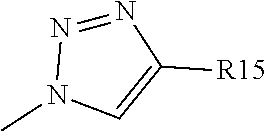
C00015
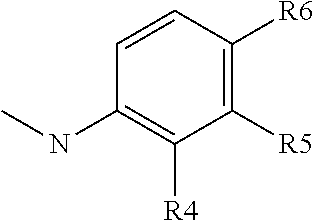
C00016
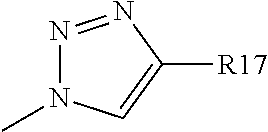
C00017
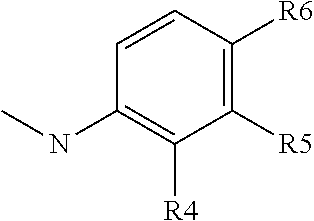
C00018

C00019

C00020
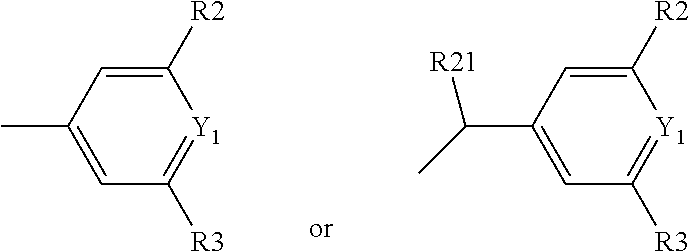
C00021

C00022
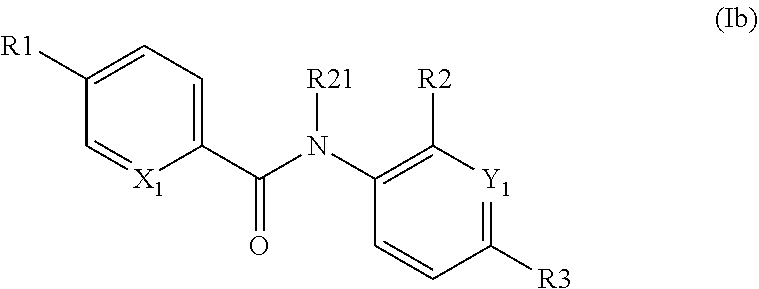
C00023

C00024
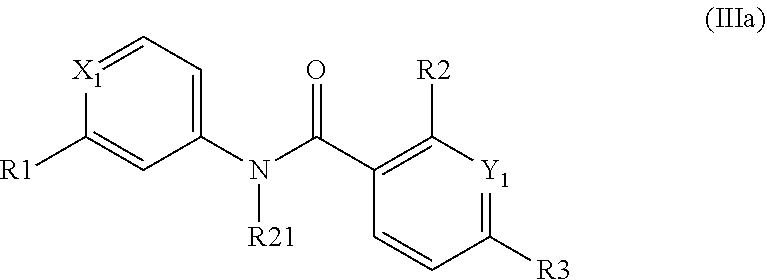
C00025

C00026
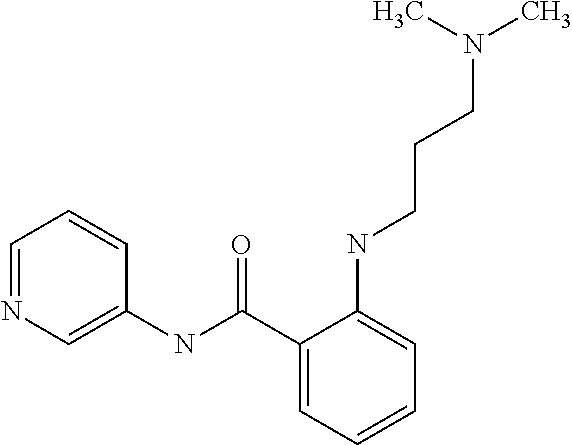
C00027
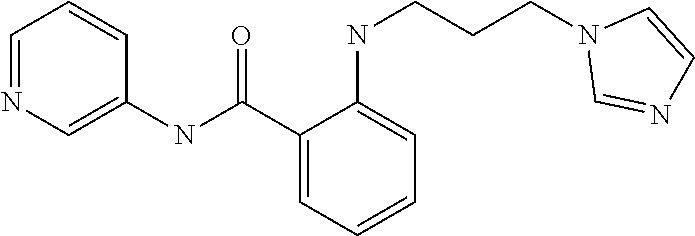
C00028

C00029
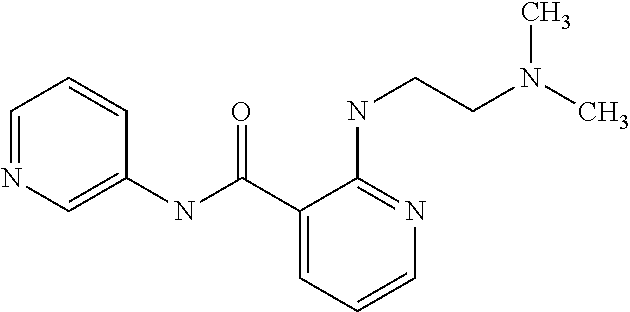
C00030
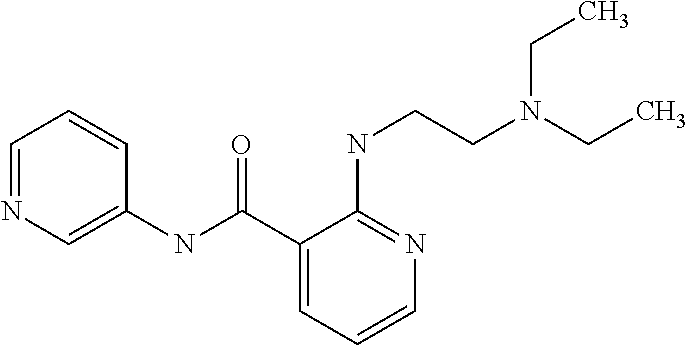
C00031
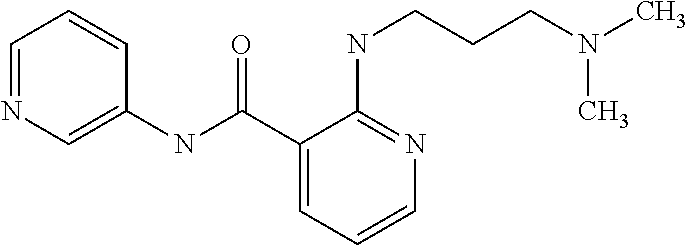
C00032

C00033
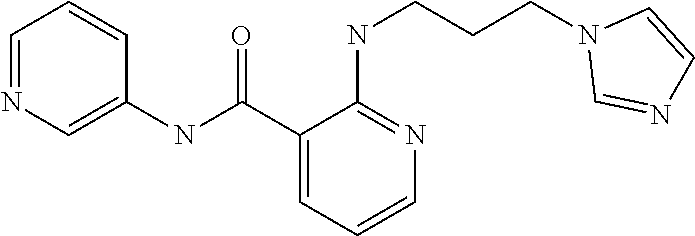
C00034

C00035
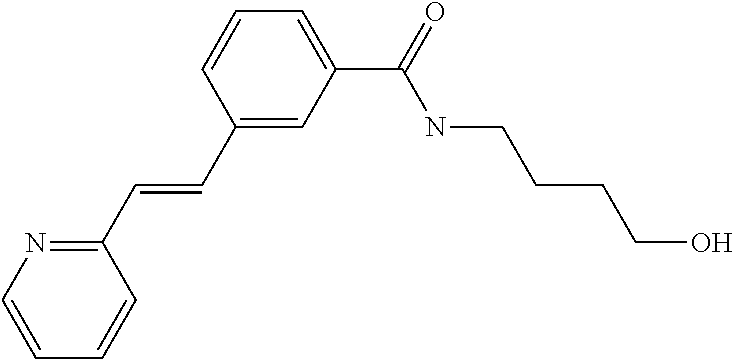
C00036
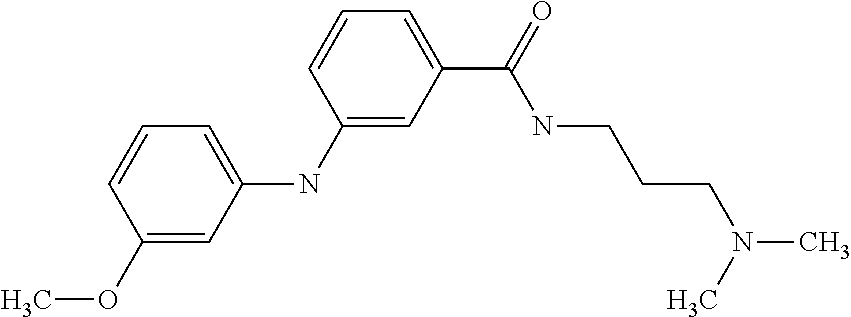
C00037

C00038

C00039
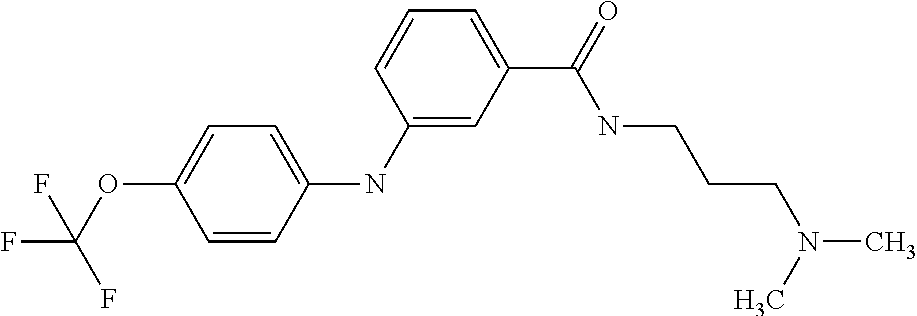
C00040
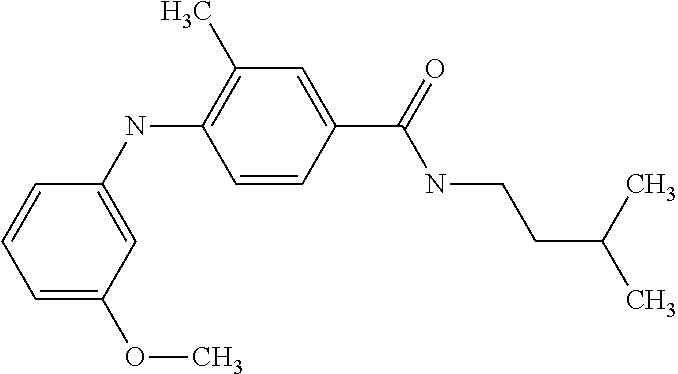
C00041

C00042
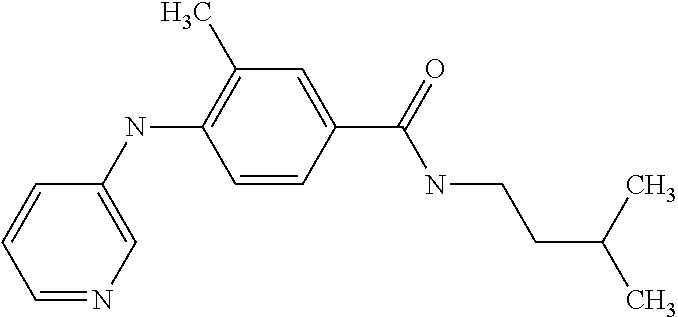
C00043
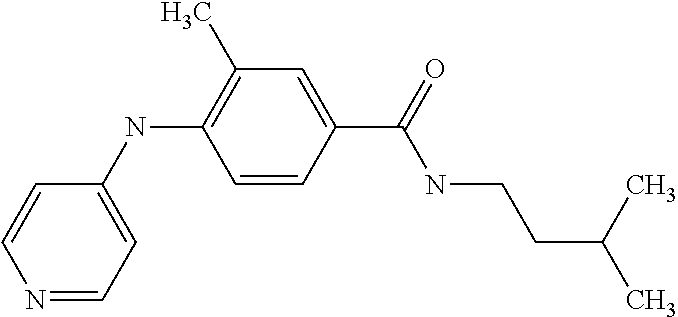
C00044

C00045
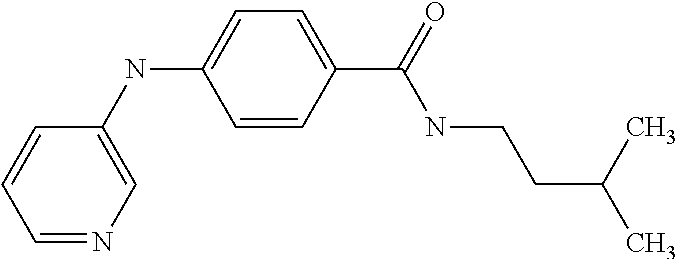
C00046

C00047

C00048
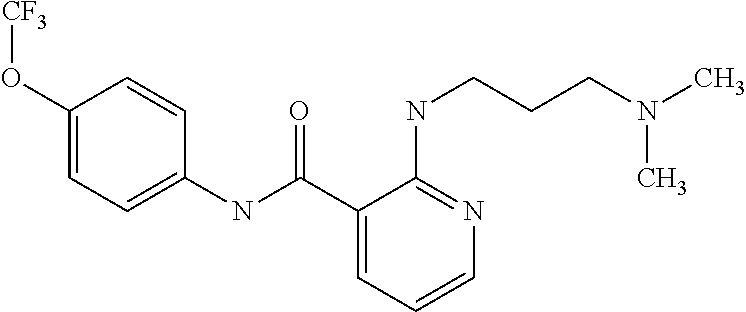
C00049

C00050

C00051

C00052

C00053

C00054

C00055

C00056

C00057

C00058

C00059

C00060

C00061

C00062

C00063

C00064

C00065
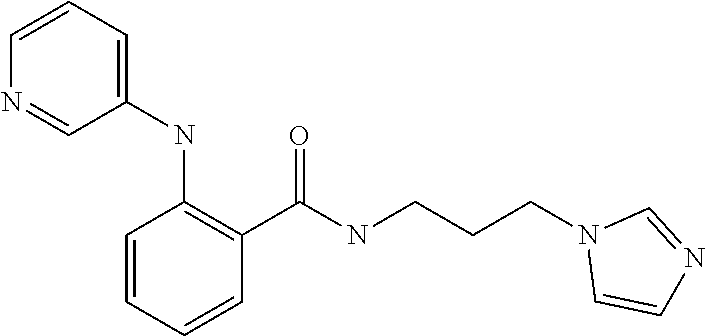
C00066
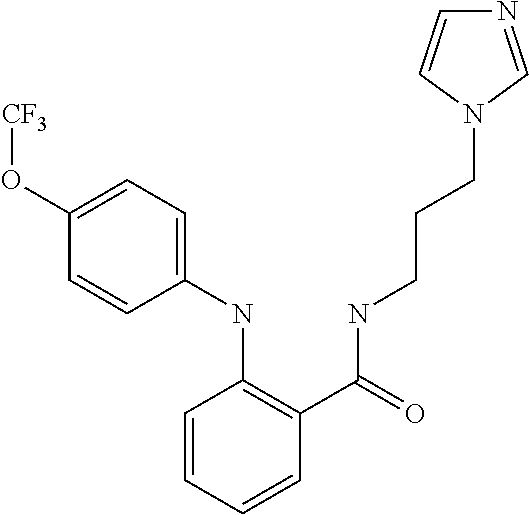
C00067
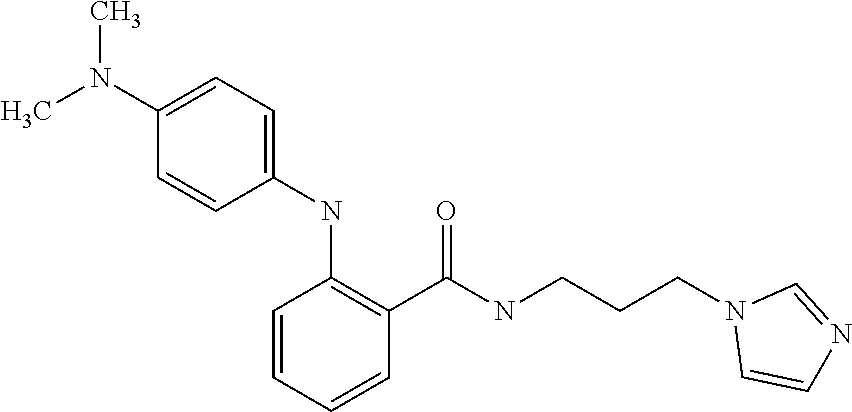
C00068
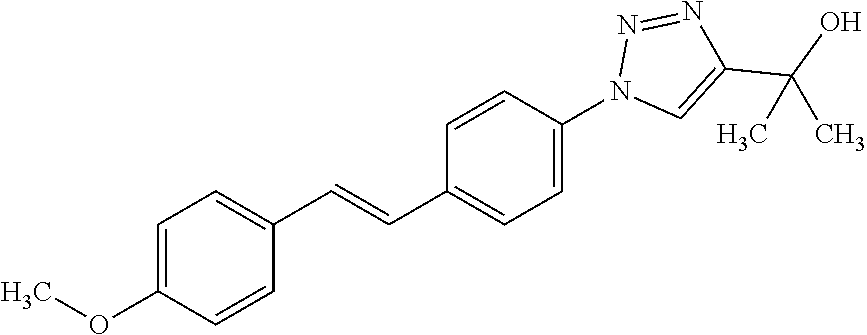
C00069
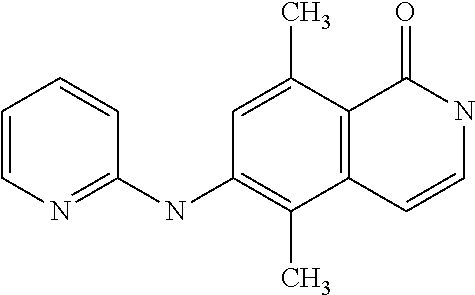
C00070
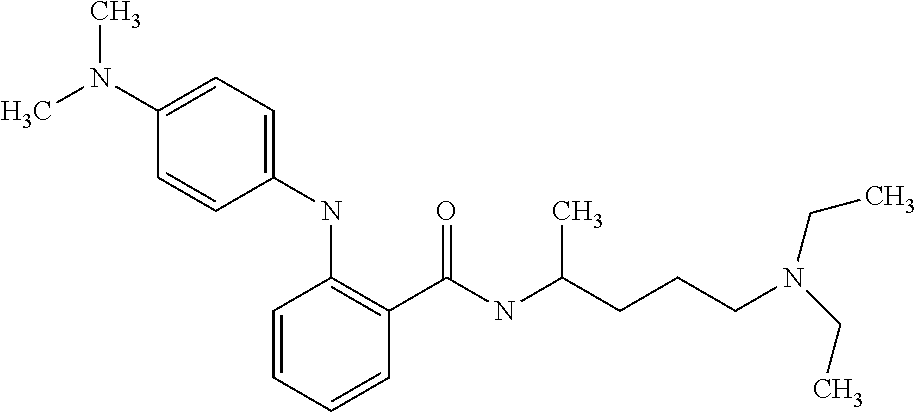
C00071

C00072

C00073

C00074

C00075

C00076

C00077

C00078

C00079

C00080

C00081

C00082

C00083

C00084

C00085
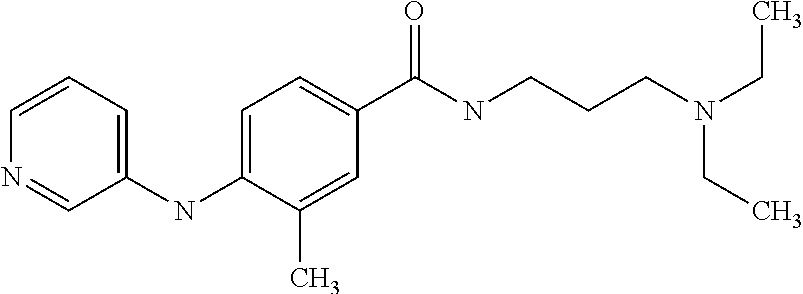
C00086

C00087

C00088

C00089

C00090

C00091
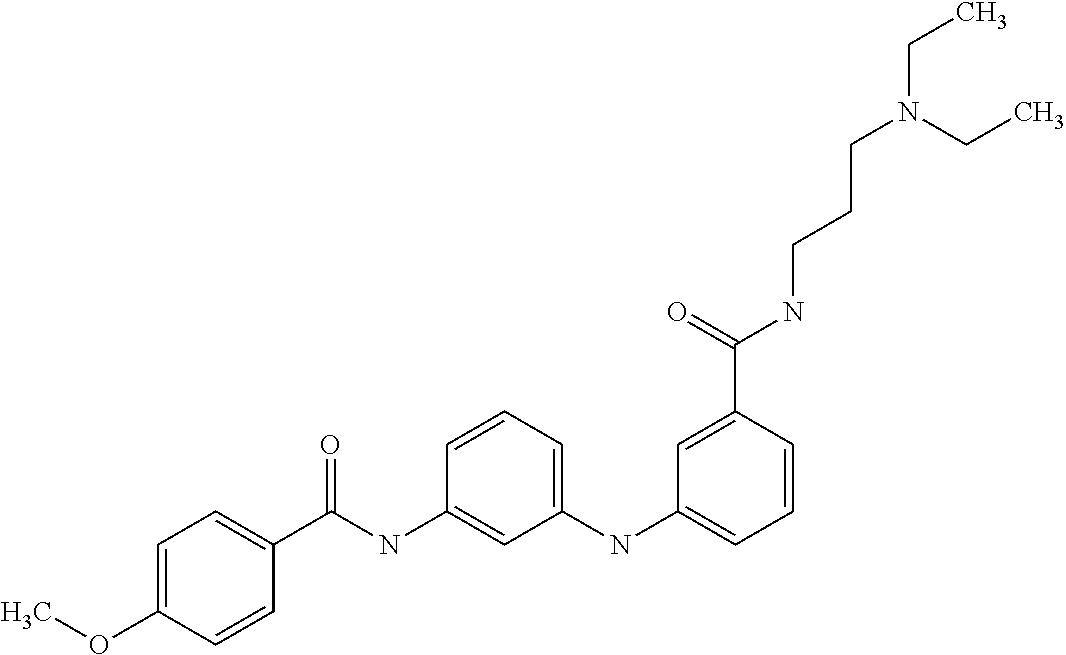
C00092

C00093

C00094
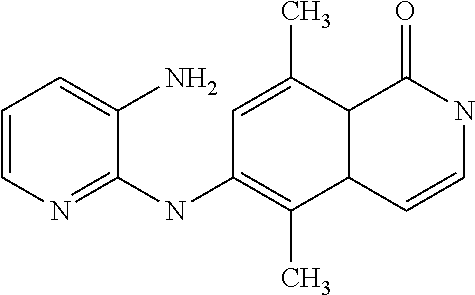
C00095
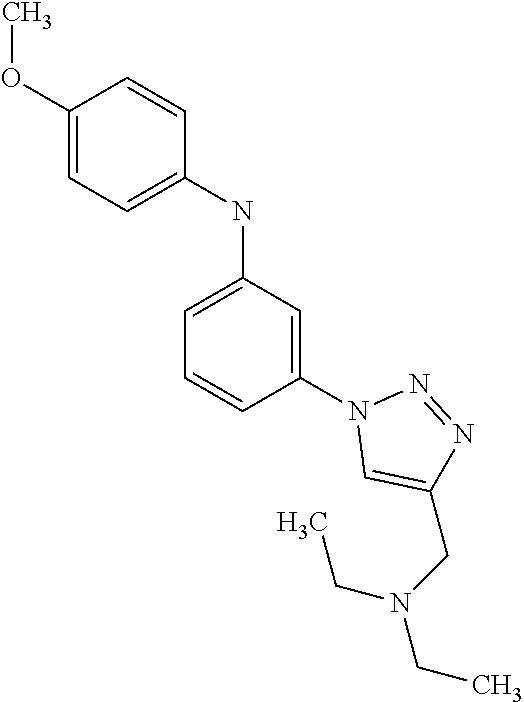
C00096

C00097

C00098

C00099
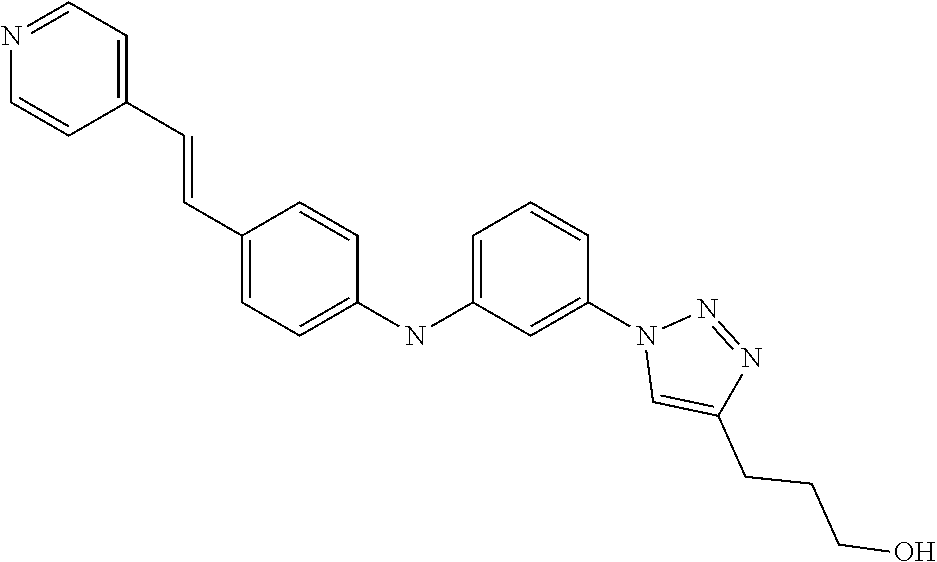
C00100

C00101

C00102
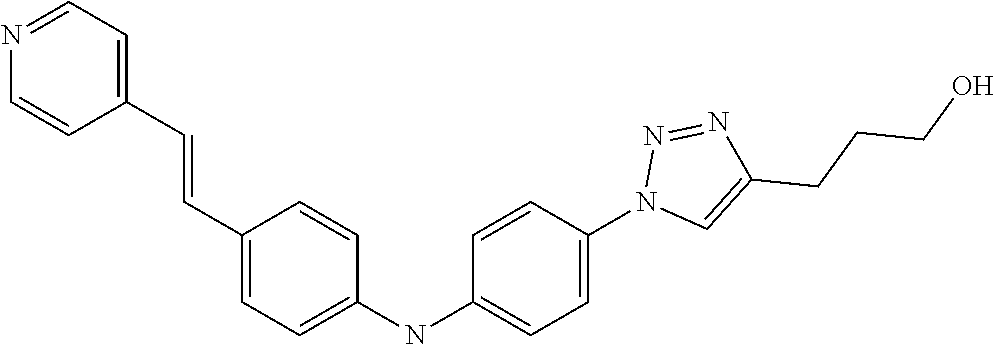
C00103
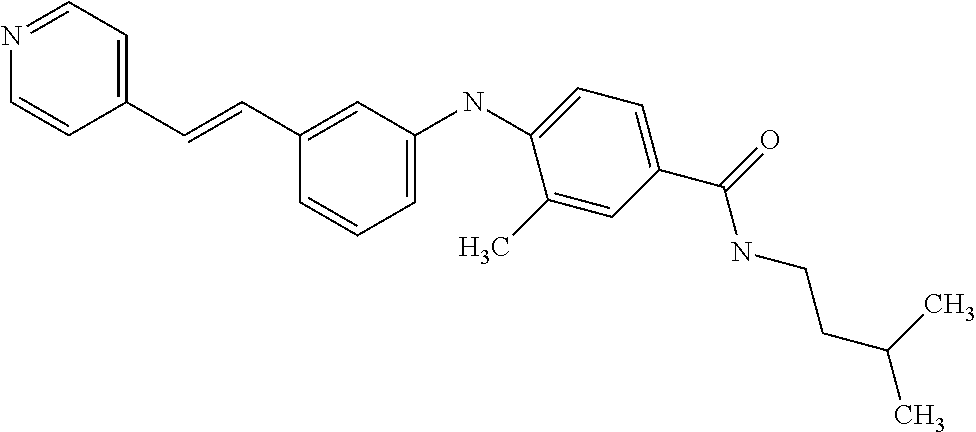
C00104

C00105

C00106

C00107

C00108
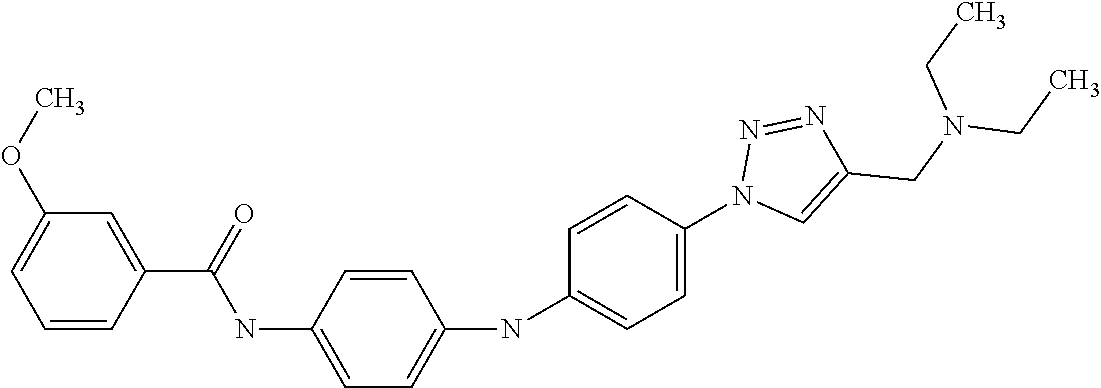
C00109

C00110
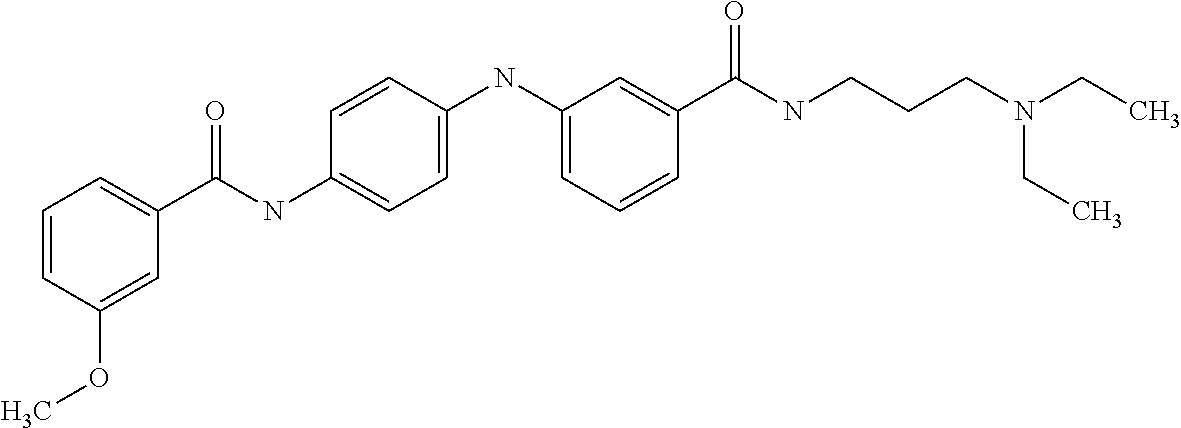
C00111
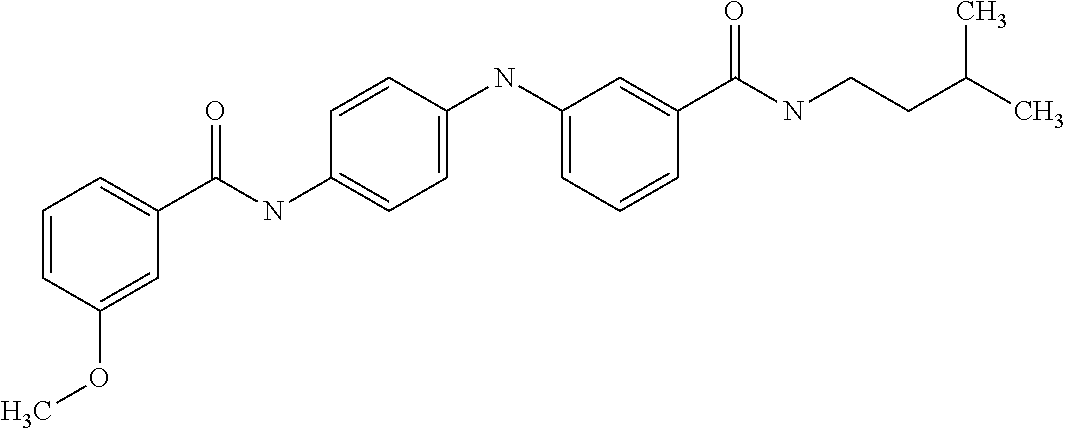
C00112

C00113

C00114
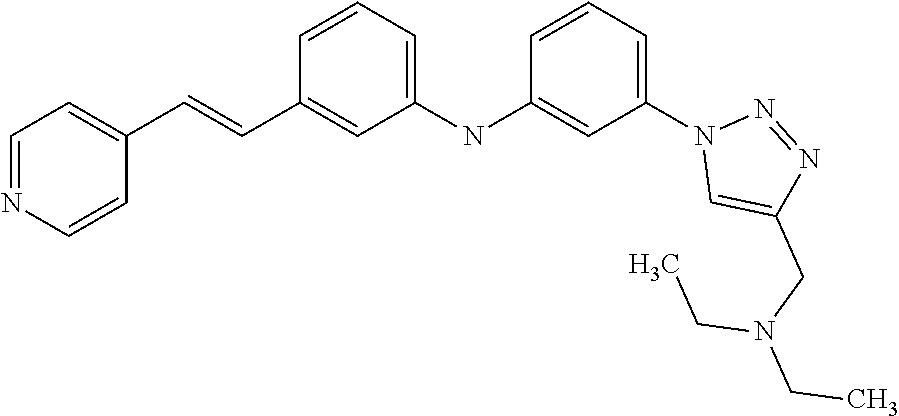
C00115
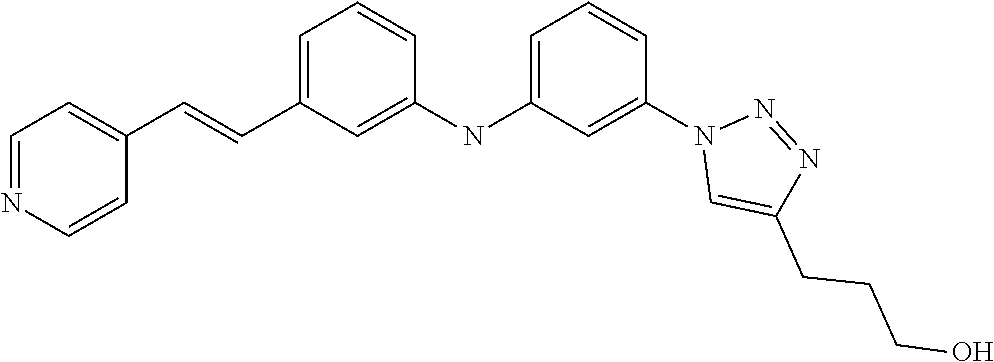
C00116
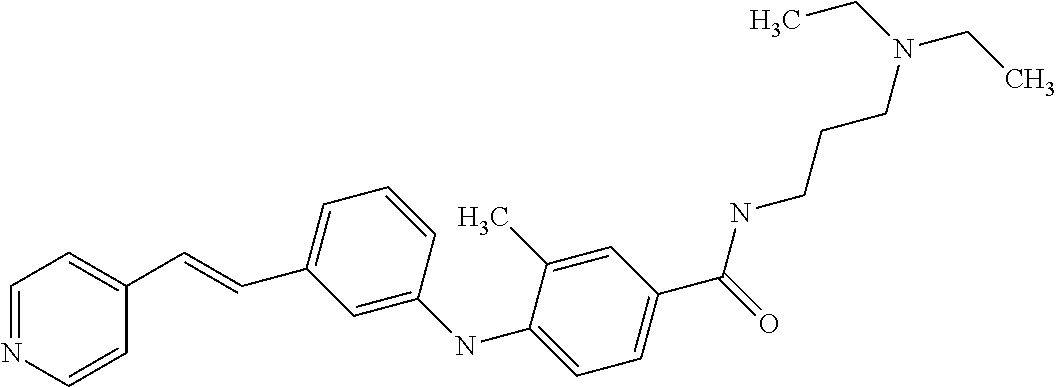
C00117

C00118

C00119

C00120

C00121

C00122
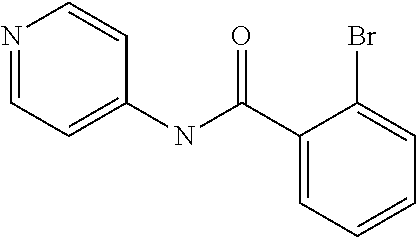
C00123
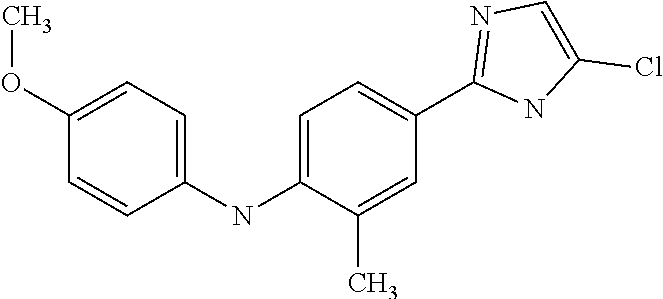
C00124

C00125

C00126
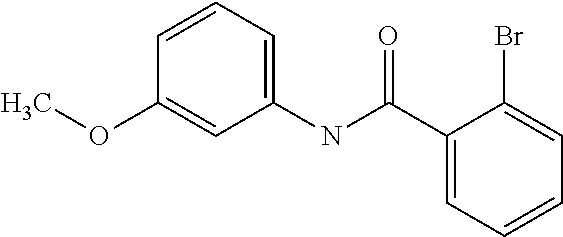
C00127
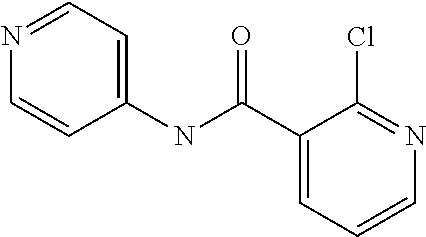
C00128
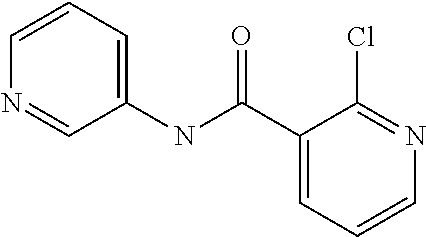
C00129
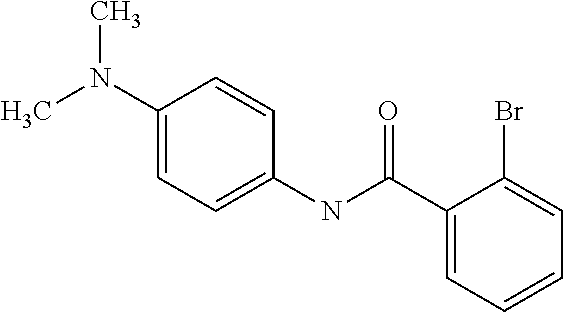
C00130
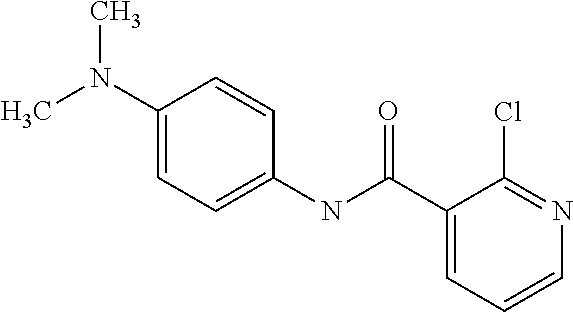
C00131
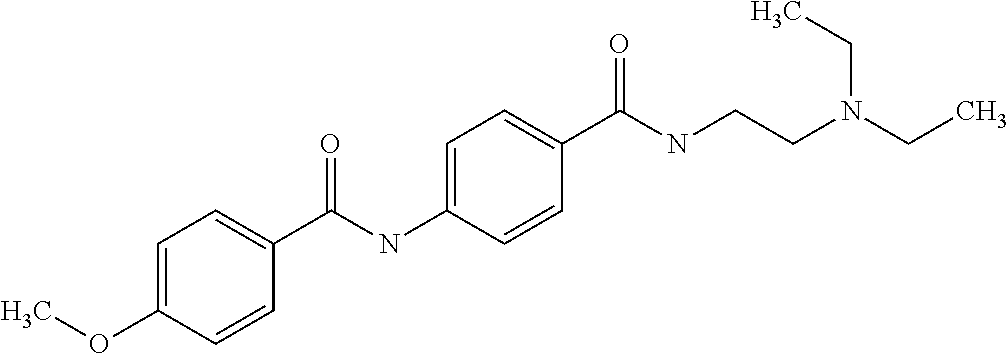
C00132

C00133
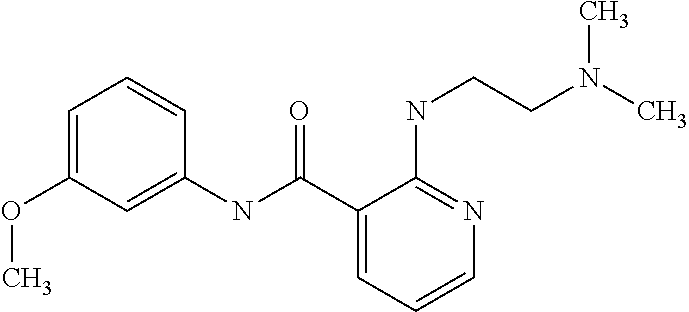
C00134

C00135

C00136

C00137

C00138

C00139

C00140

C00141
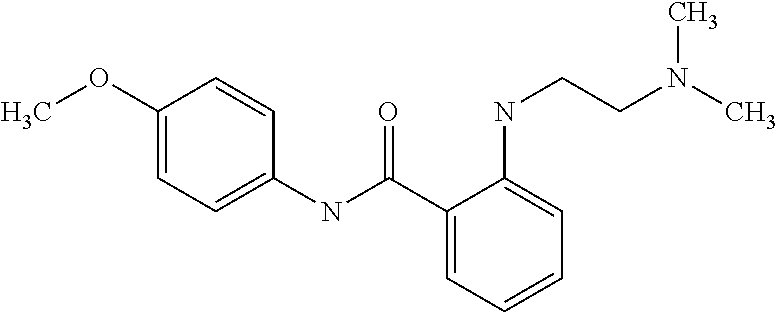
C00142

C00143

C00144

C00145

C00146
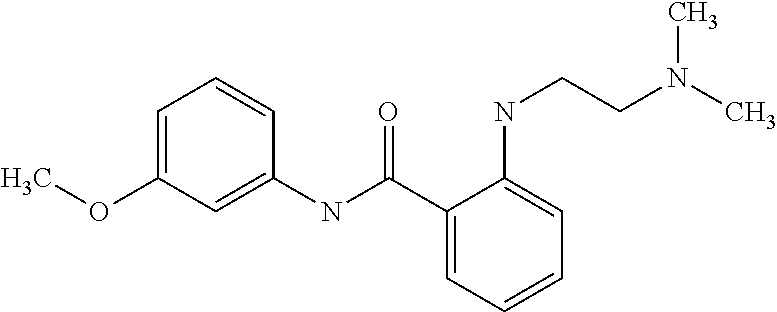
C00147

C00148
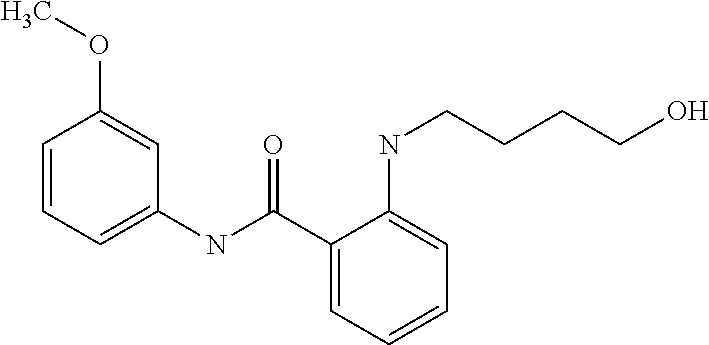
C00149

C00150

C00151

C00152
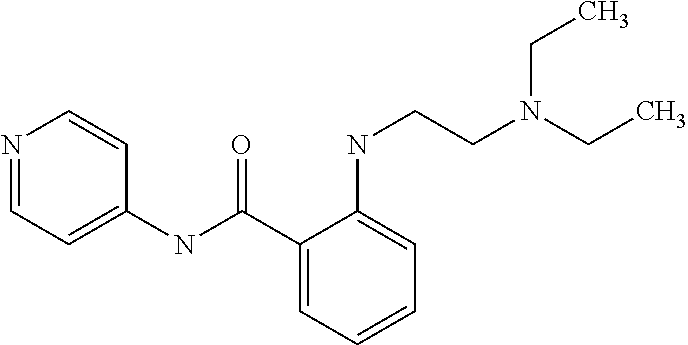
C00153
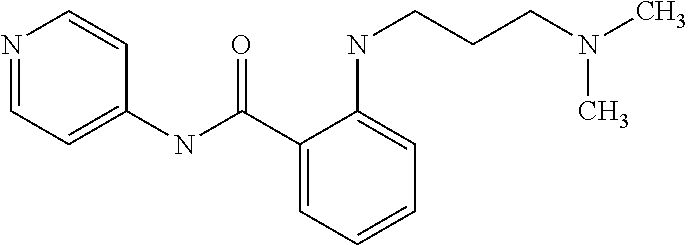
C00154

C00155
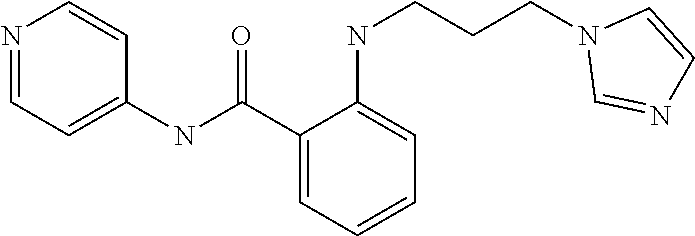
C00156

C00157

C00158

C00159

C00160
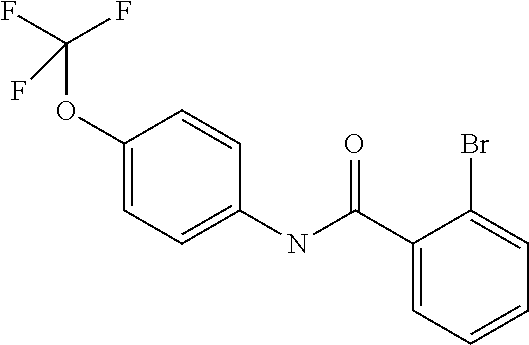
C00161
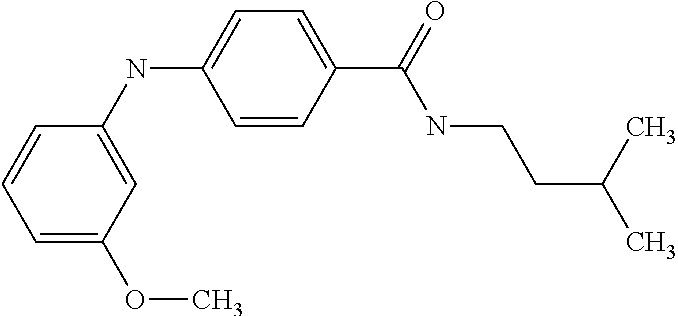
C00162
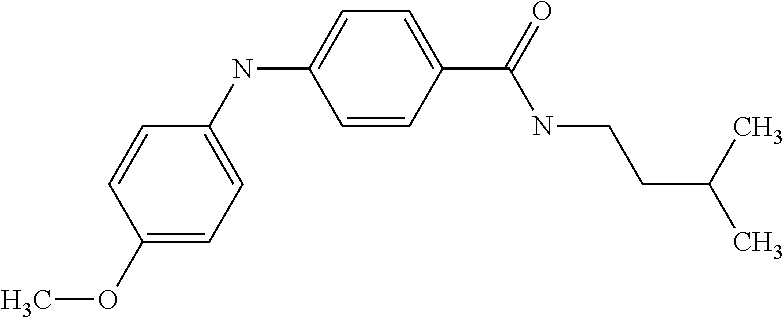
C00163
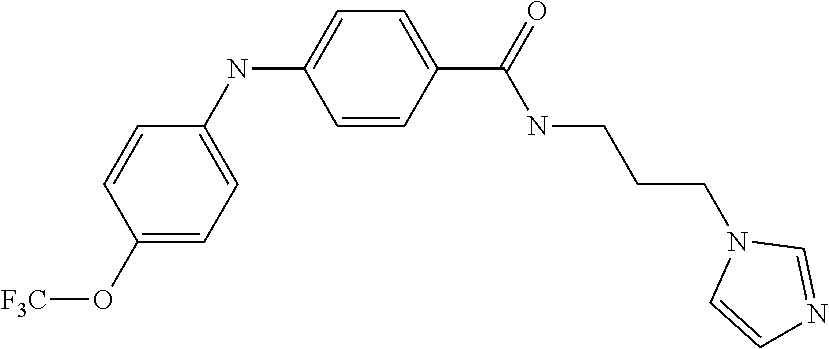
C00164

C00165

C00166

C00167

C00168
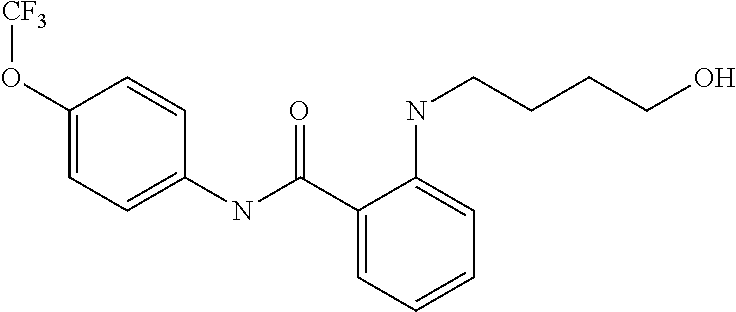
C00169
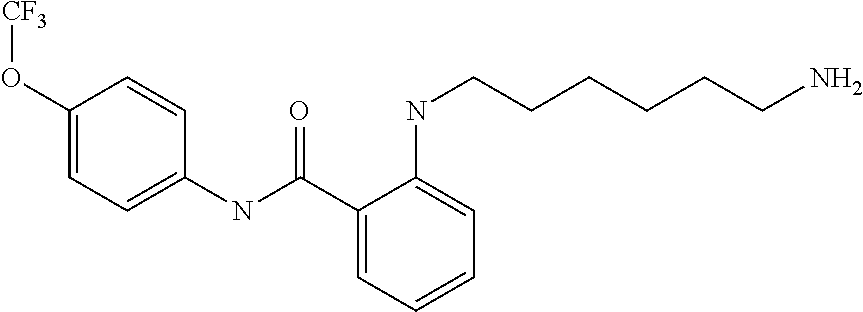
C00170

C00171

C00172
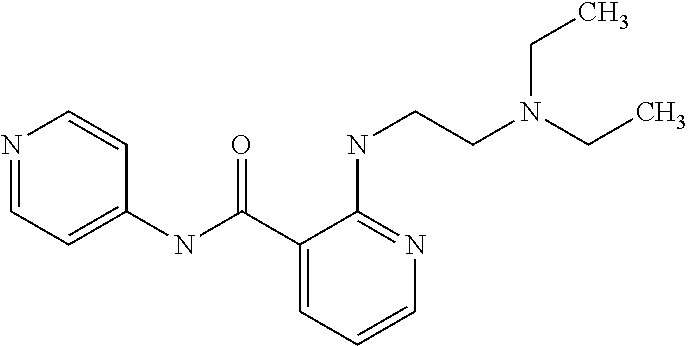
C00173
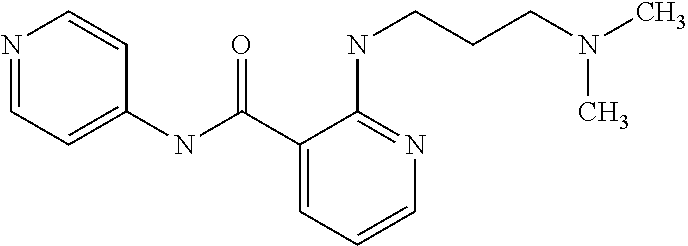
C00174

C00175

C00176

C00177

C00178

C00179

C00180
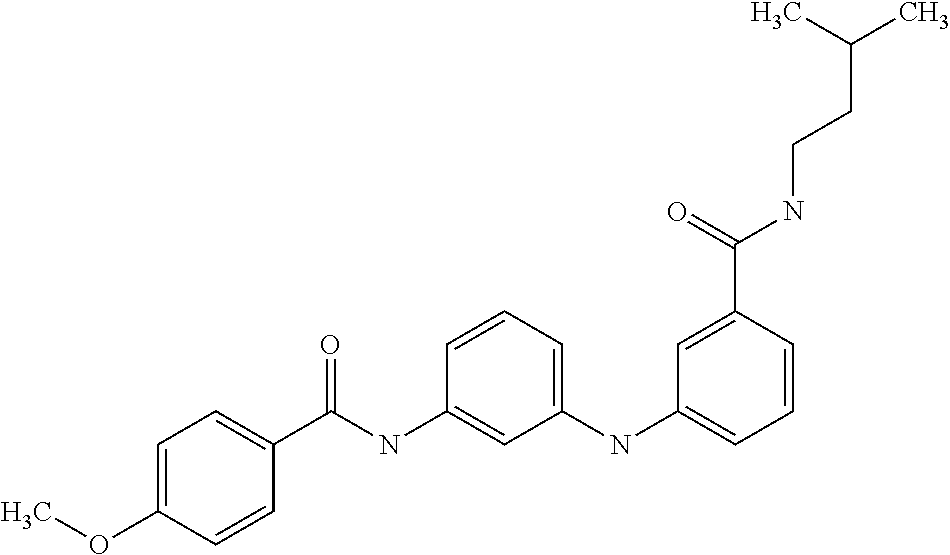
C00181
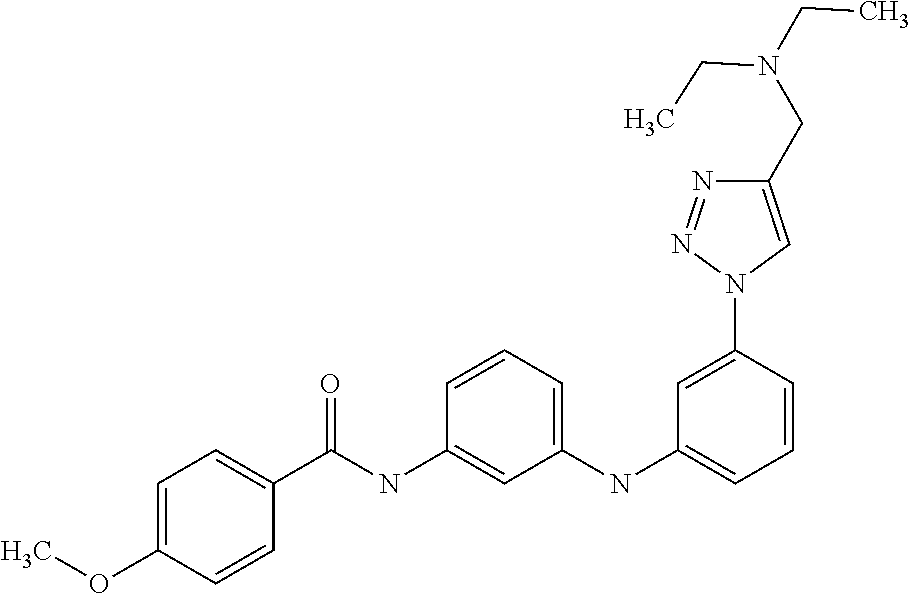
C00182
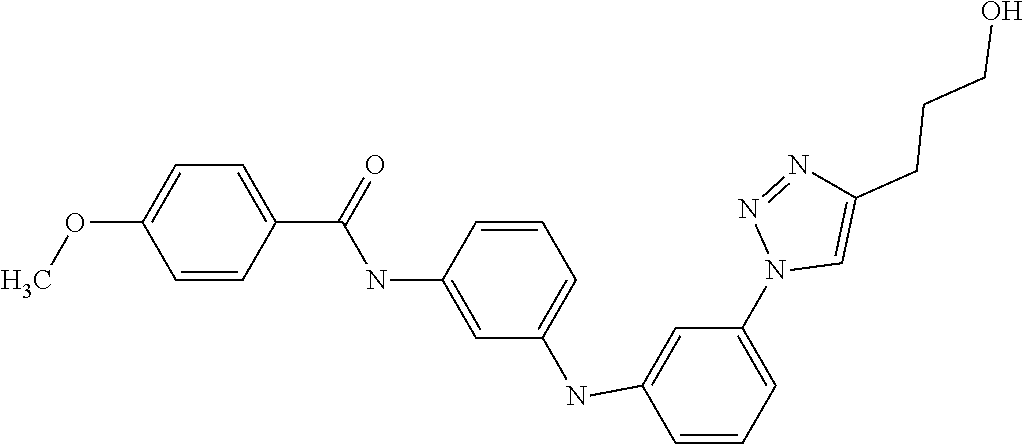
C00183

C00184

C00185

C00186

C00187
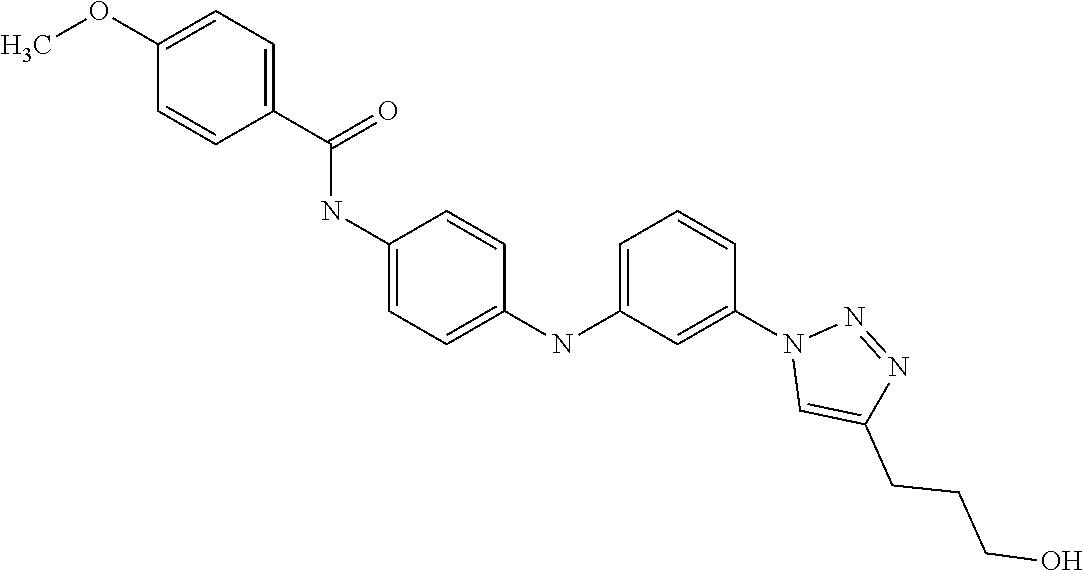
C00188
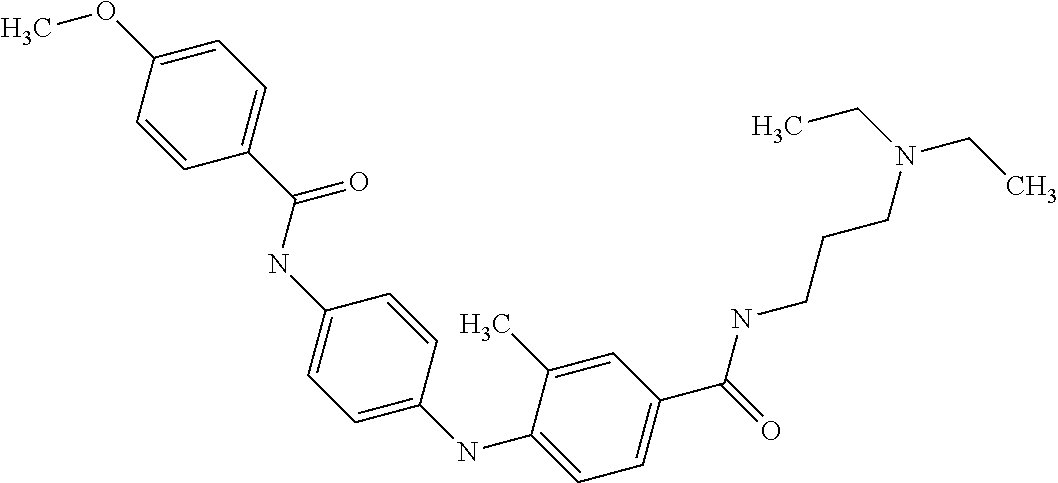
C00189

C00190

C00191

C00192

C00193

C00194

C00195

C00196

C00197
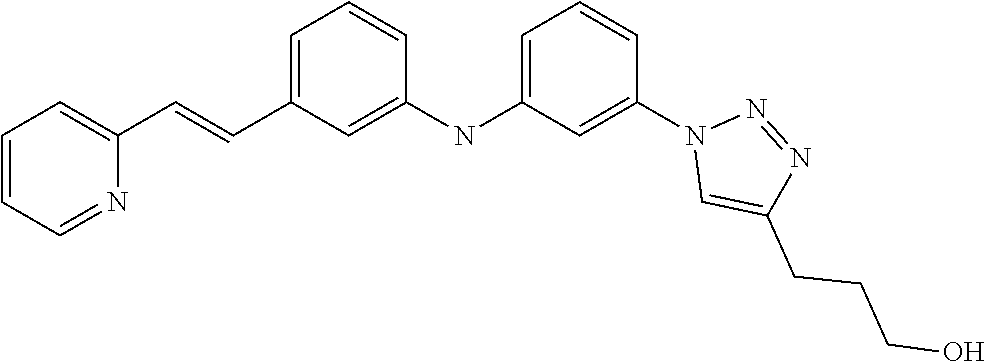
C00198

C00199

C00200

C00201

C00202

C00203

C00204

C00205

C00206
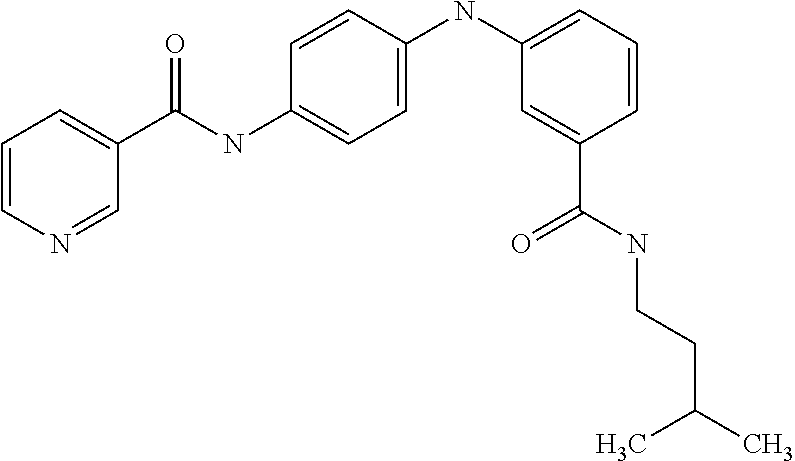
C00207
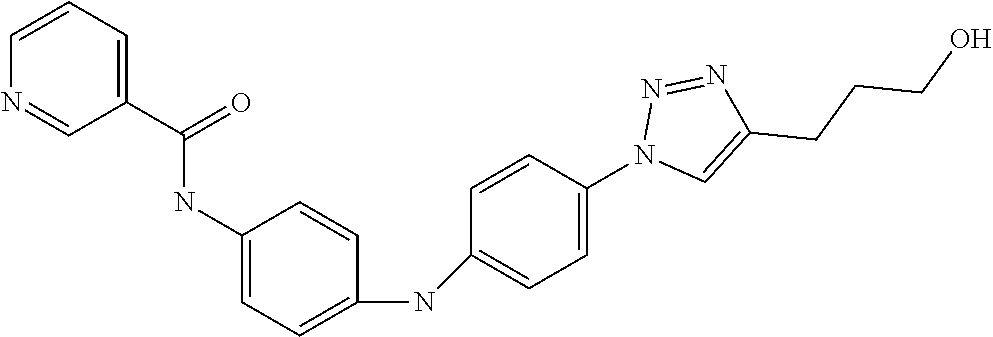
C00208
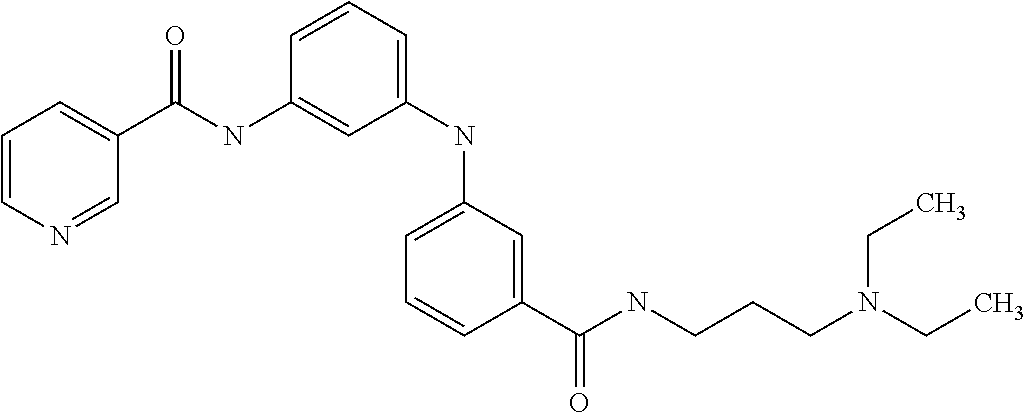
C00209

C00210

C00211

C00212

C00213
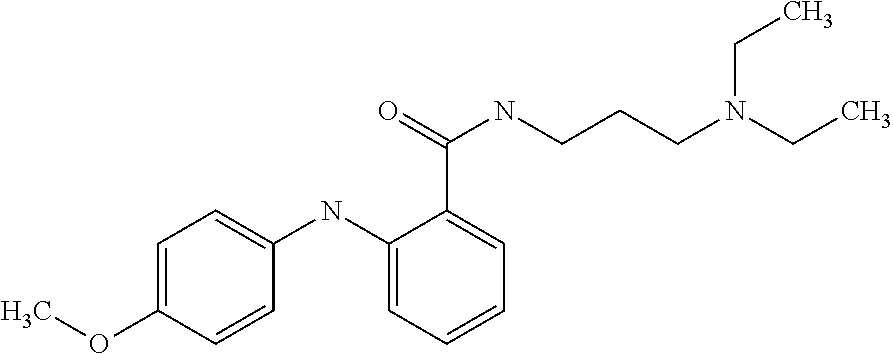
C00214

C00215

C00216

C00217

C00218

C00219

C00220

C00221

C00222
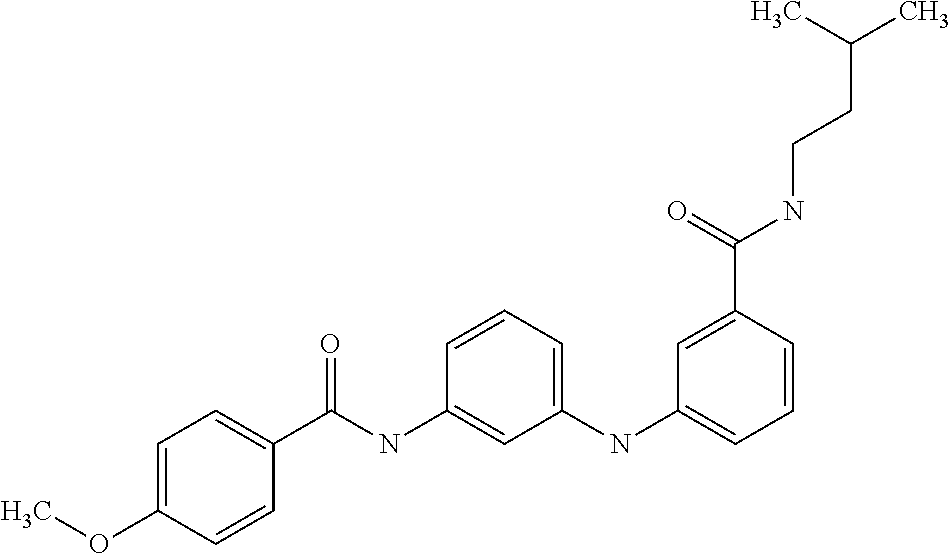
C00223

C00224

C00225

C00226

C00227

C00228

C00229

C00230
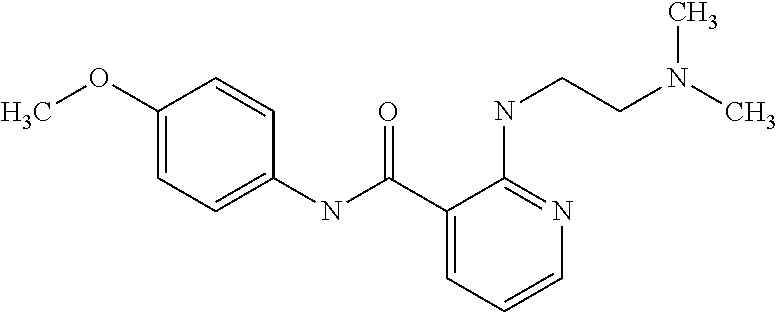
C00231
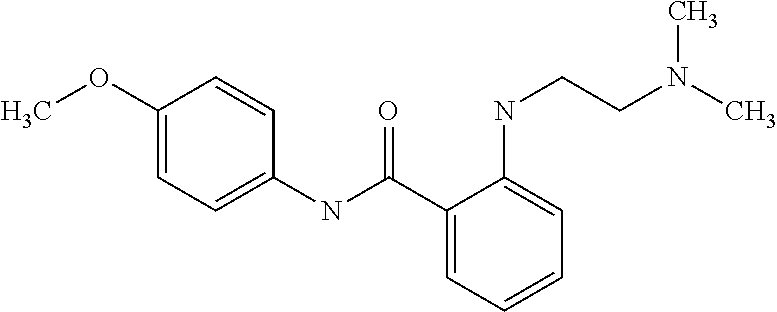
C00232
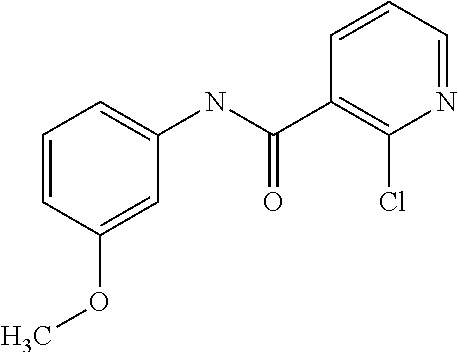
C00233

C00234
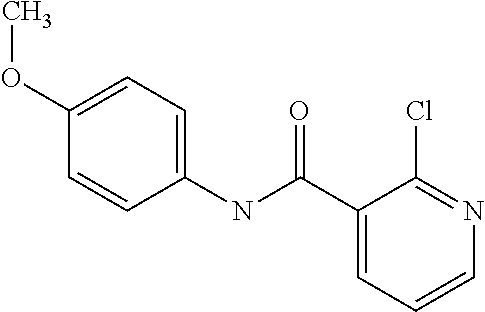
C00235

C00236
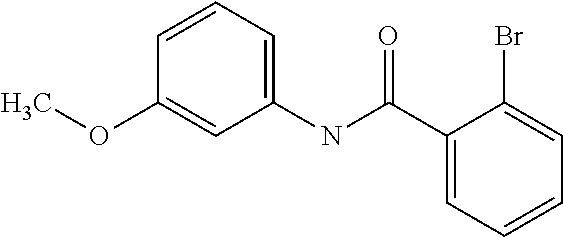
C00237

C00238

C00239

C00240

C00241

C00242
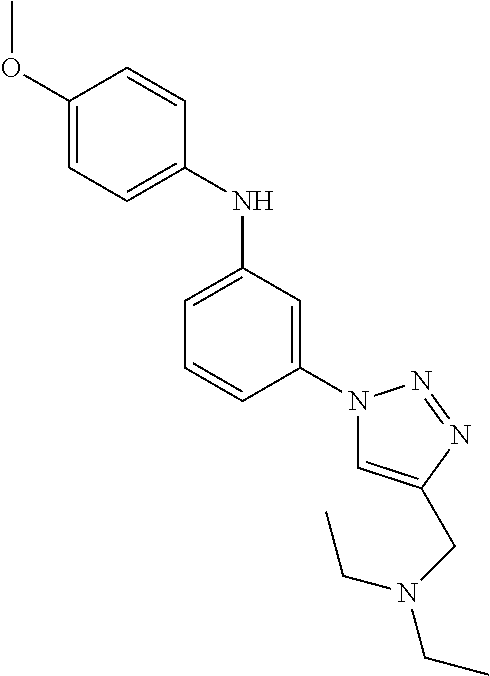
C00243
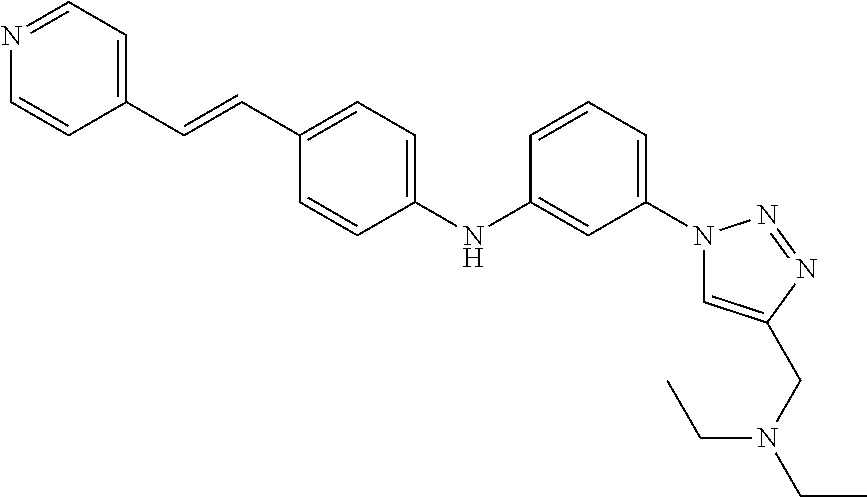
C00244

C00245

C00246

C00247

C00248

C00249

C00250

C00251

C00252
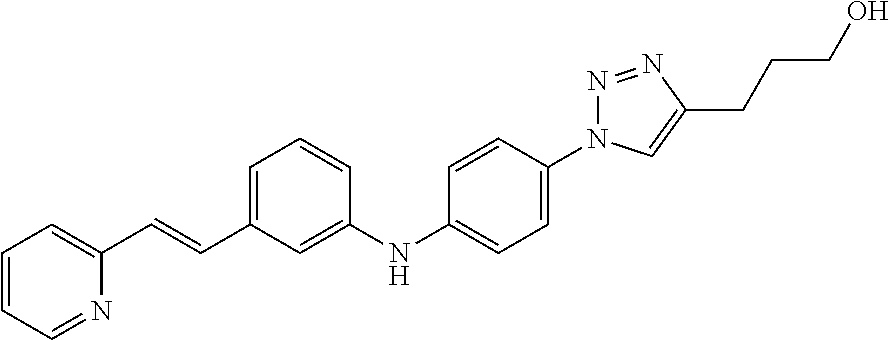
C00253

C00254

C00255

C00256

C00257

C00258

C00259

C00260

C00261

C00262
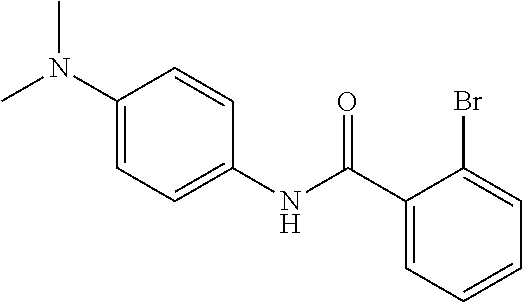
C00263
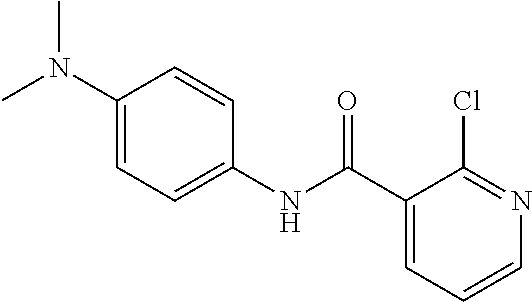
C00264
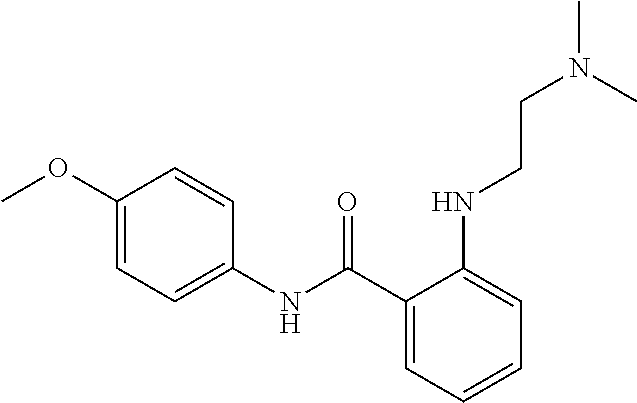
C00265

C00266
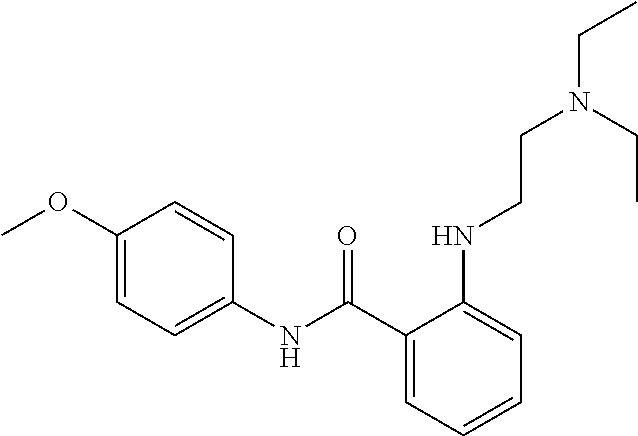
C00267

C00268

C00269

C00270

C00271

C00272

C00273
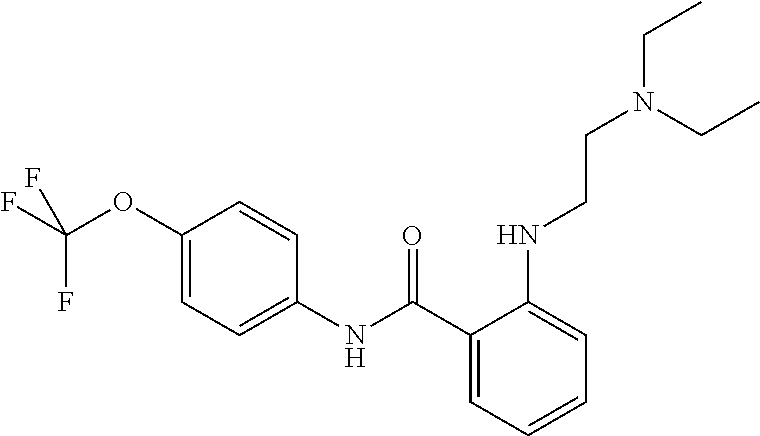
C00274
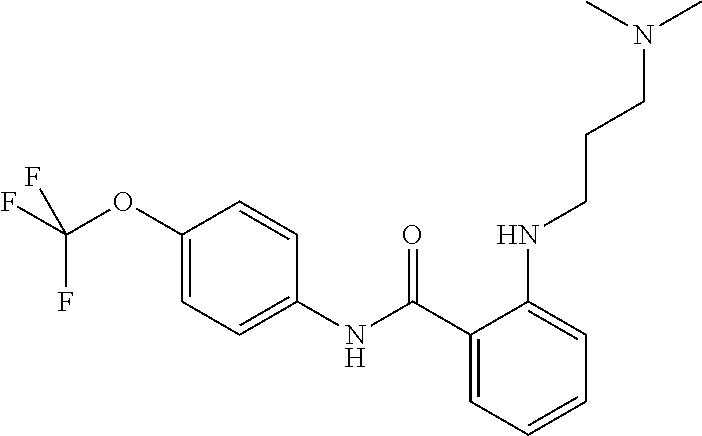
C00275

C00276
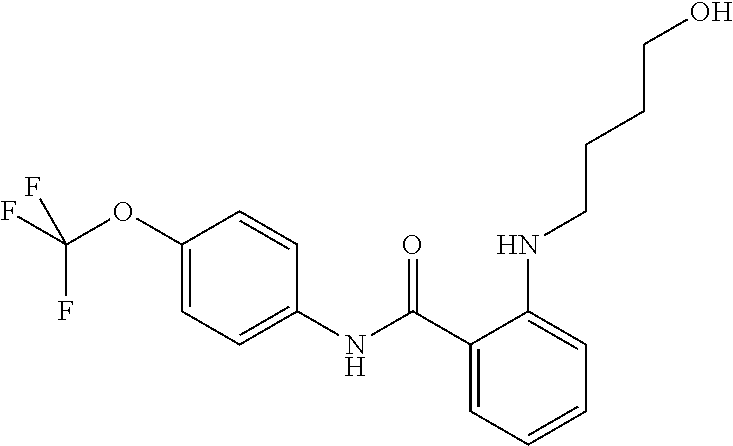
C00277

C00278
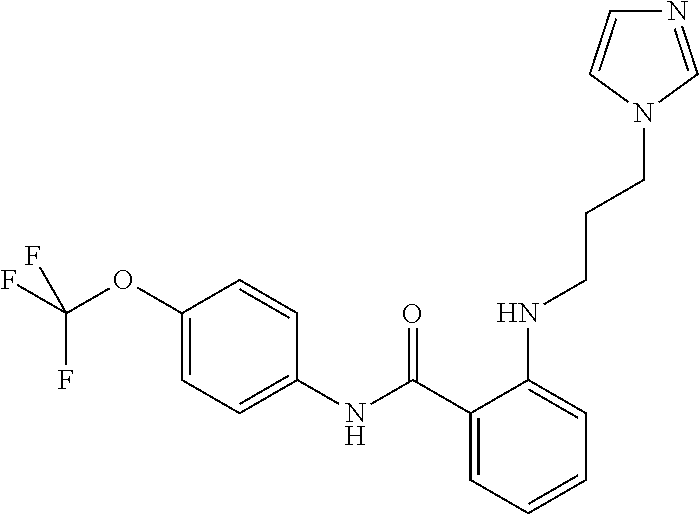
C00279
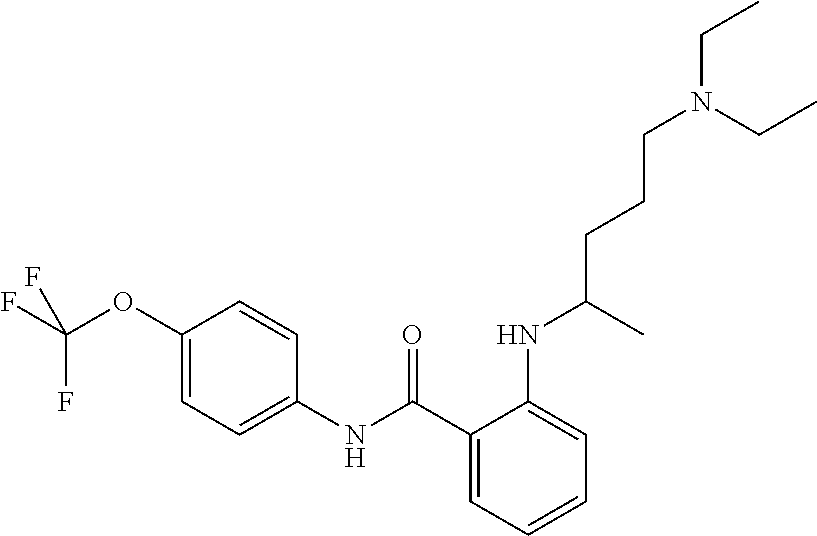
C00280
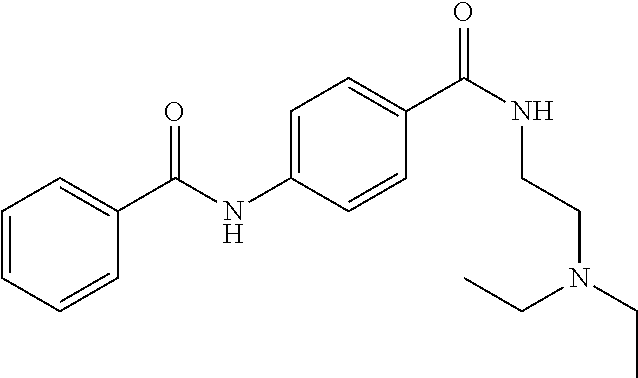
C00281

C00282

C00283

C00284

C00285
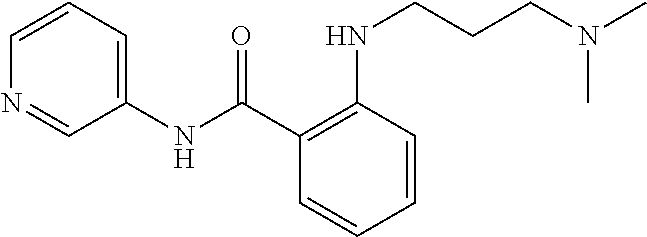
C00286
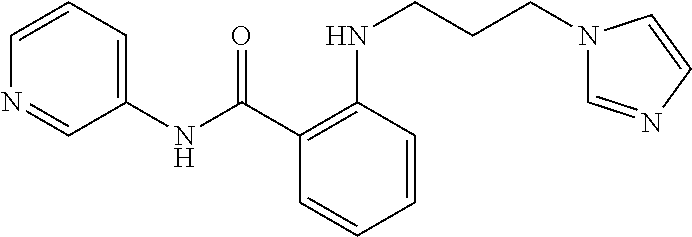
C00287
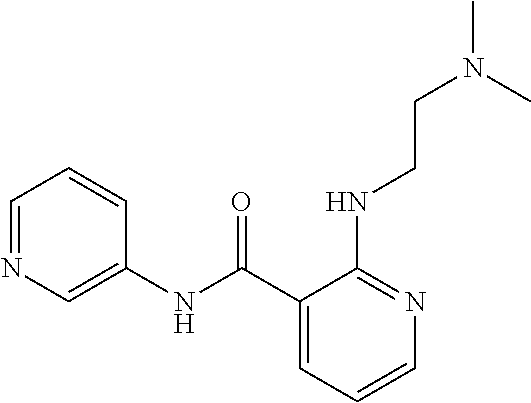
C00288
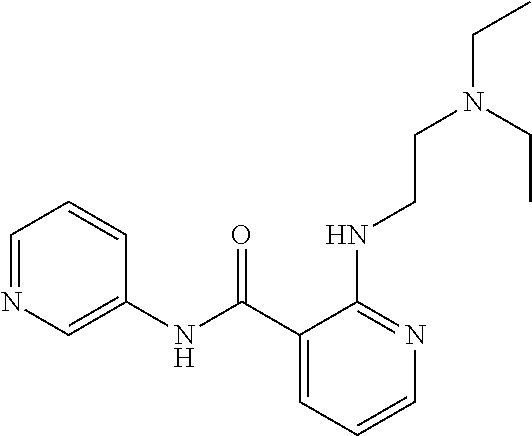
C00289
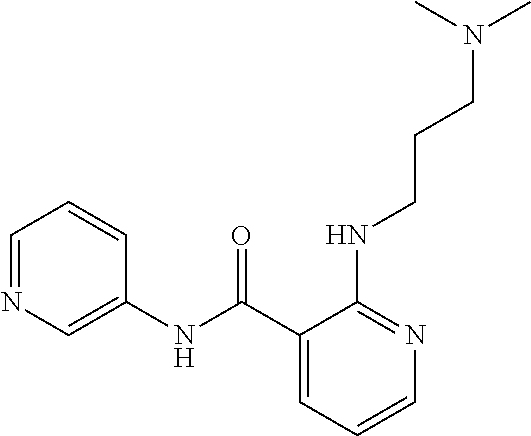
C00290
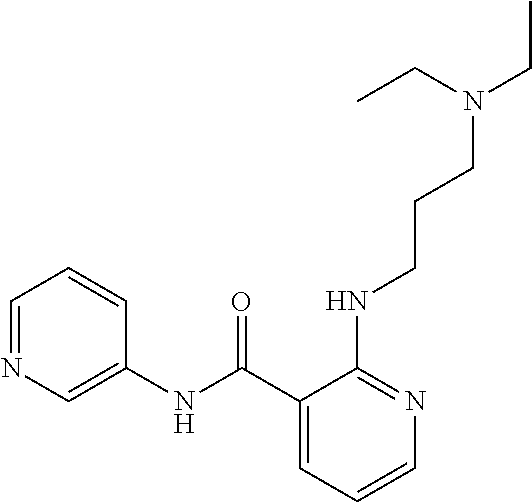
C00291

C00292
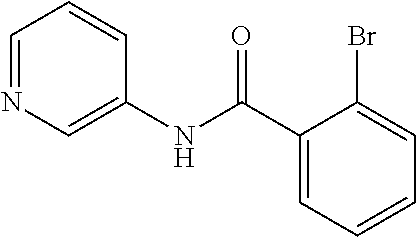
C00293
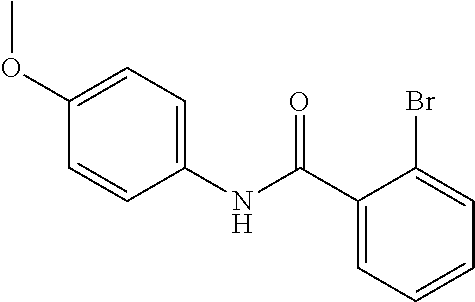
C00294
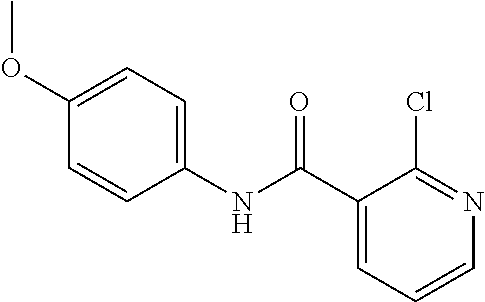
C00295
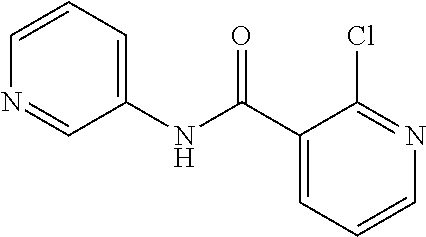
C00296

C00297

C00298

C00299
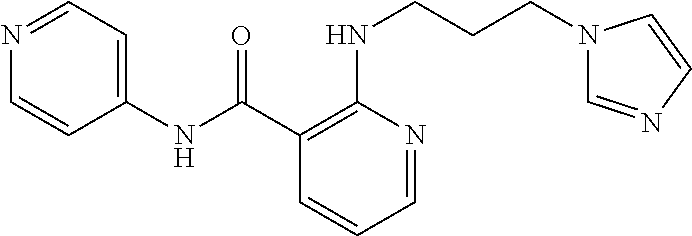
C00300

C00301

C00302
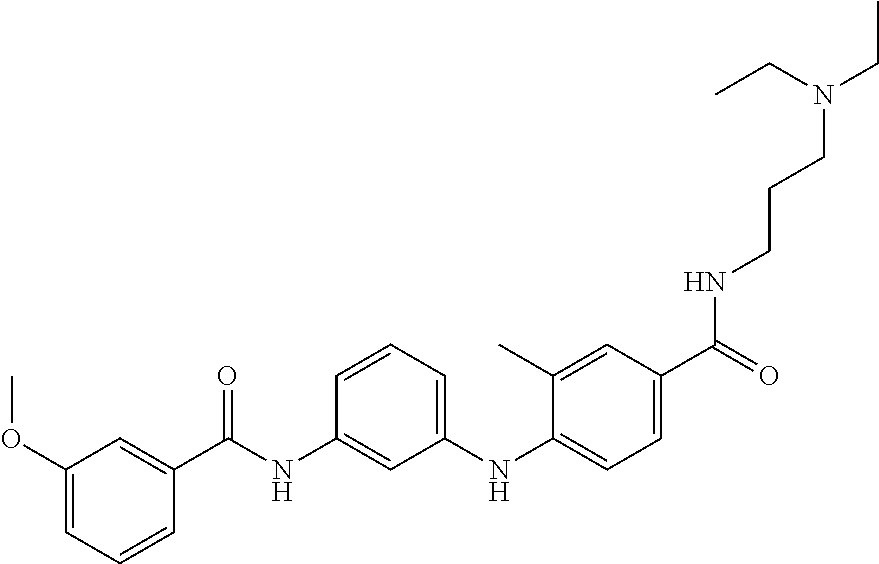
C00303
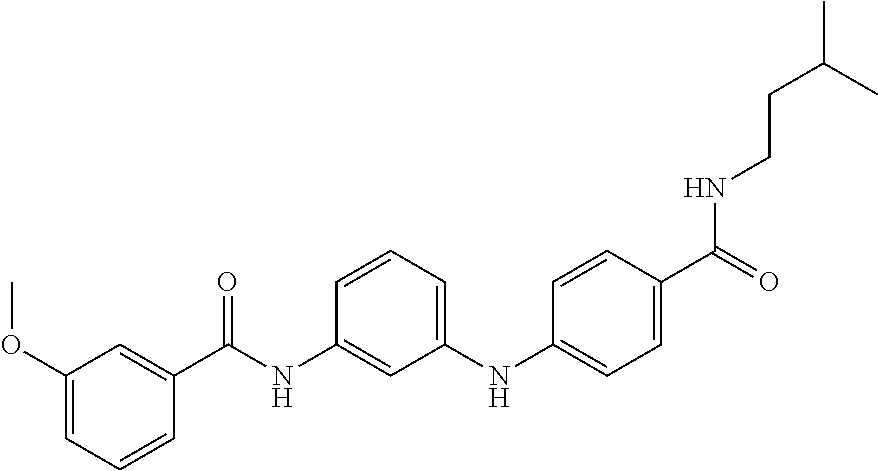
C00304

C00305

C00306

C00307

C00308

C00309

C00310

C00311

C00312

C00313

C00314

C00315

C00316

C00317
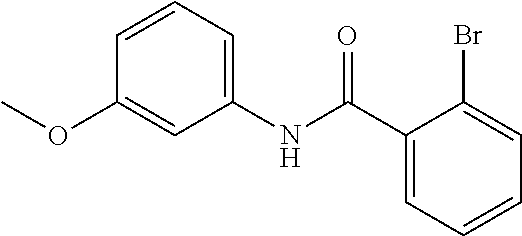
C00318

C00319

C00320

C00321

C00322
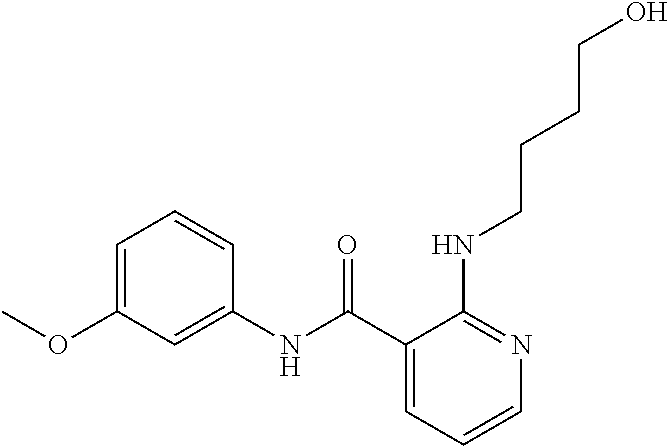
C00323

C00324

C00325

C00326
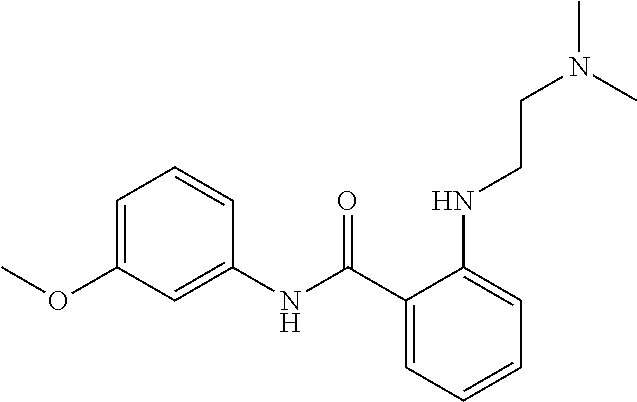
C00327
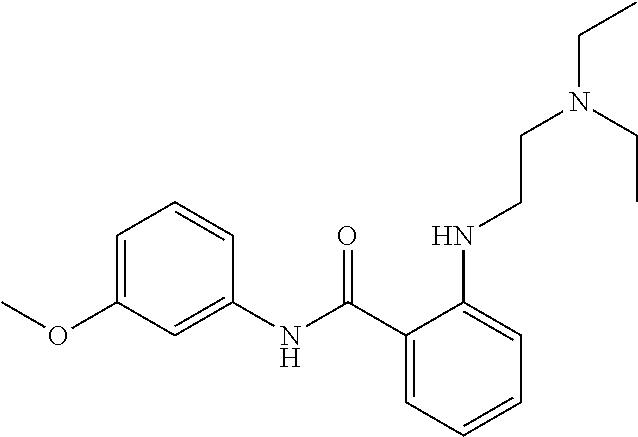
C00328

C00329
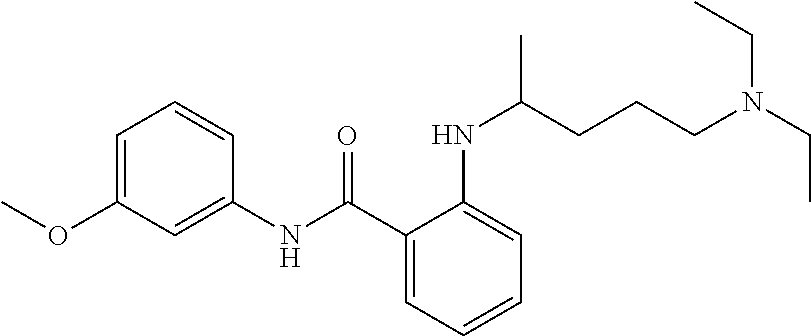
C00330

C00331

C00332

C00333

C00334
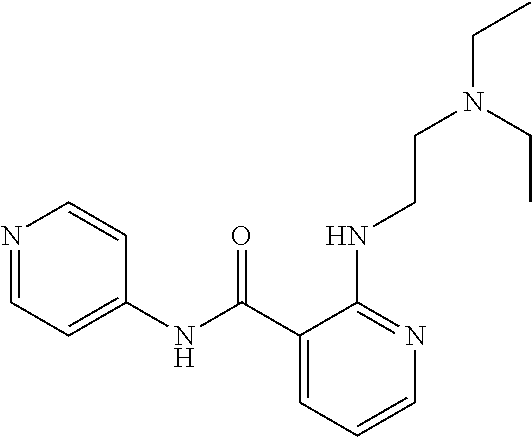
C00335

C00336

C00337

C00338
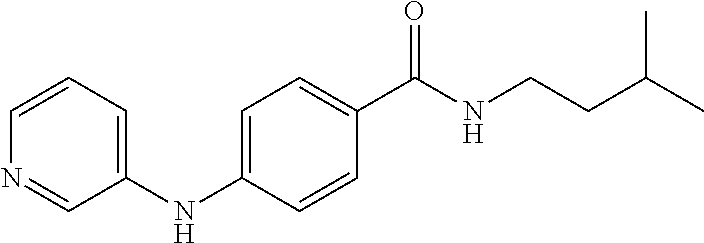
C00339
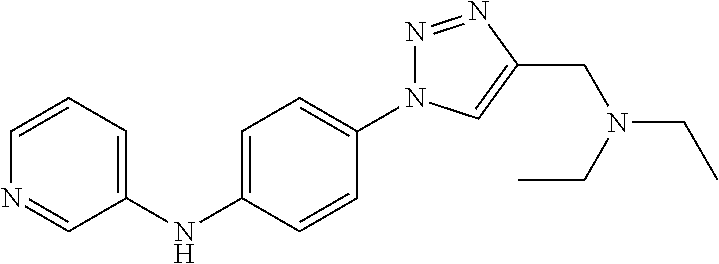
C00340

C00341

C00342

C00343

C00344
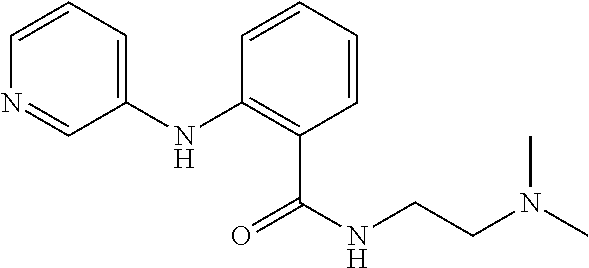
C00345

C00346

C00347

C00348

C00349

C00350

C00351

C00352

C00353

C00354

C00355

C00356

C00357
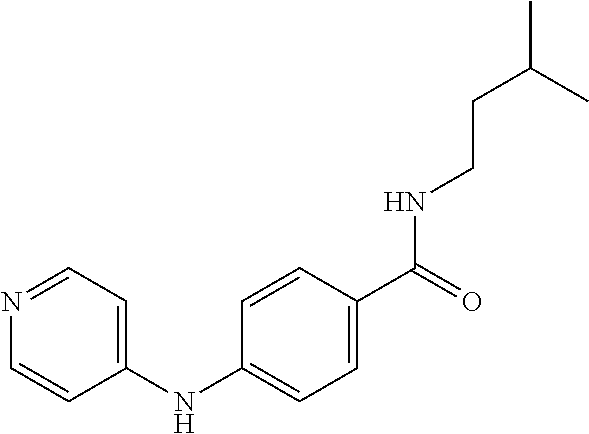
C00358

C00359

C00360
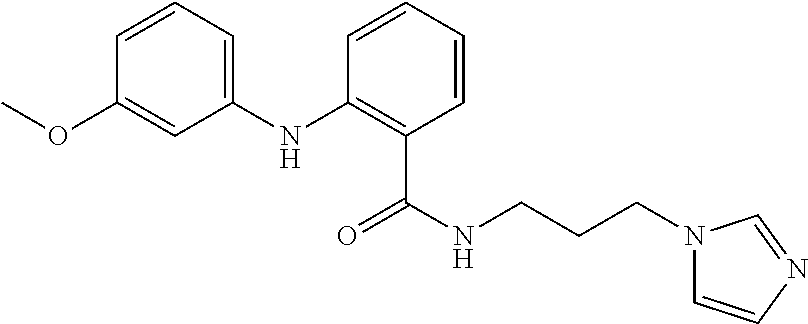
C00361

C00362

C00363
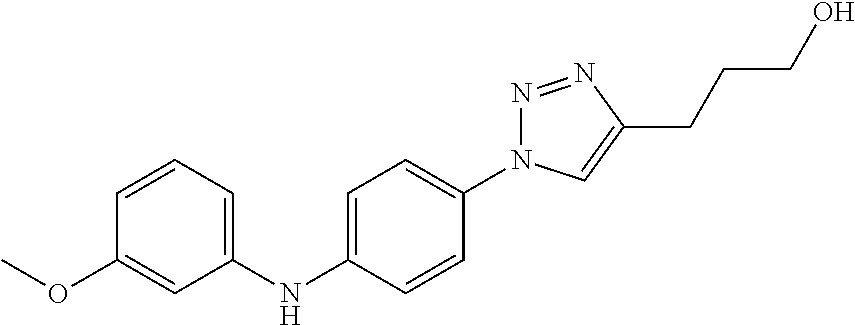
C00364

C00365
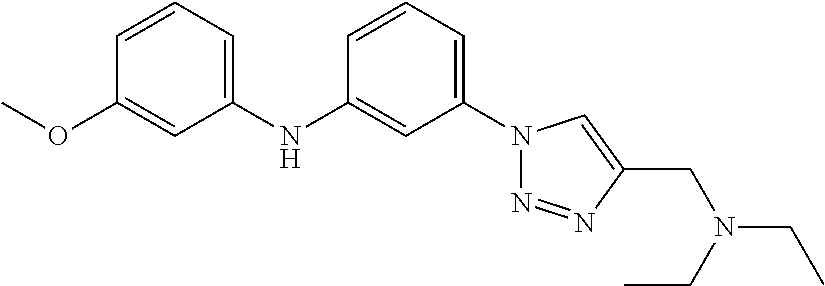
C00366

C00367

C00368

C00369
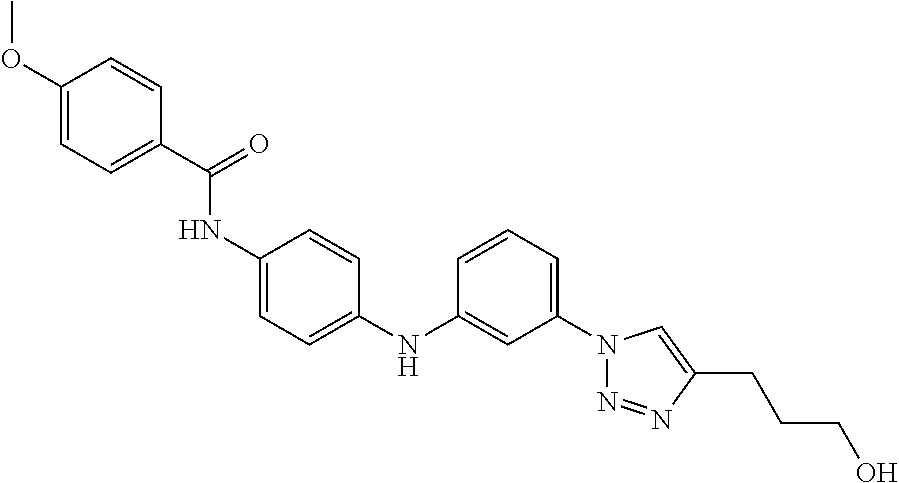
C00370
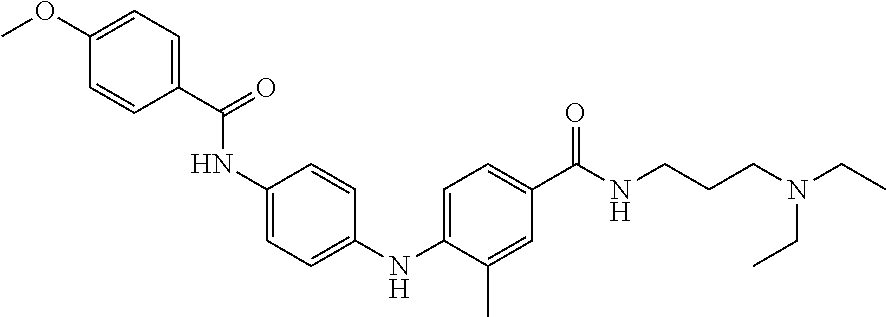
C00371
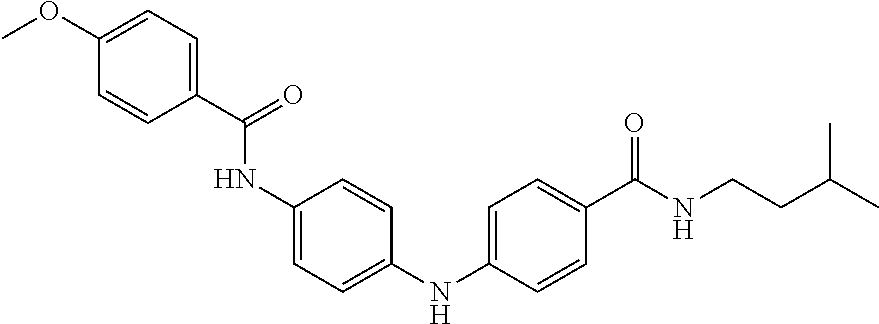
C00372
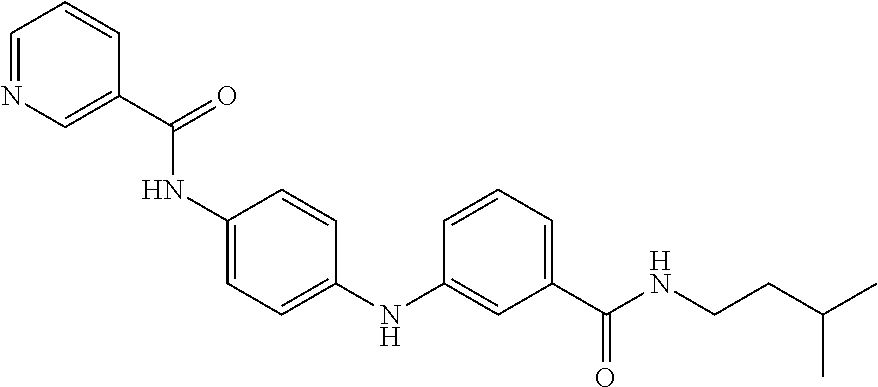
C00373

C00374
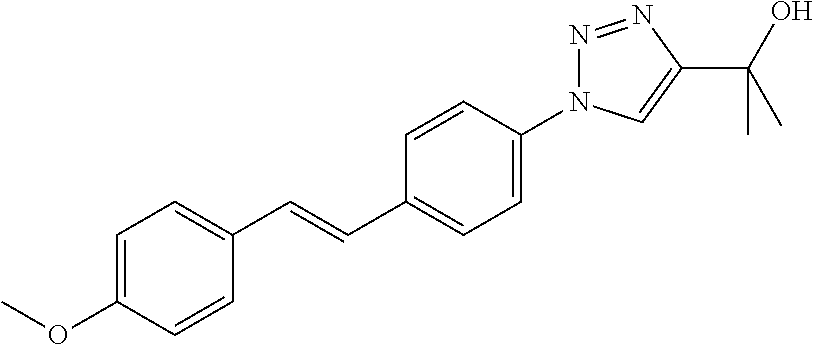
C00375

C00376

C00377

C00378

C00379
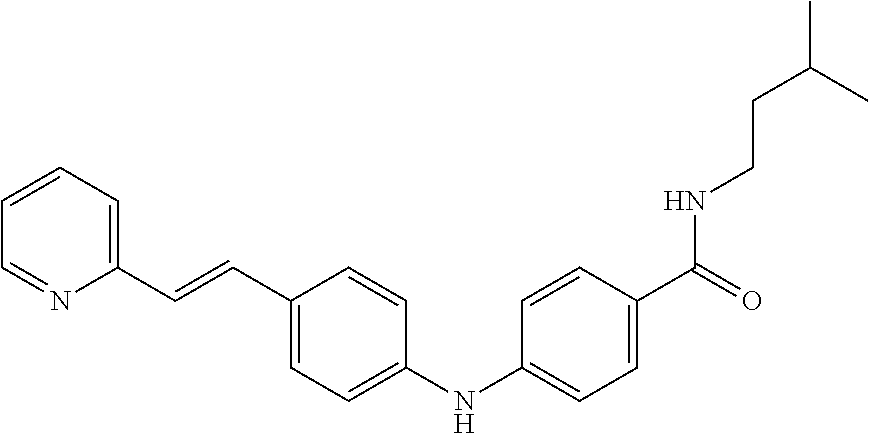
C00380

D00000
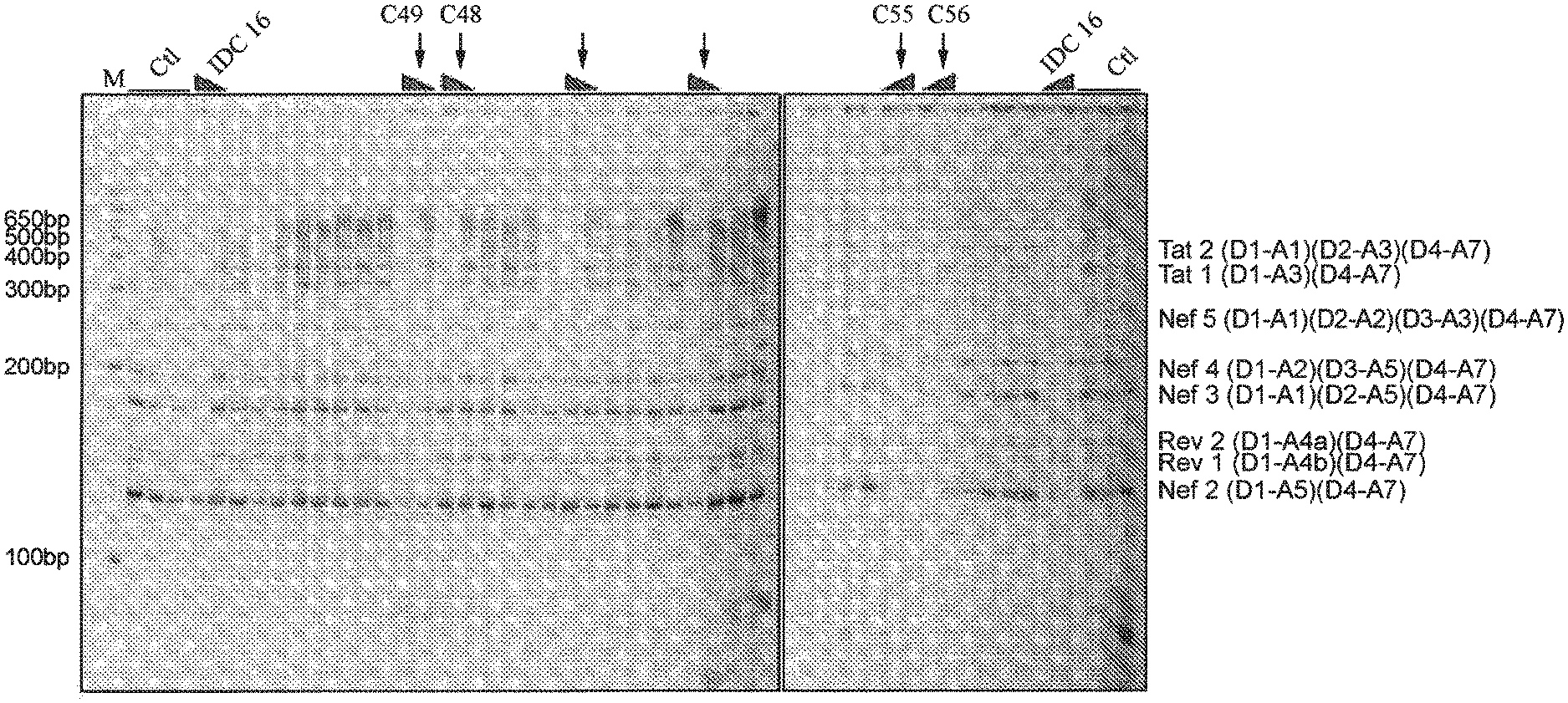
D00001
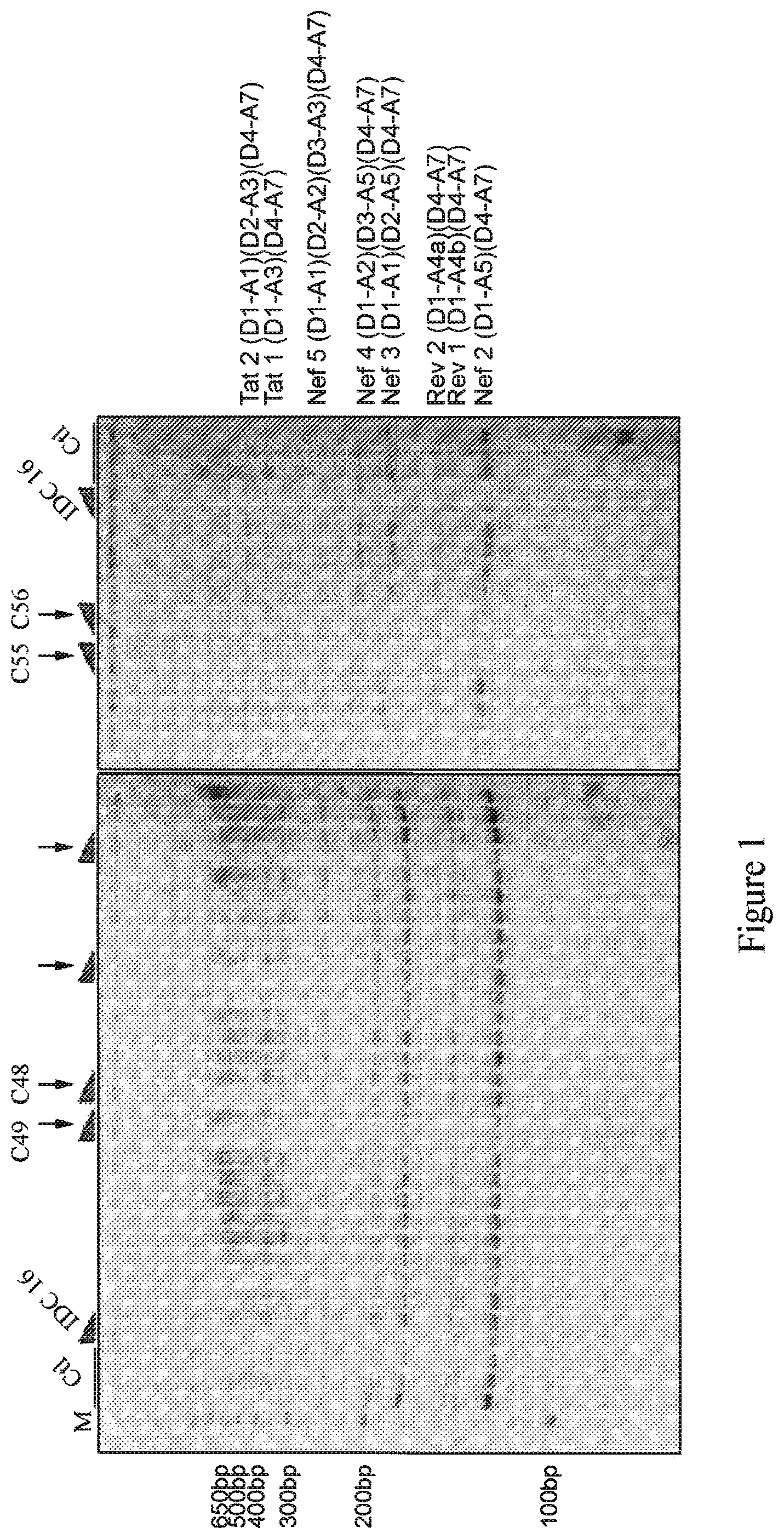
D00002
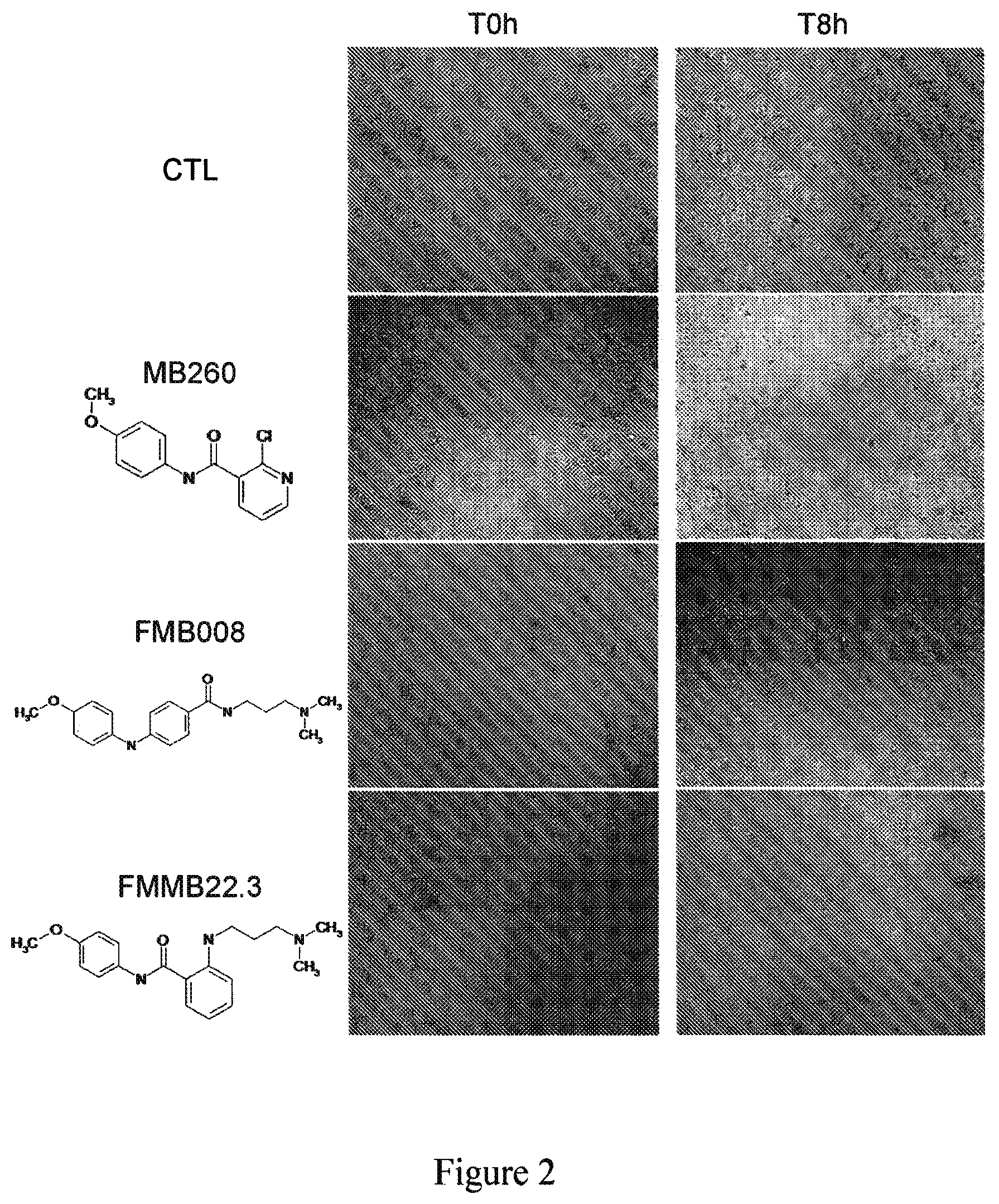
S00001
XML
uspto.report is an independent third-party trademark research tool that is not affiliated, endorsed, or sponsored by the United States Patent and Trademark Office (USPTO) or any other governmental organization. The information provided by uspto.report is based on publicly available data at the time of writing and is intended for informational purposes only.
While we strive to provide accurate and up-to-date information, we do not guarantee the accuracy, completeness, reliability, or suitability of the information displayed on this site. The use of this site is at your own risk. Any reliance you place on such information is therefore strictly at your own risk.
All official trademark data, including owner information, should be verified by visiting the official USPTO website at www.uspto.gov. This site is not intended to replace professional legal advice and should not be used as a substitute for consulting with a legal professional who is knowledgeable about trademark law.